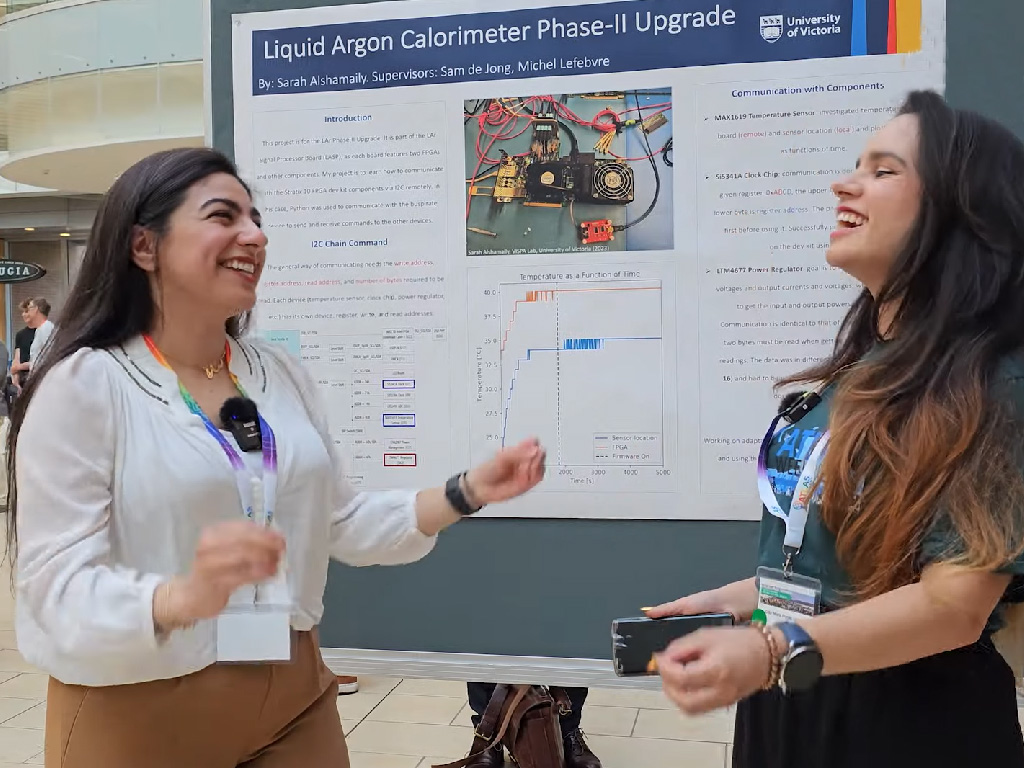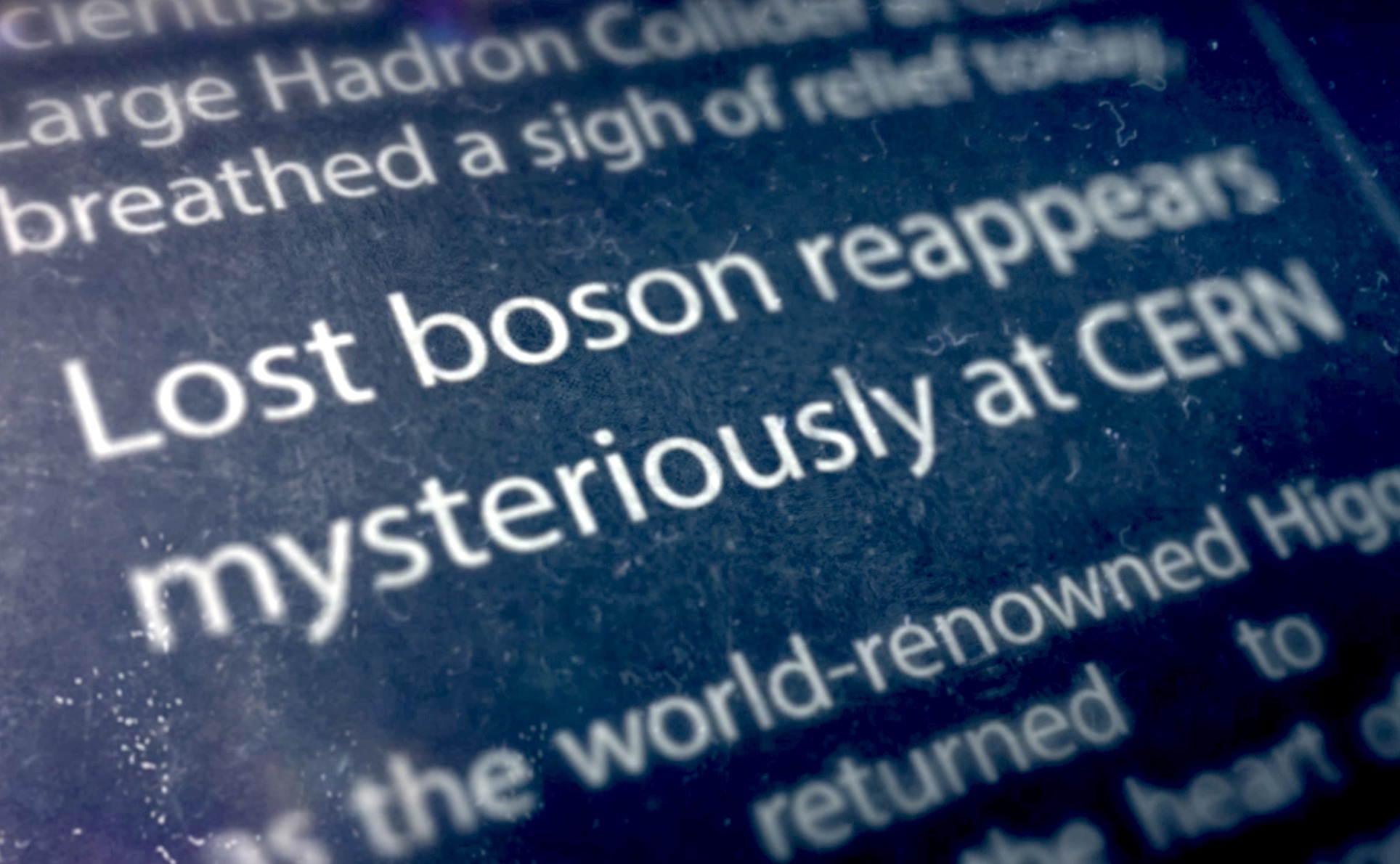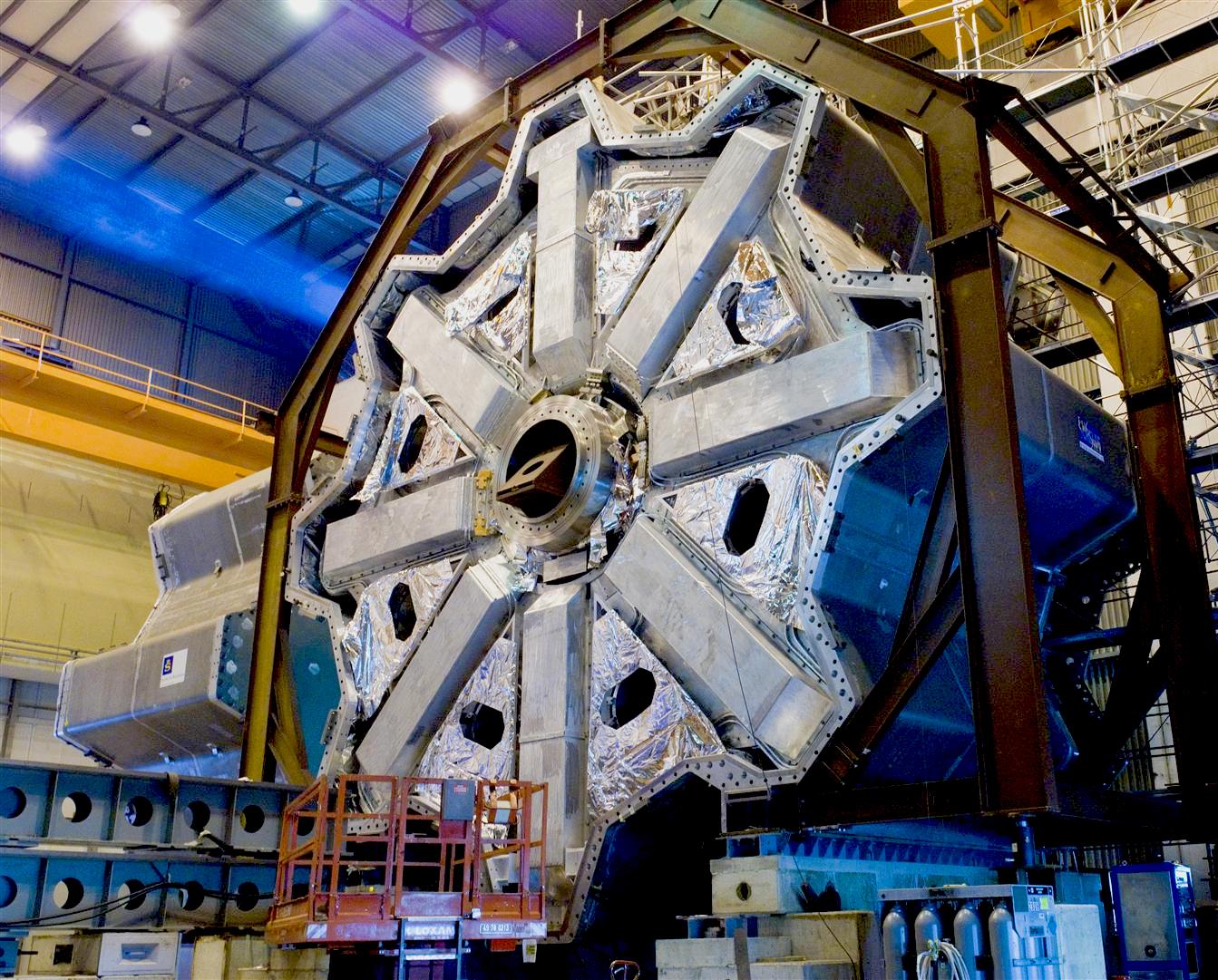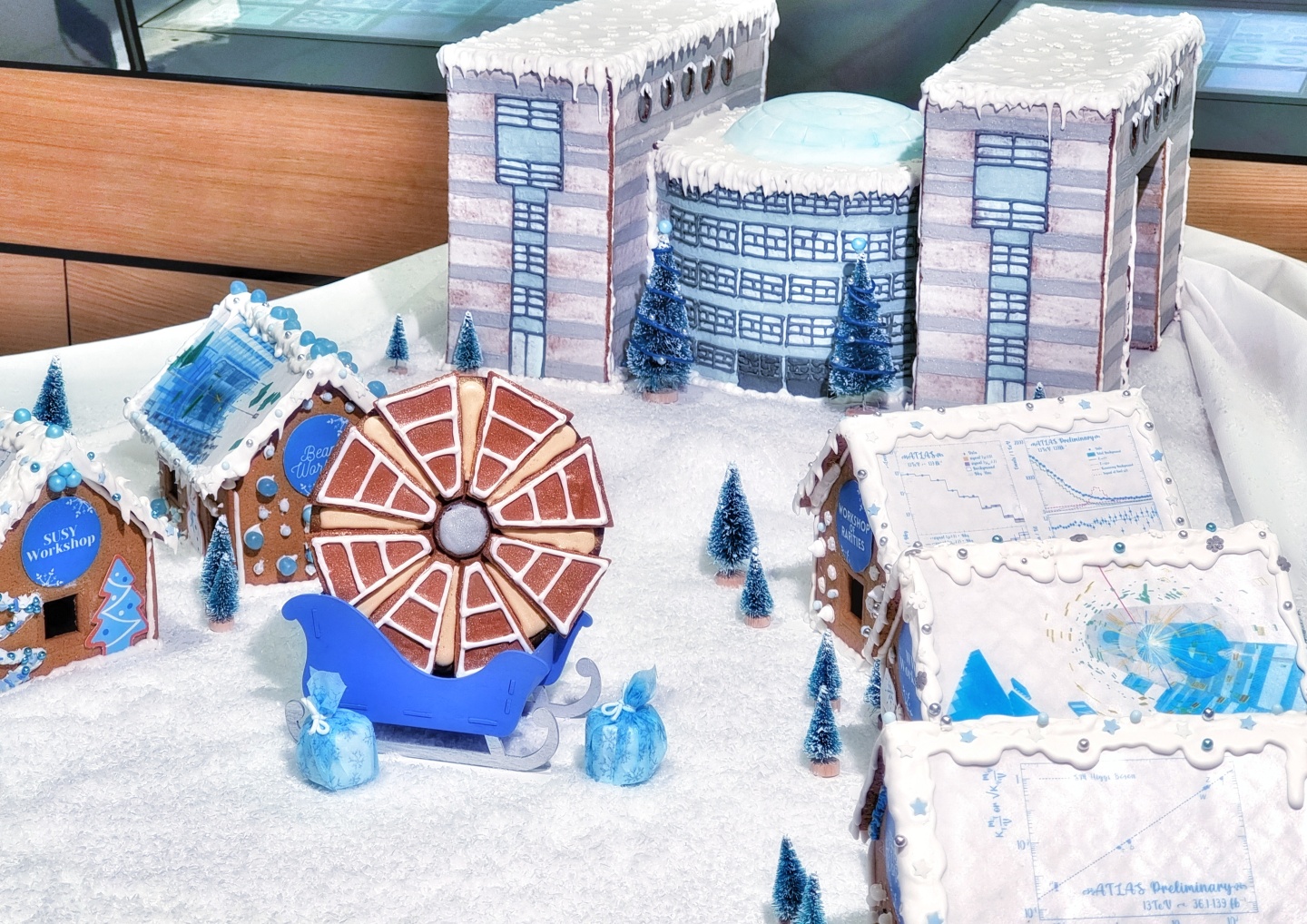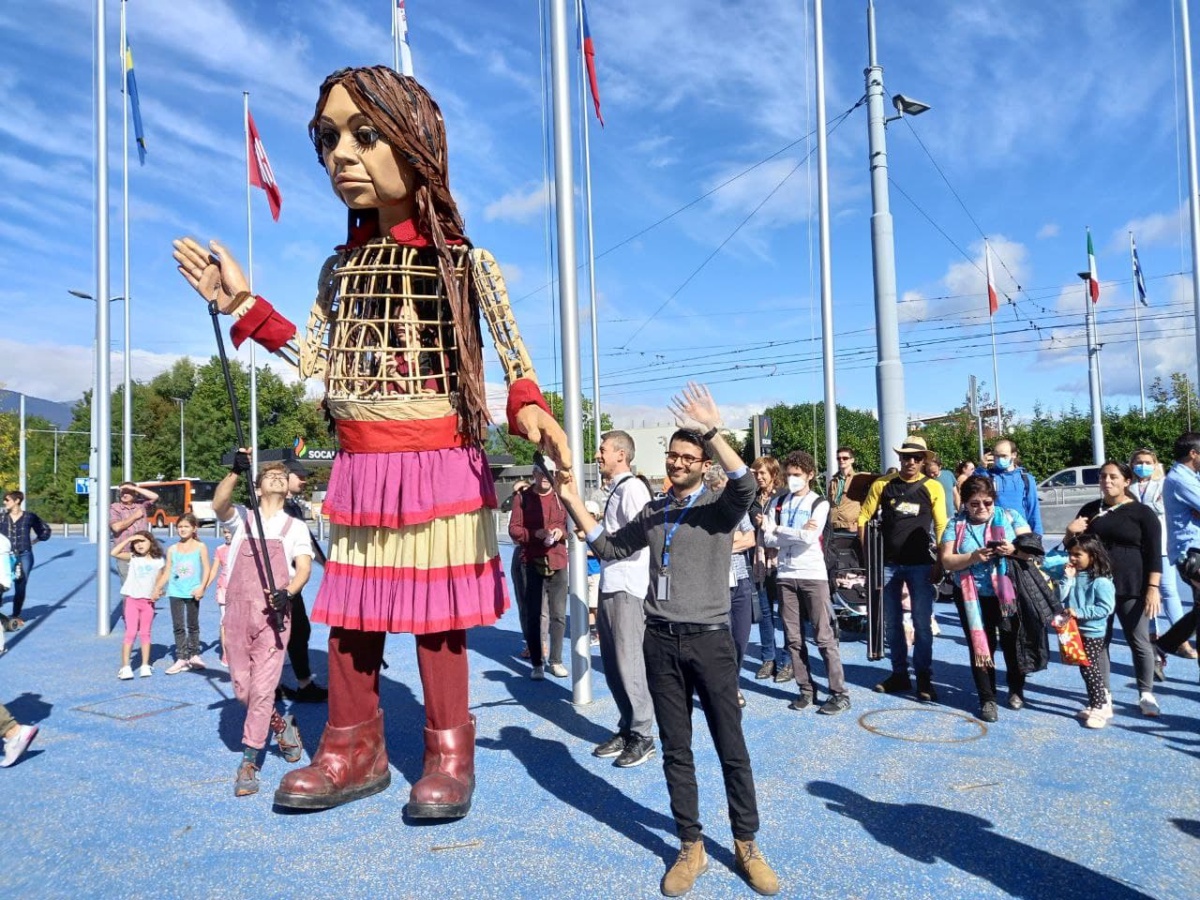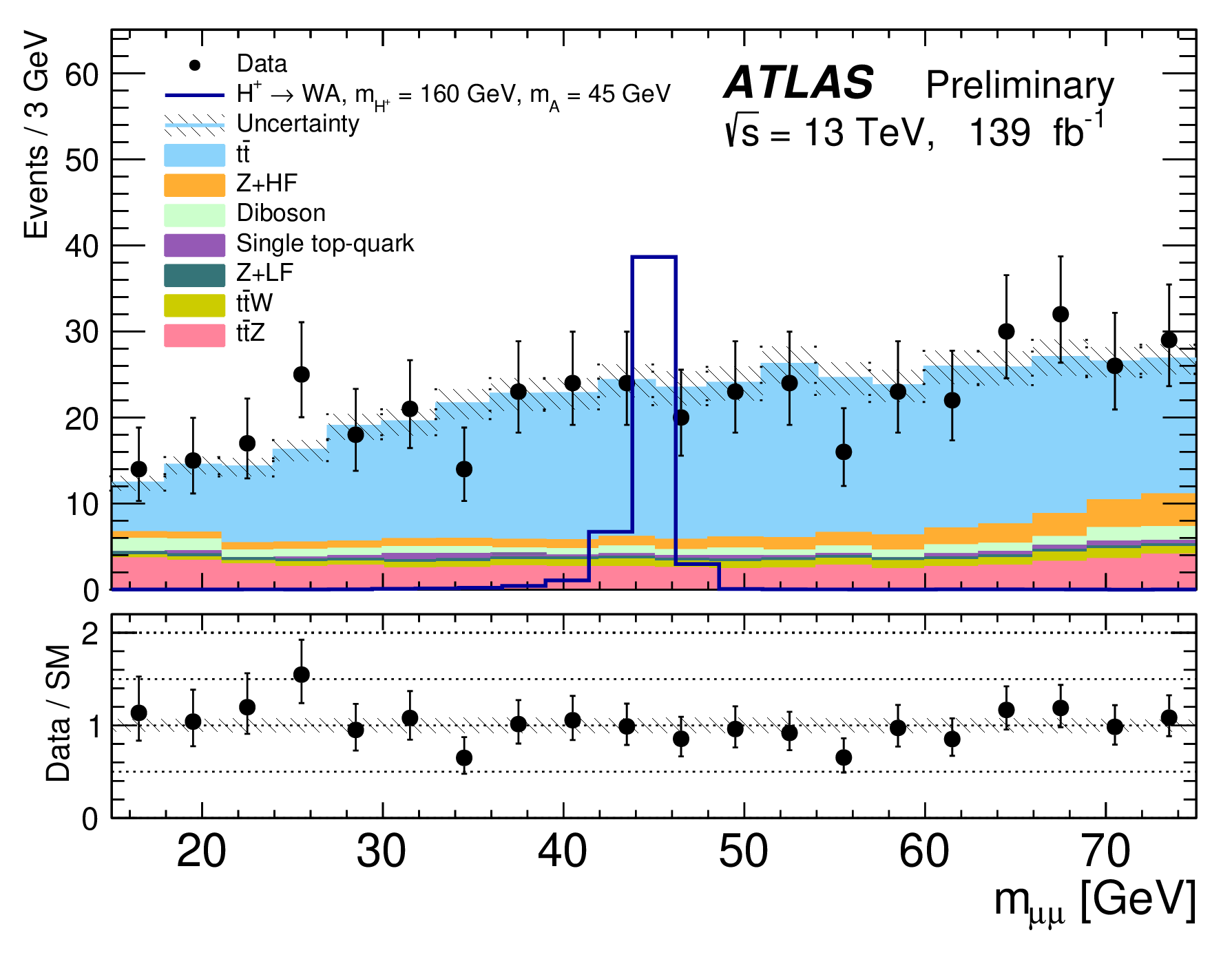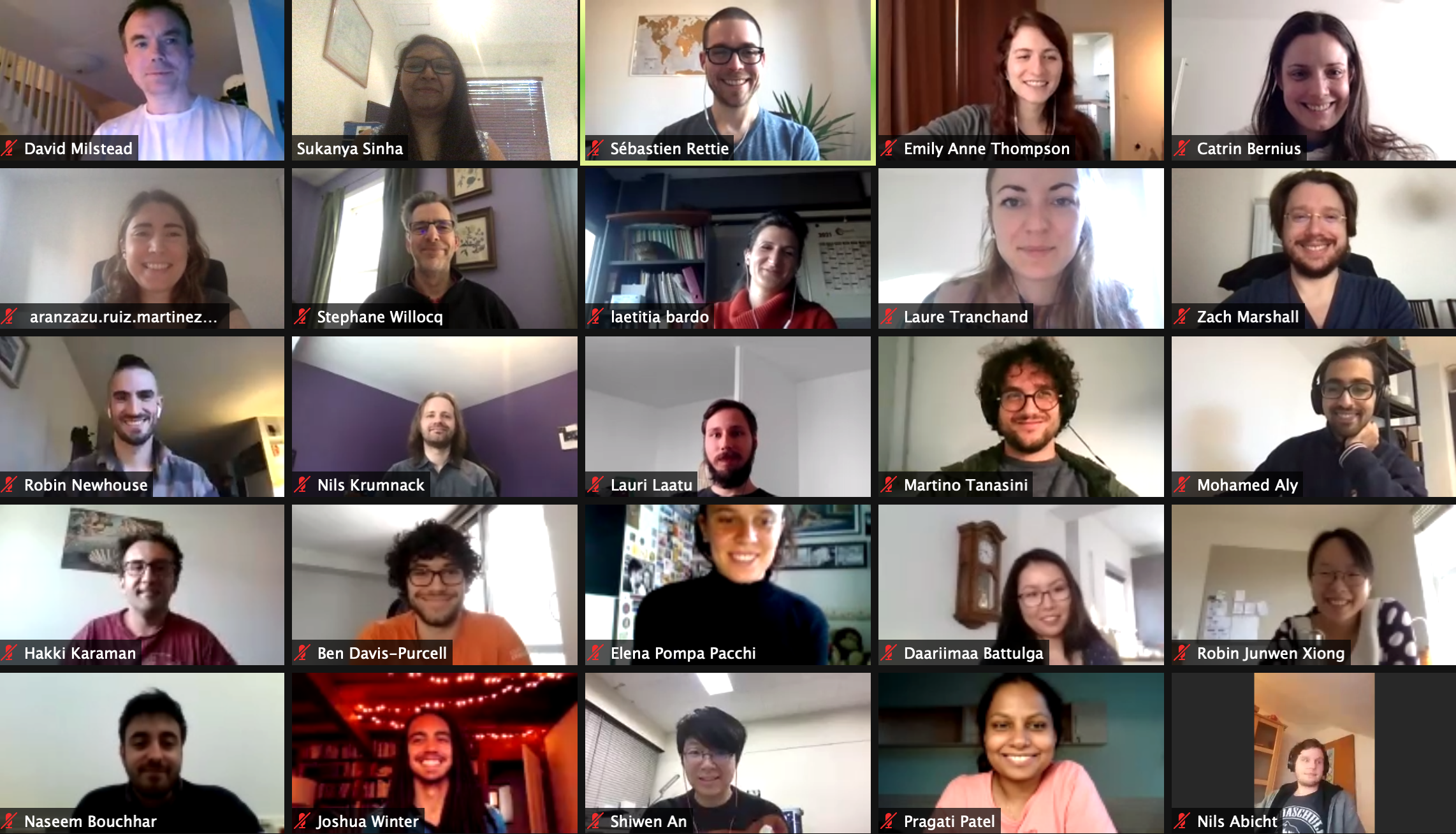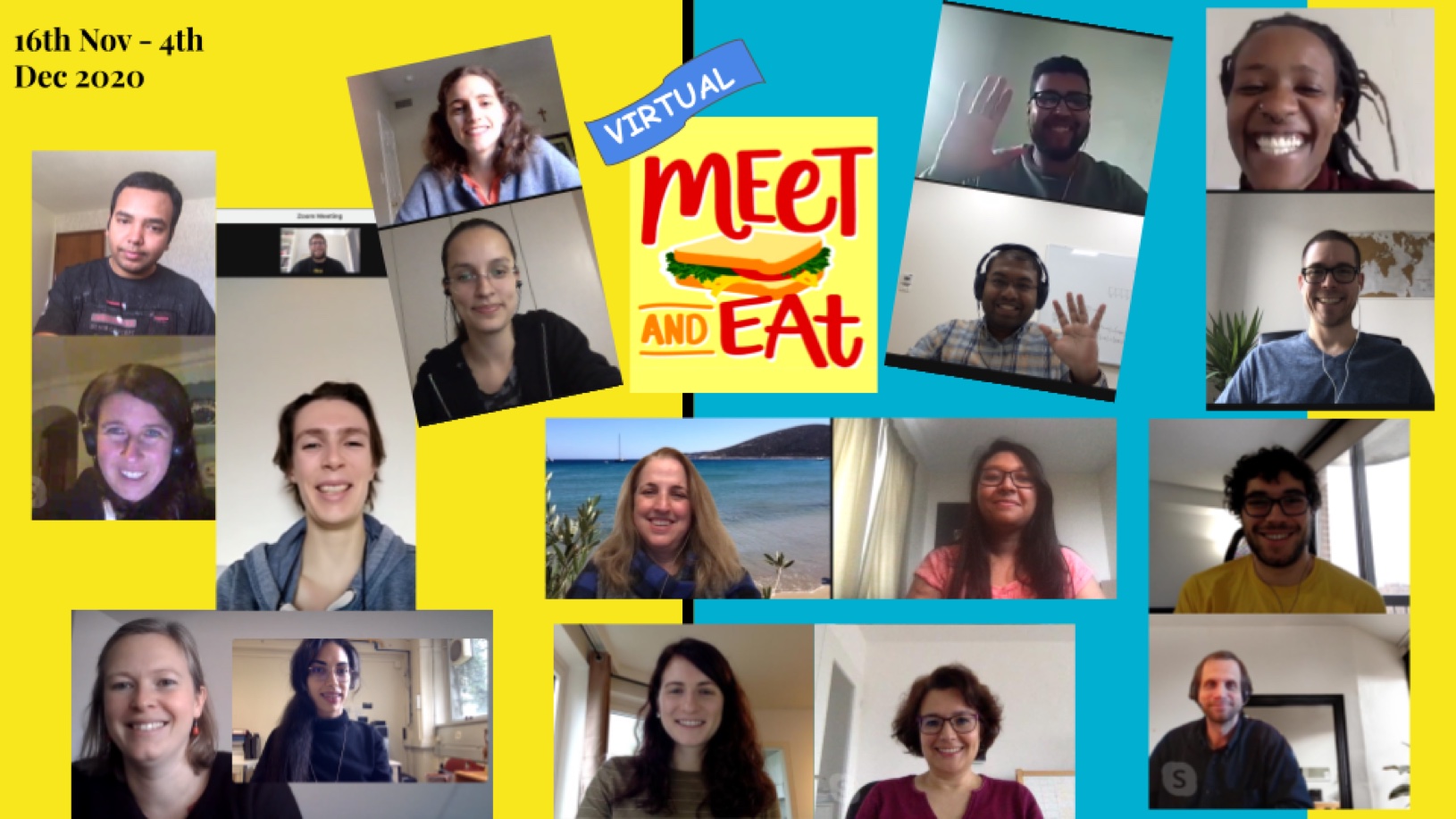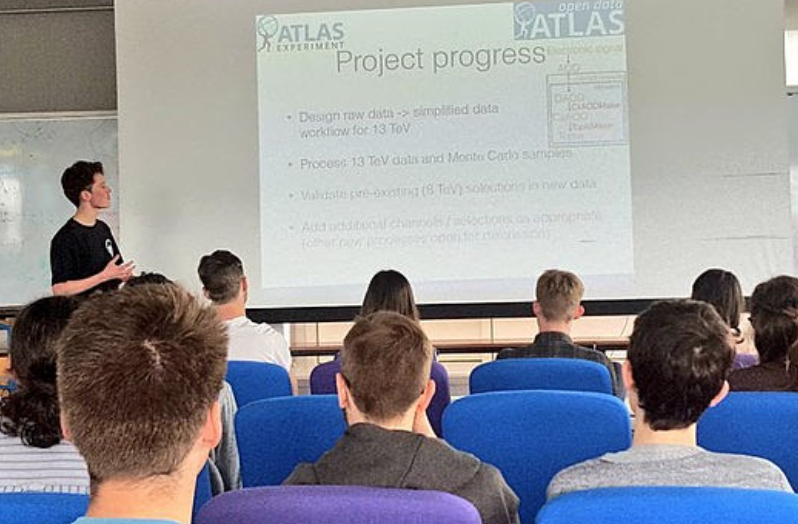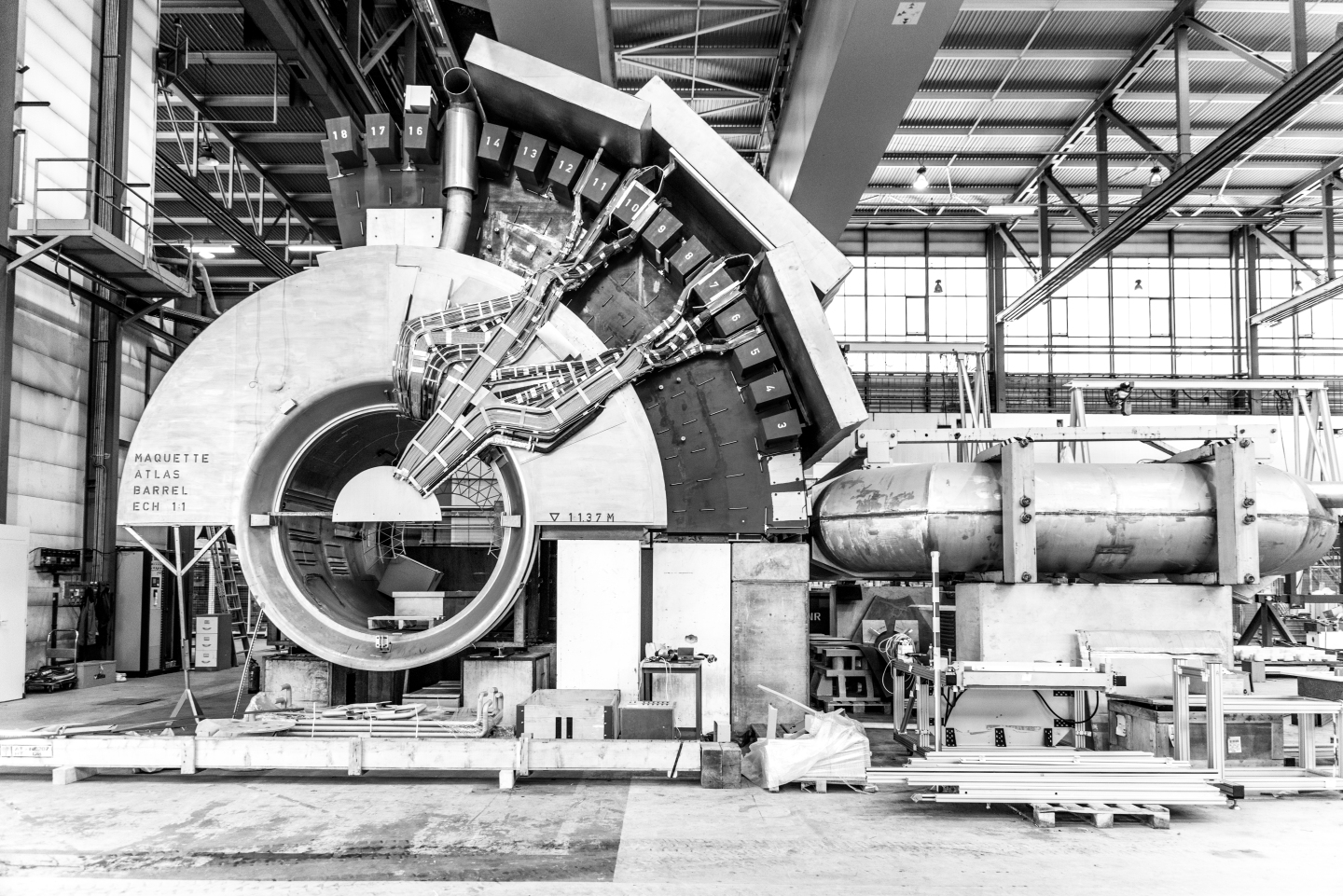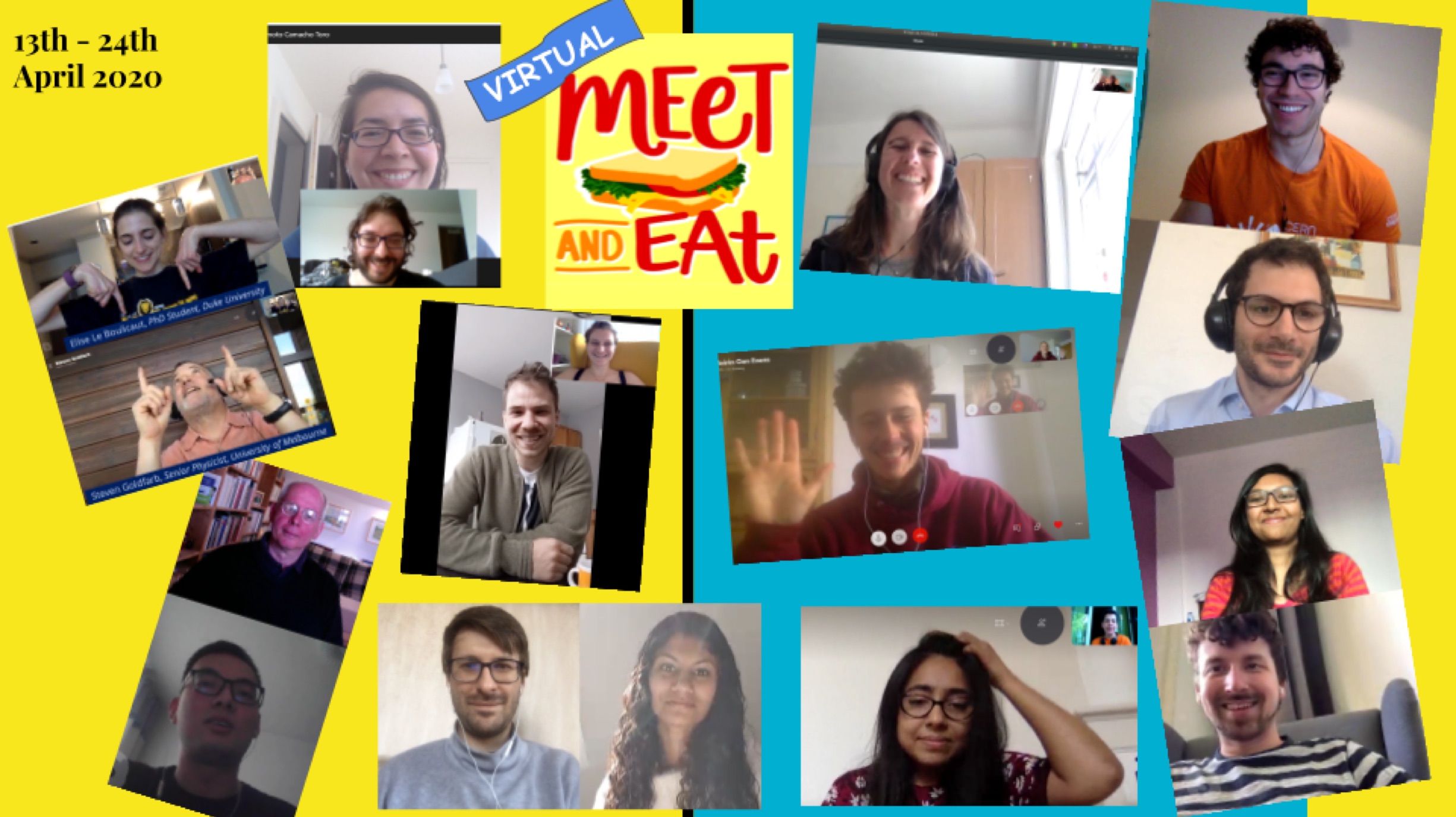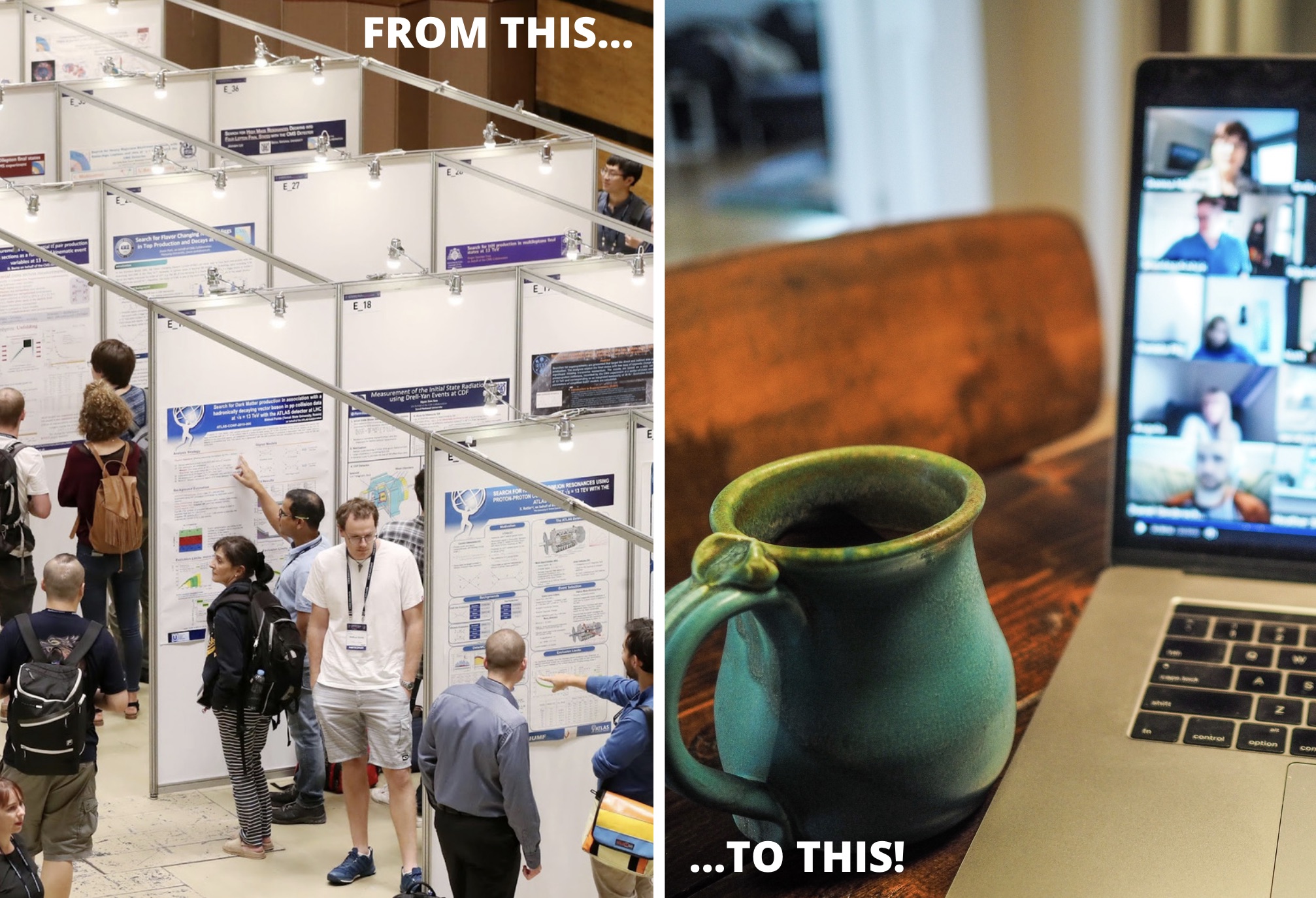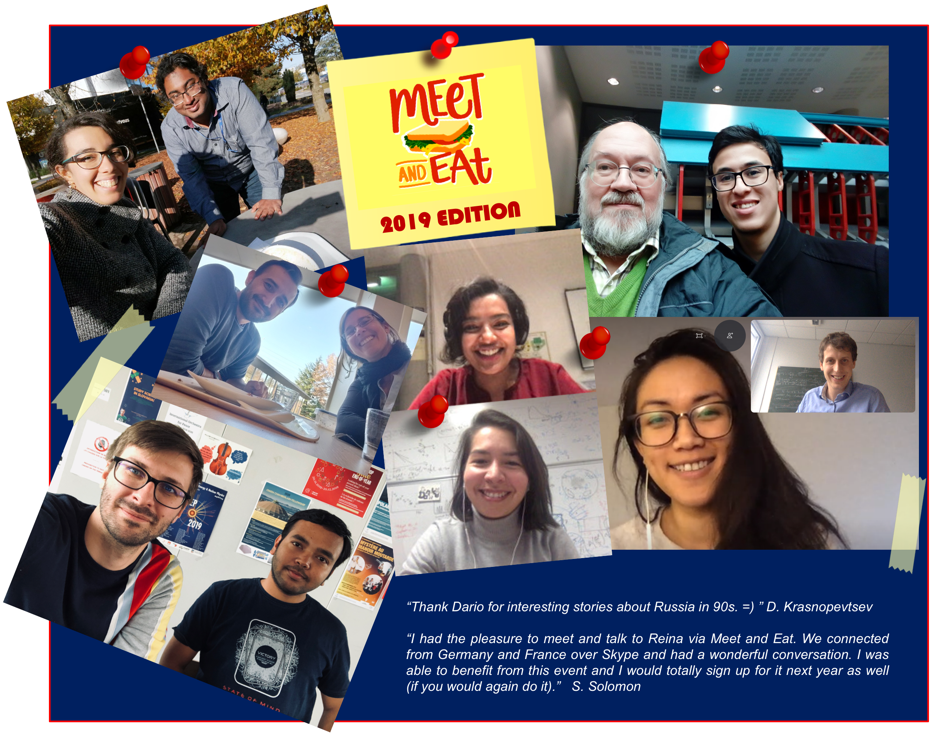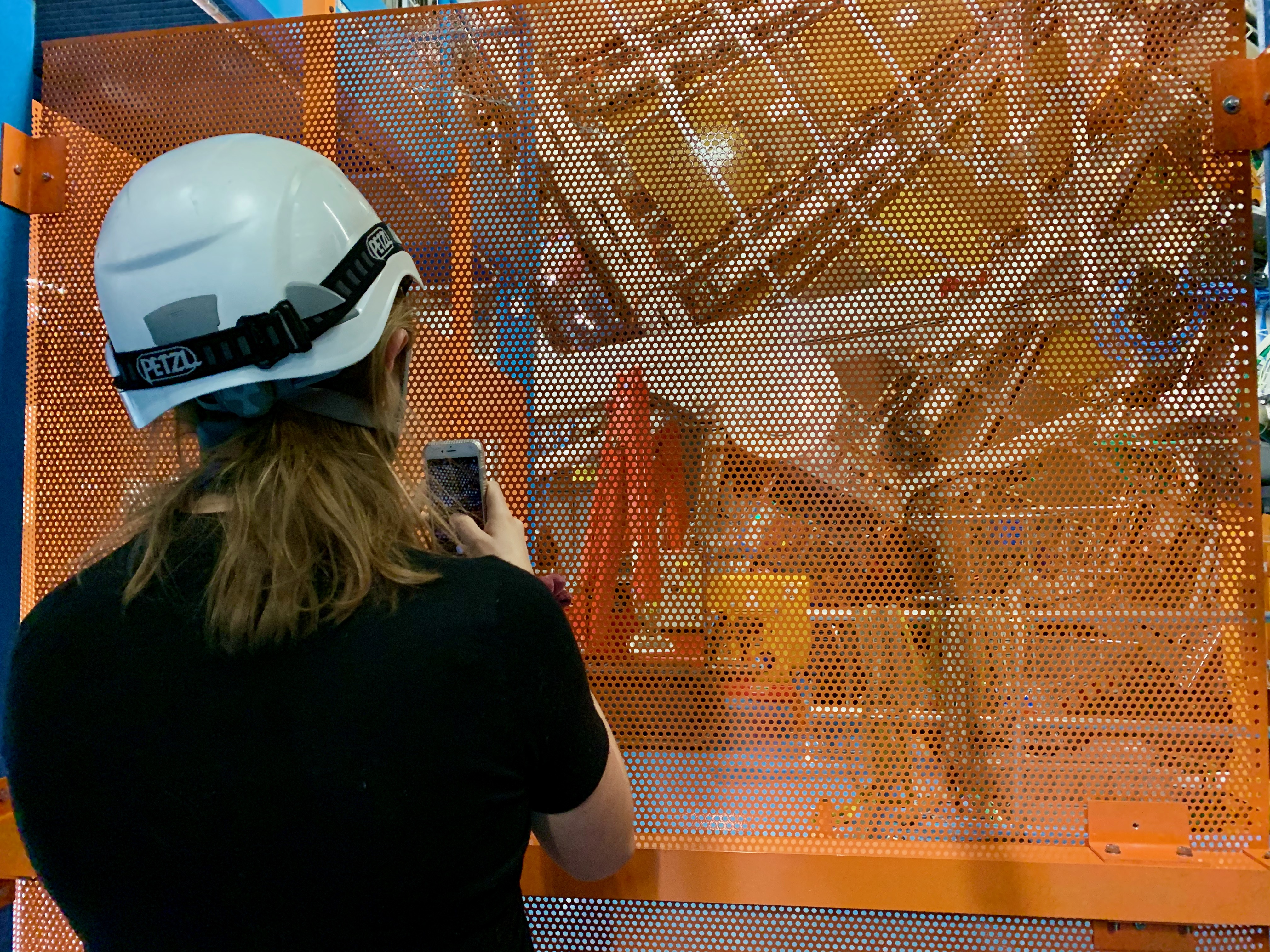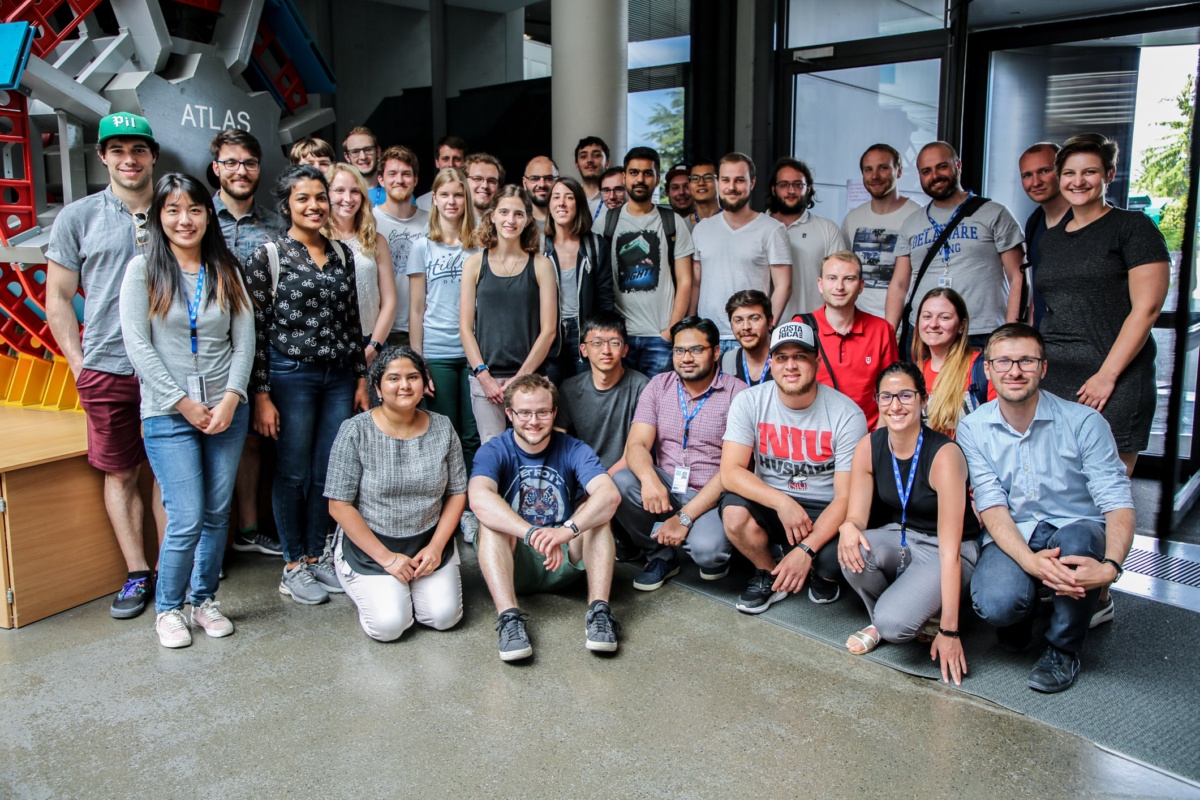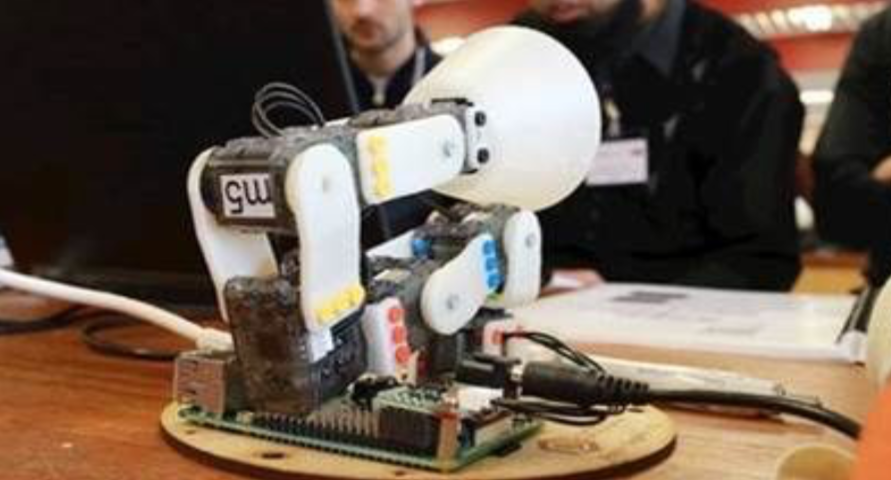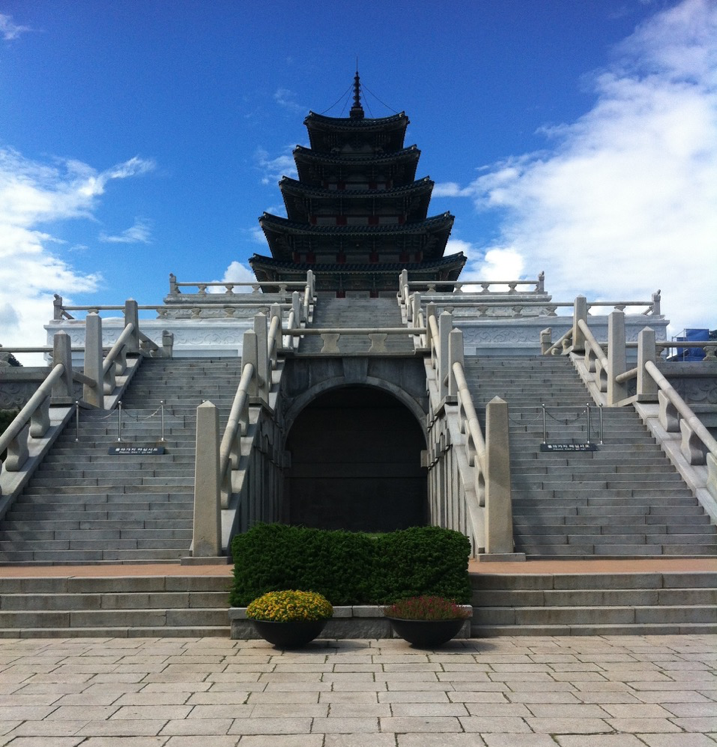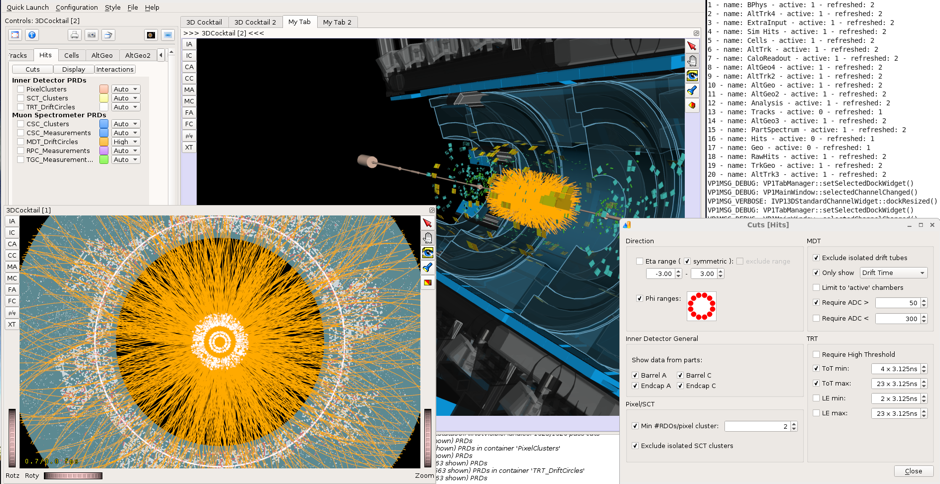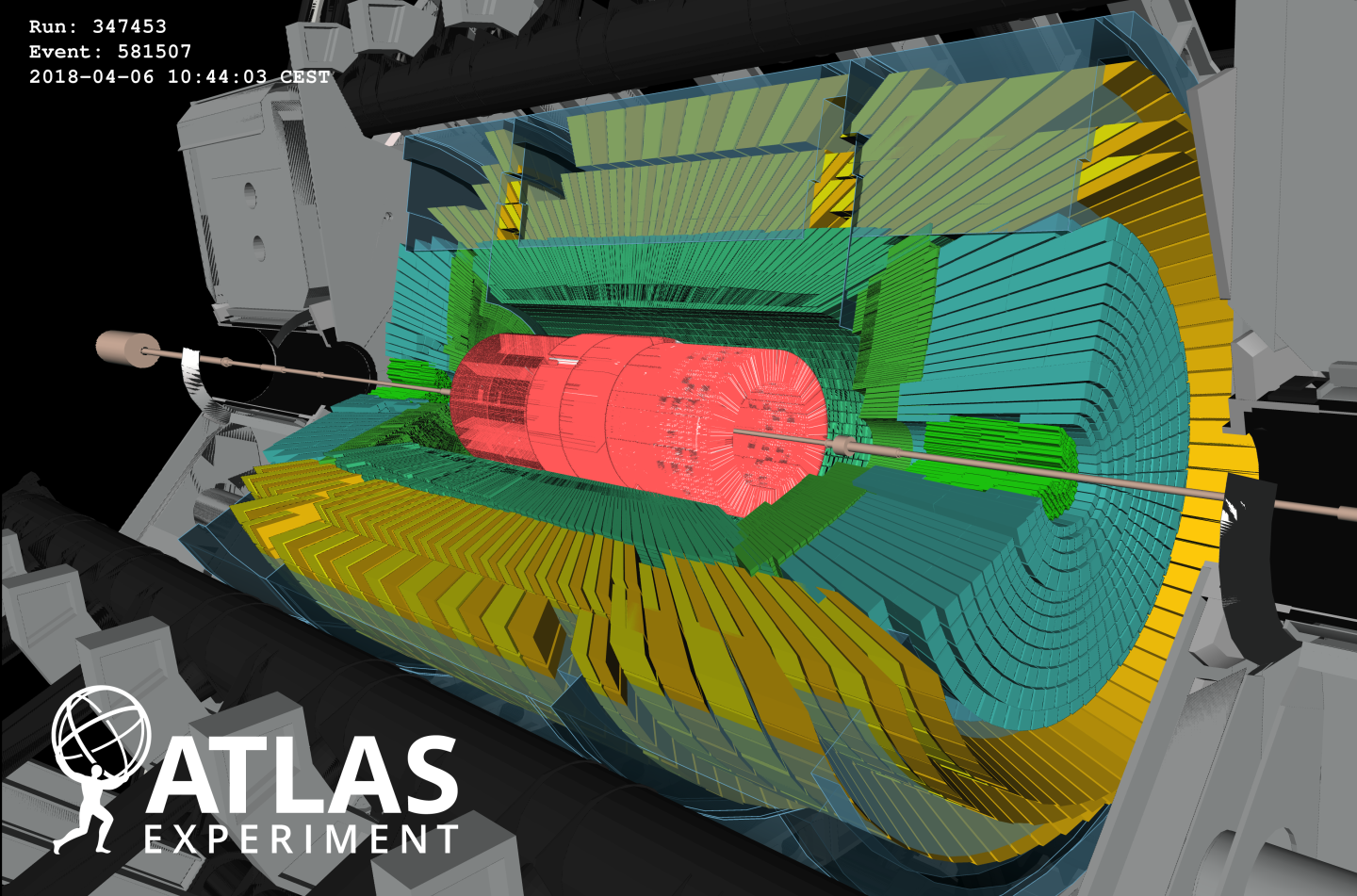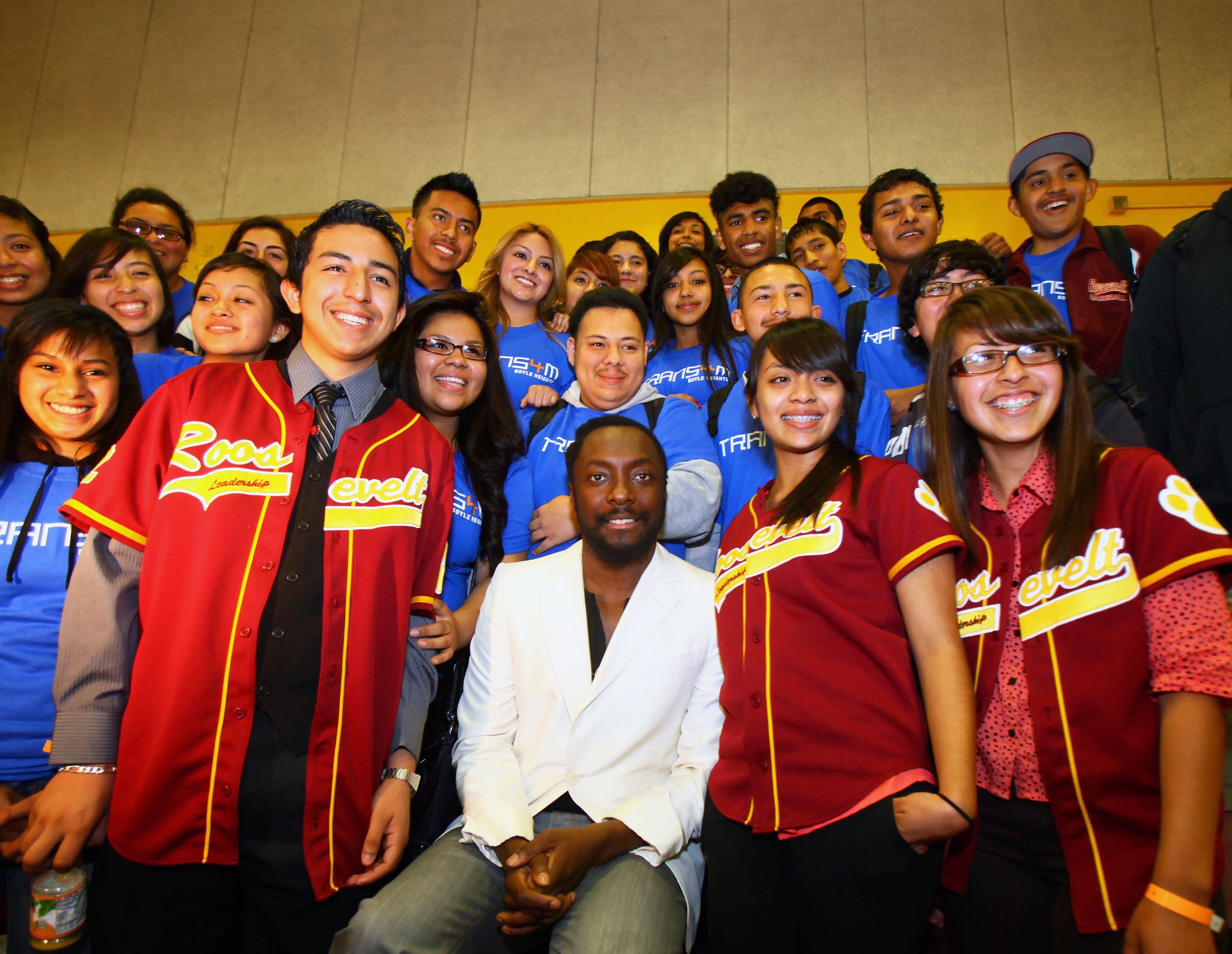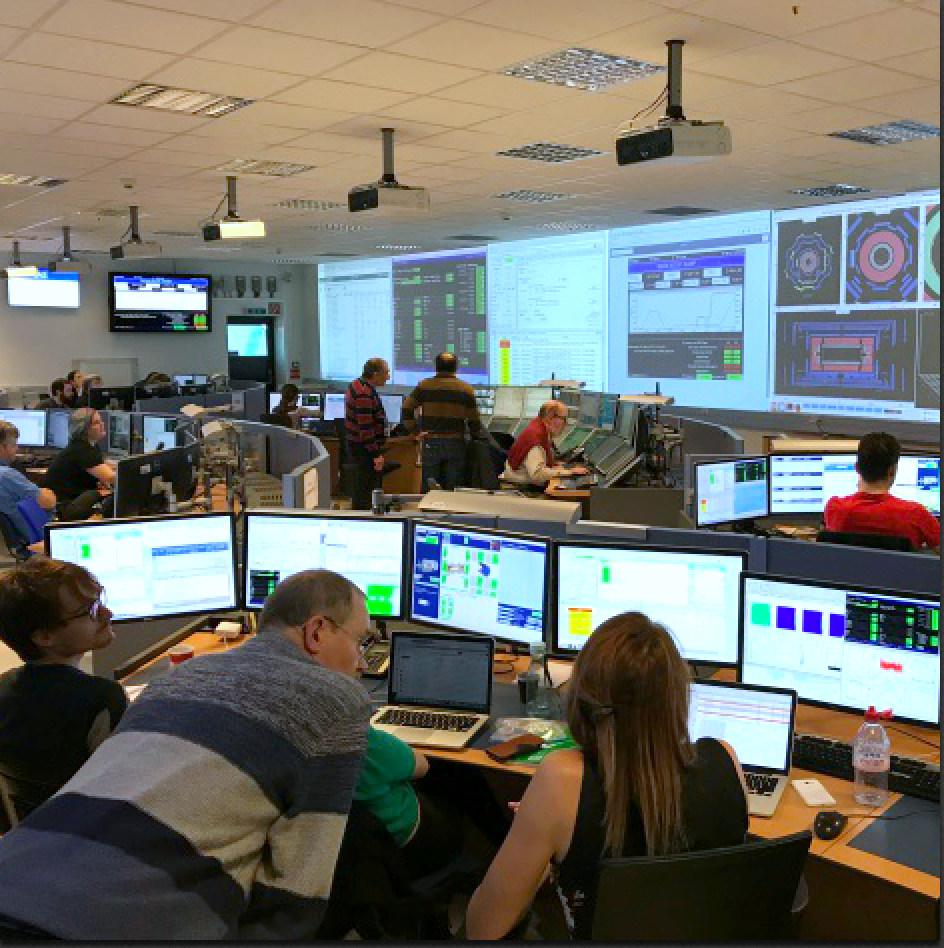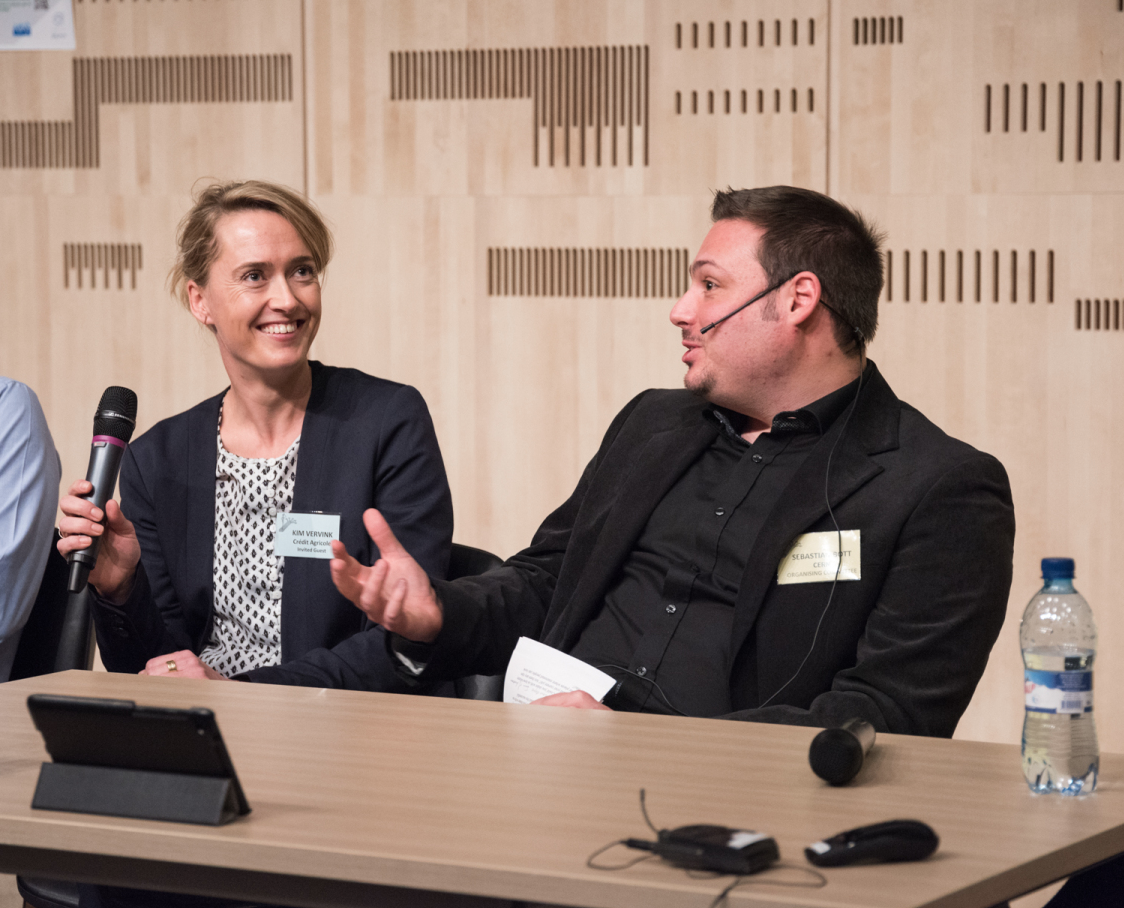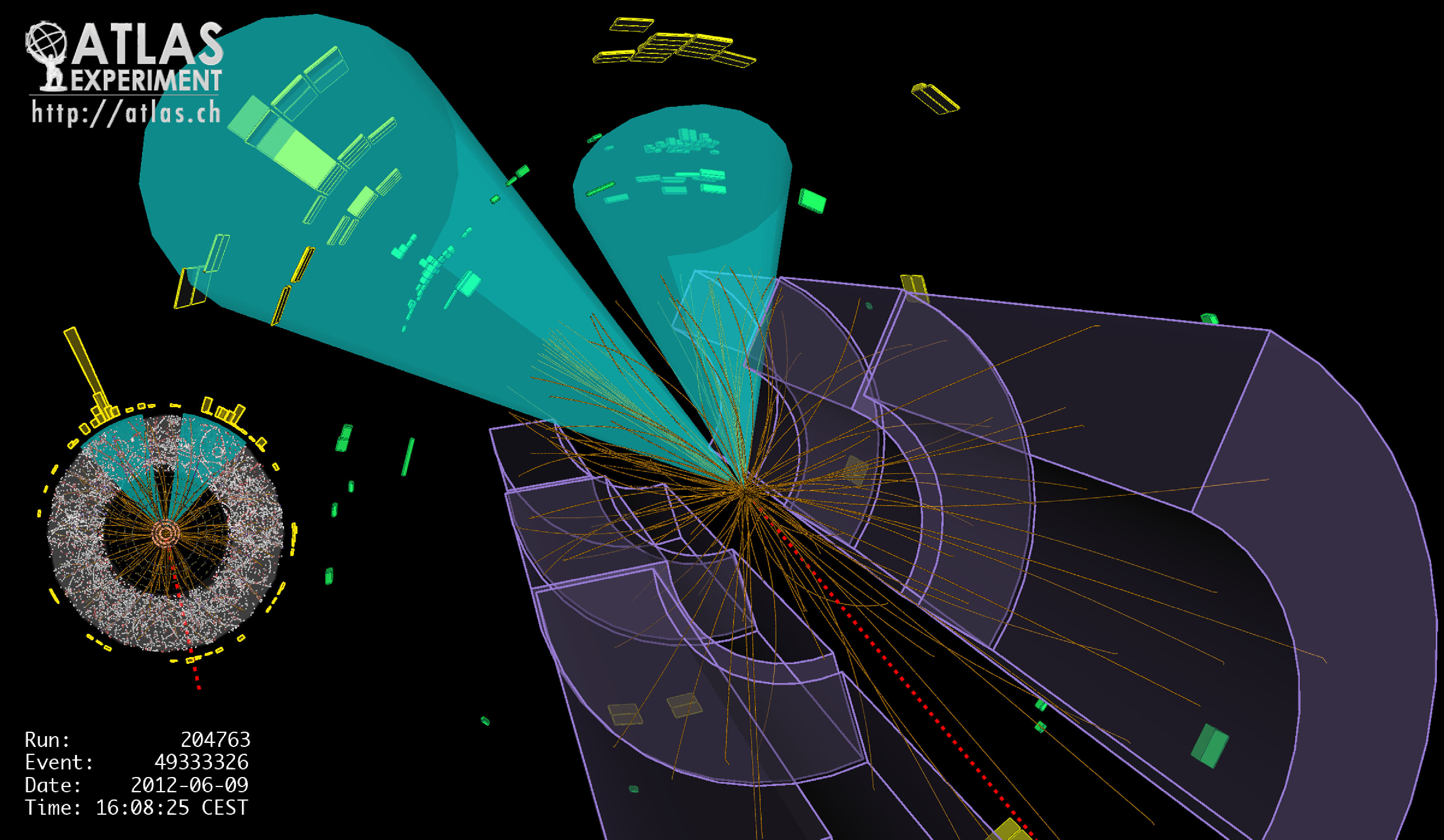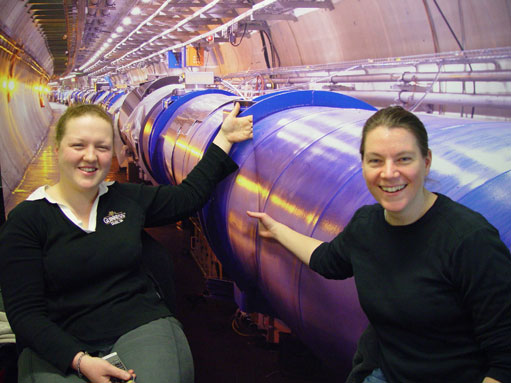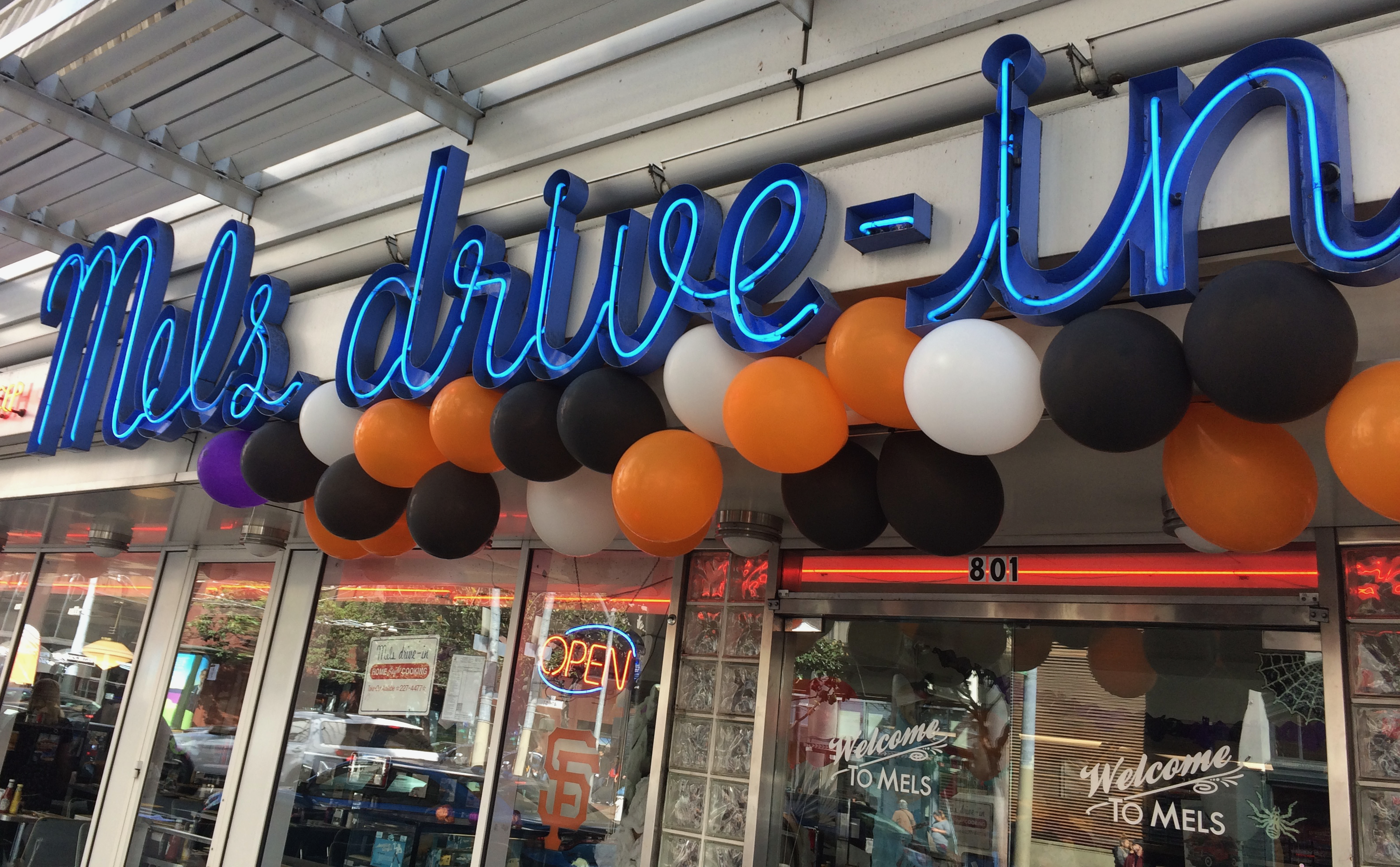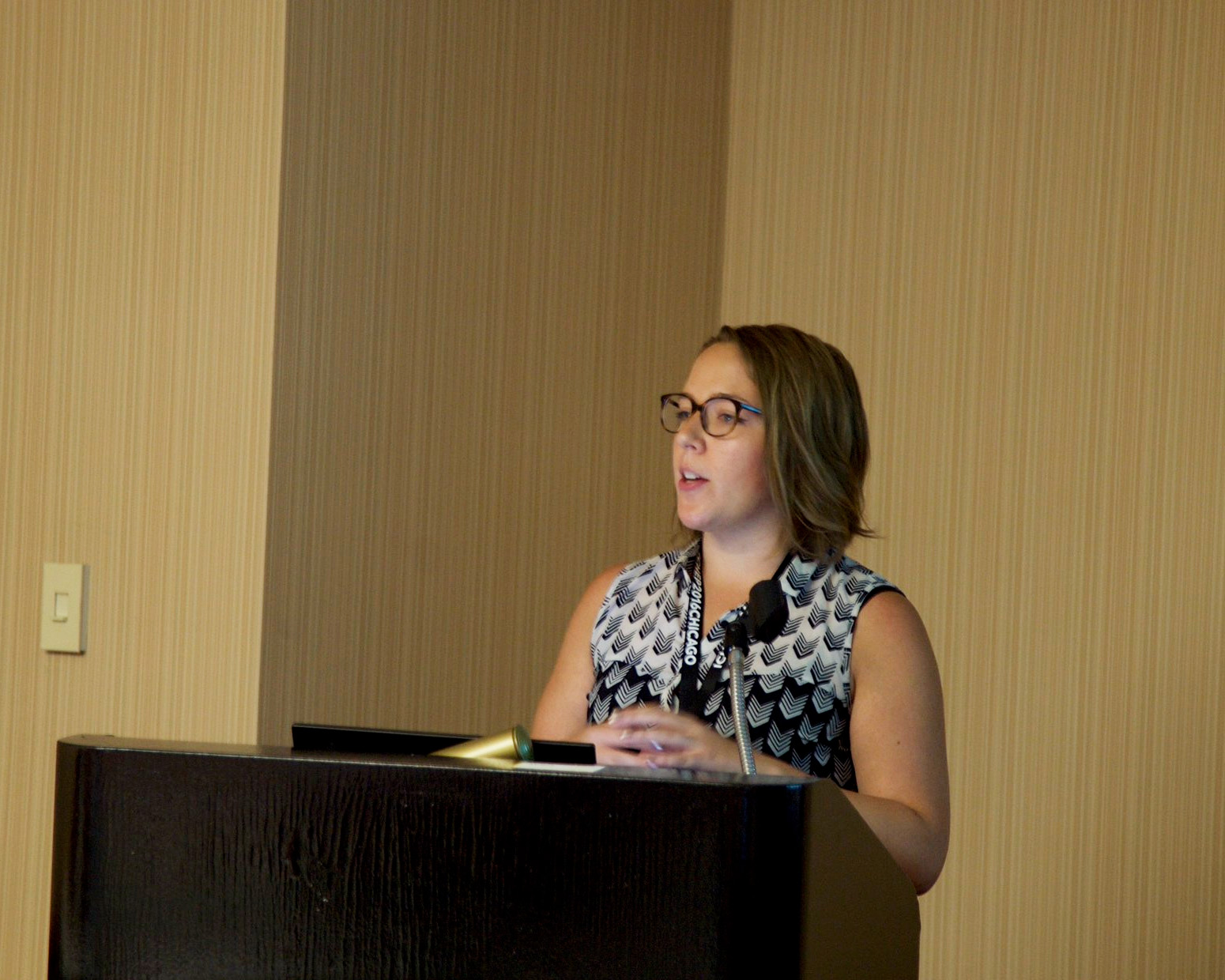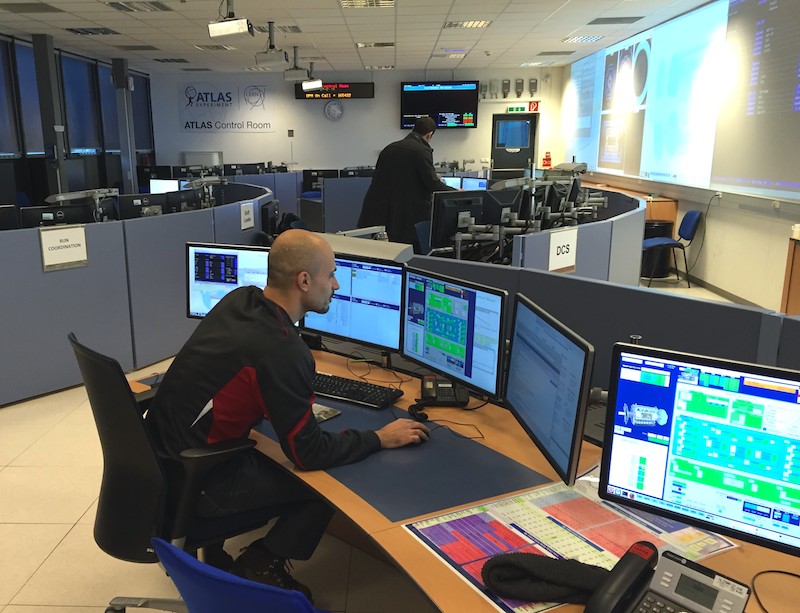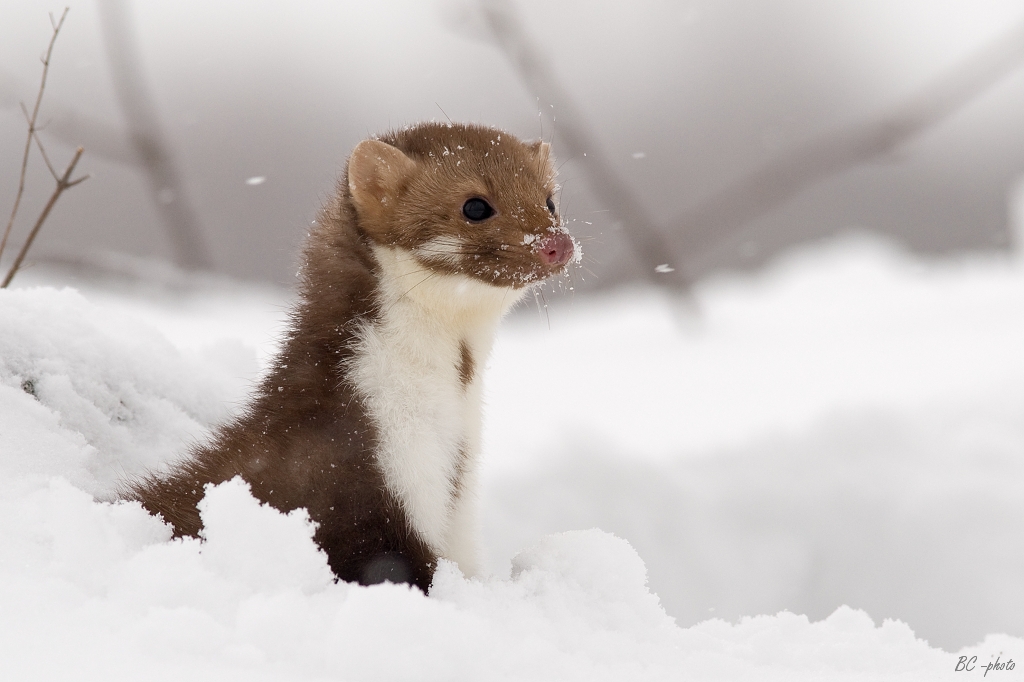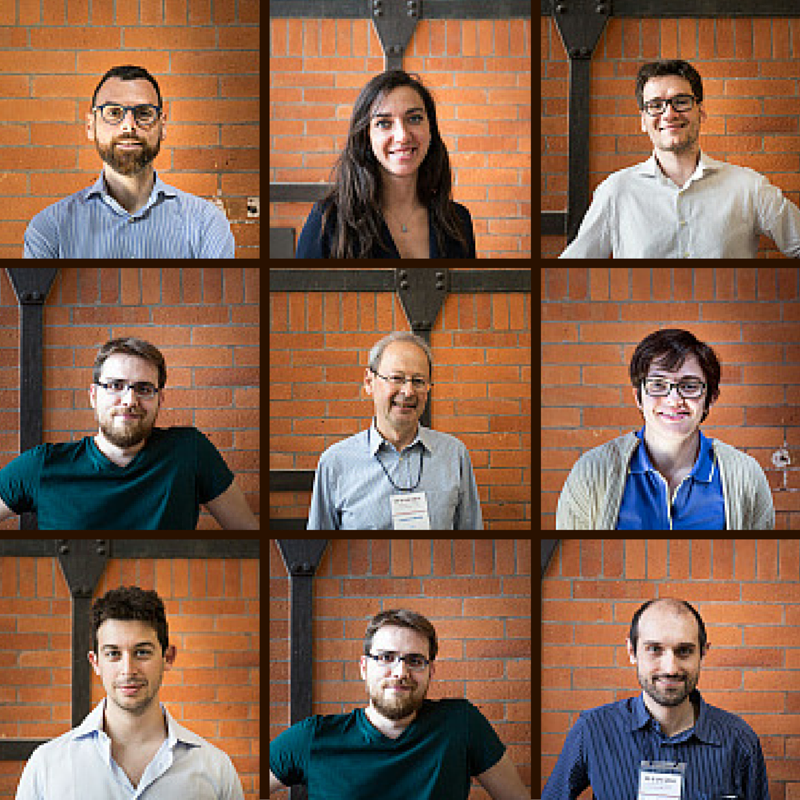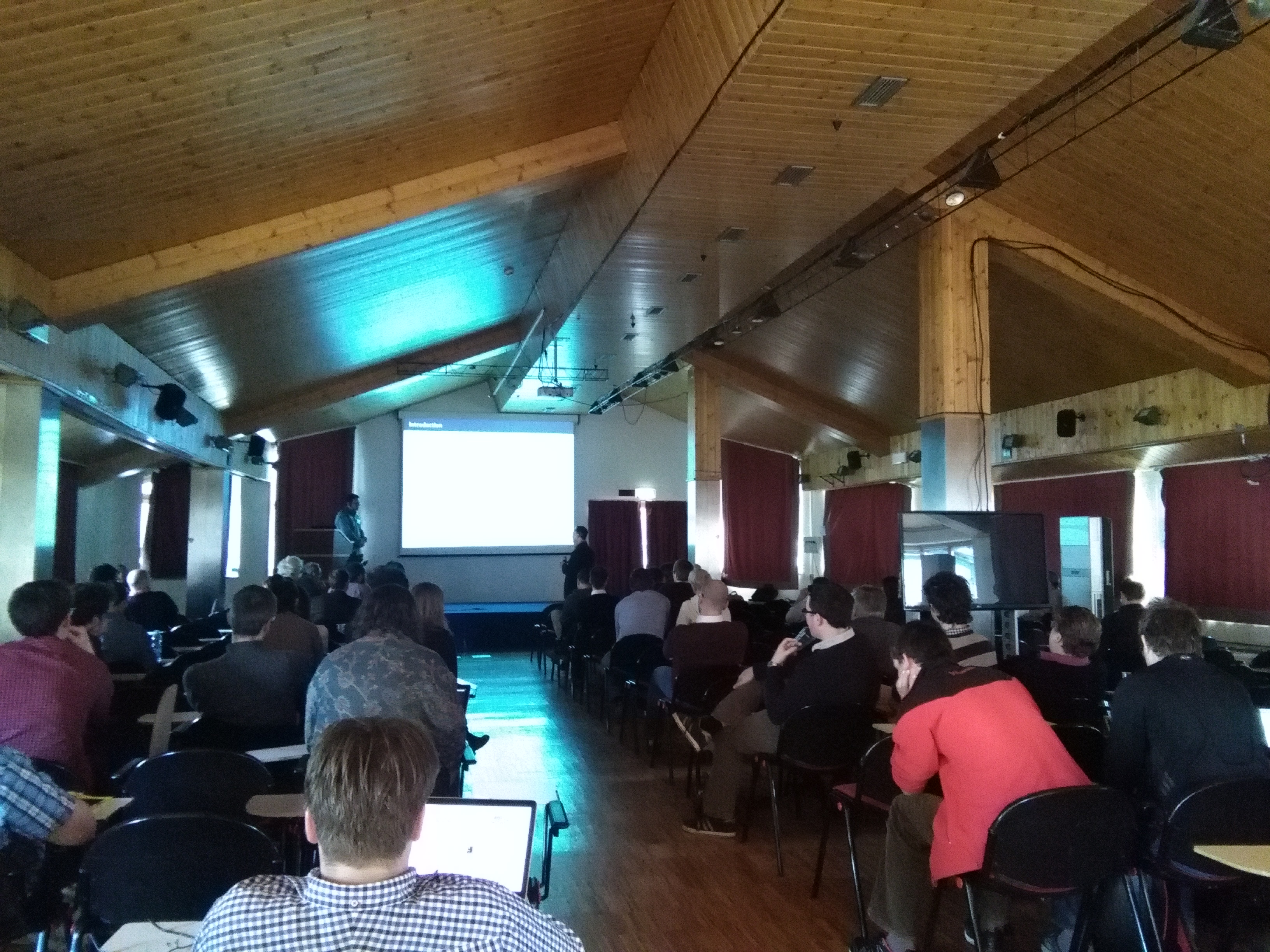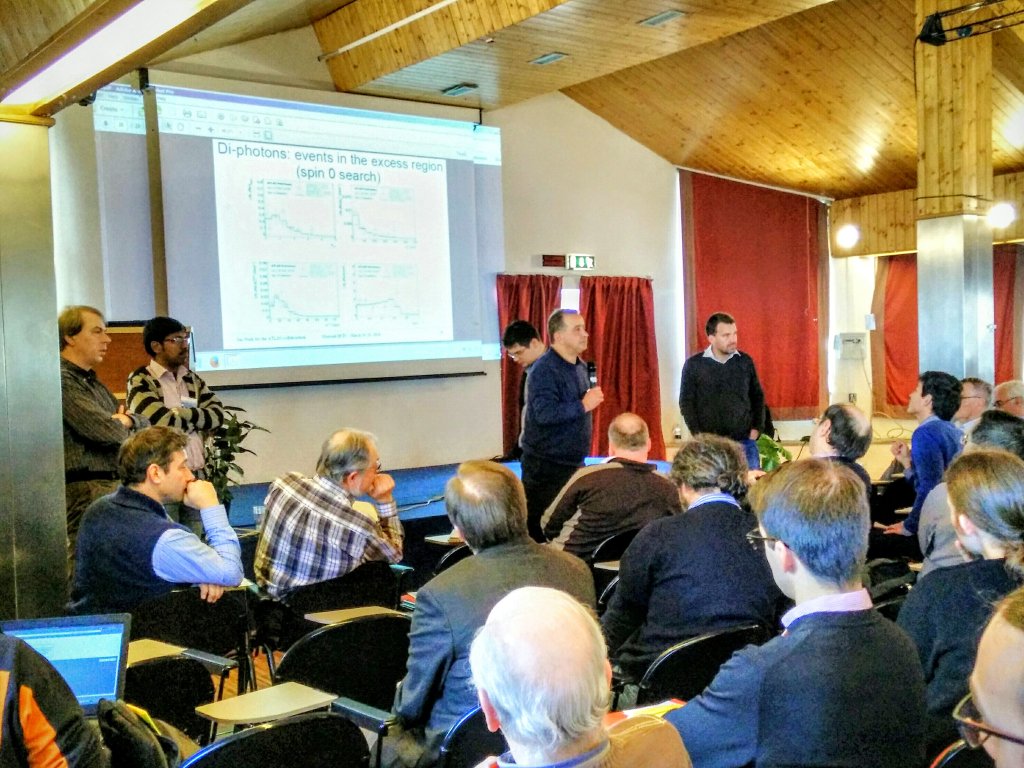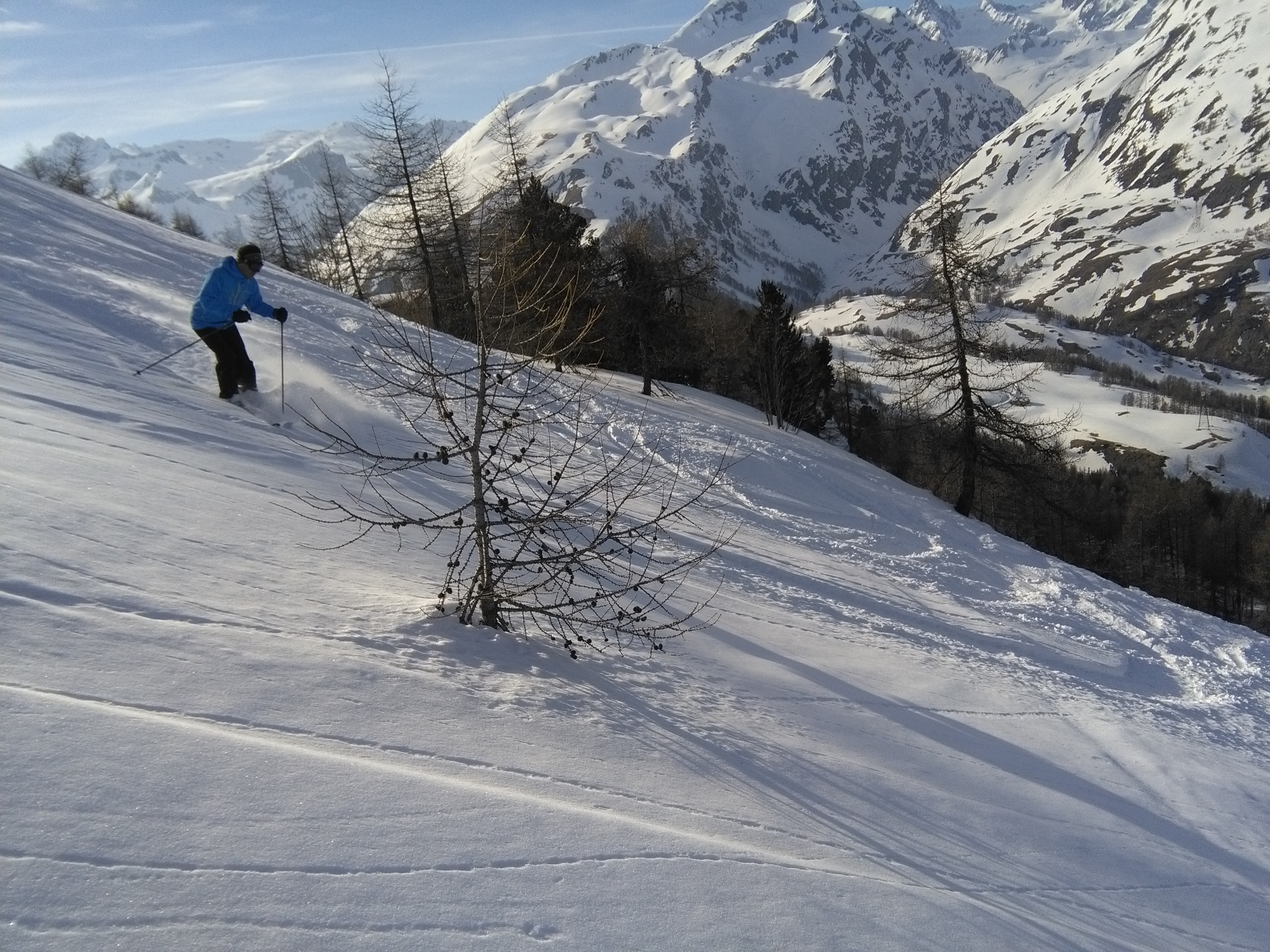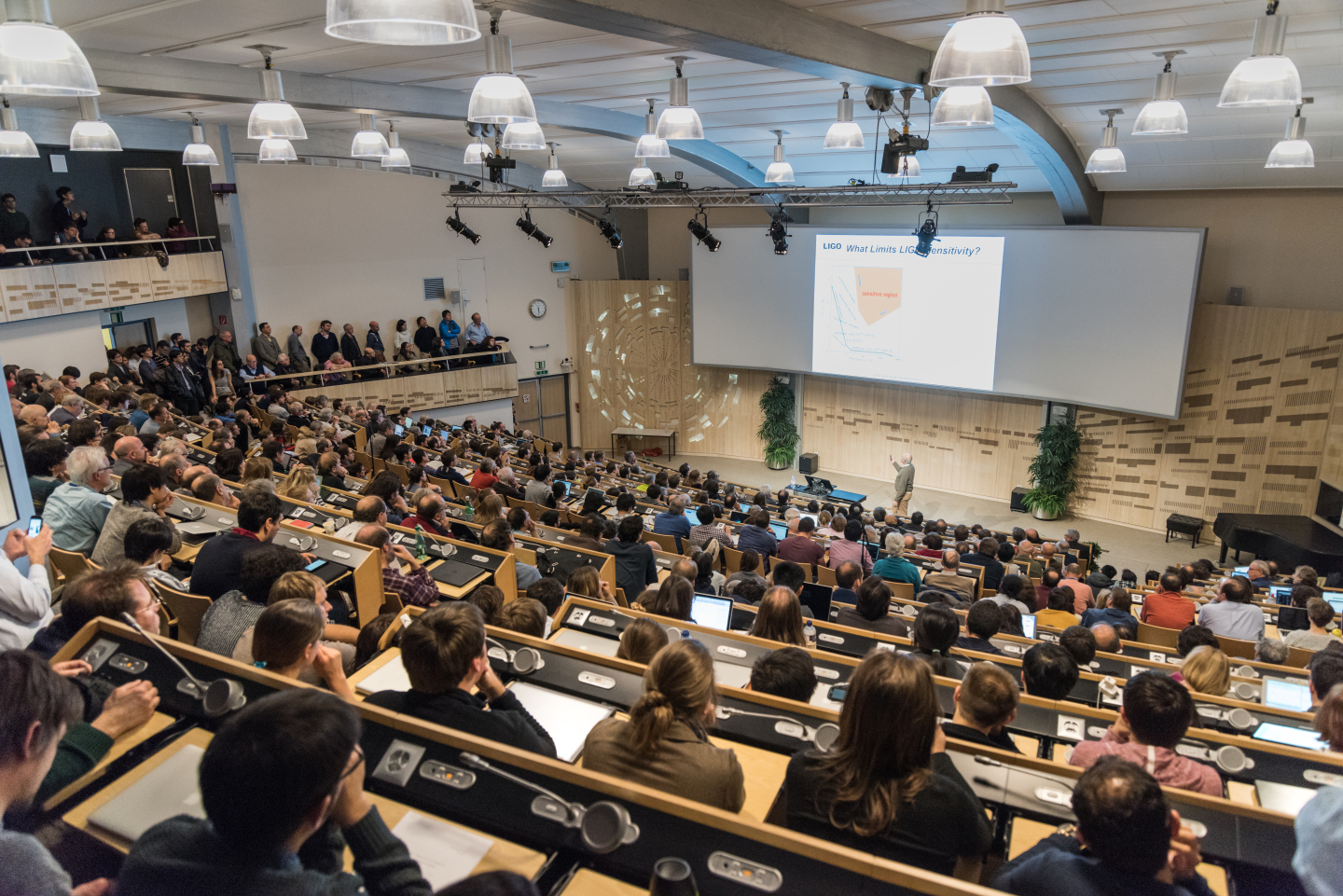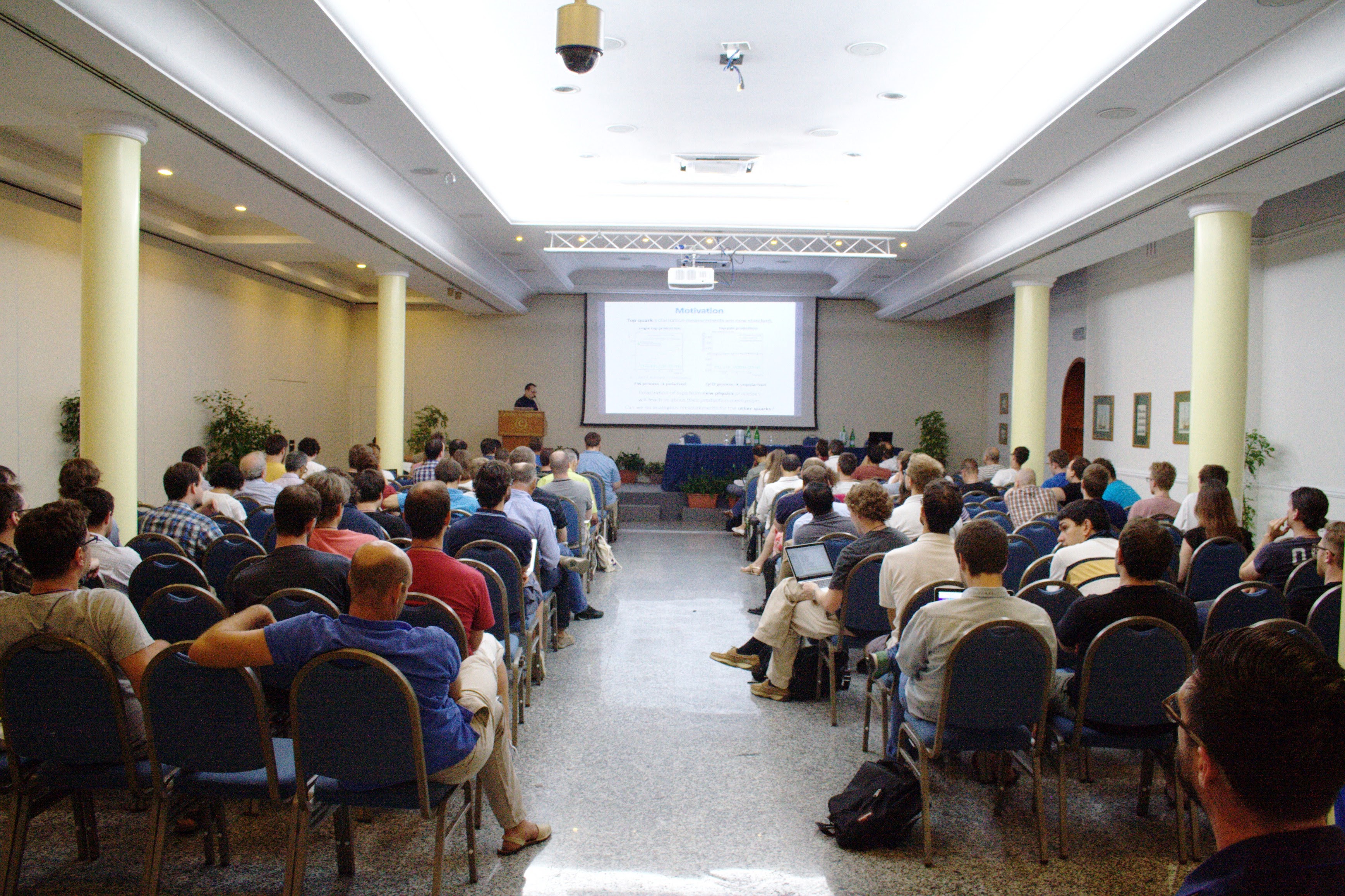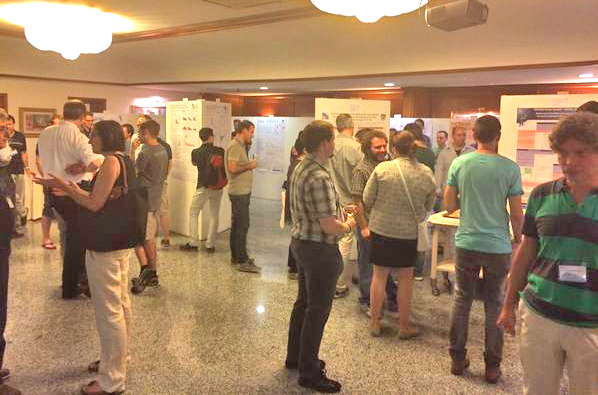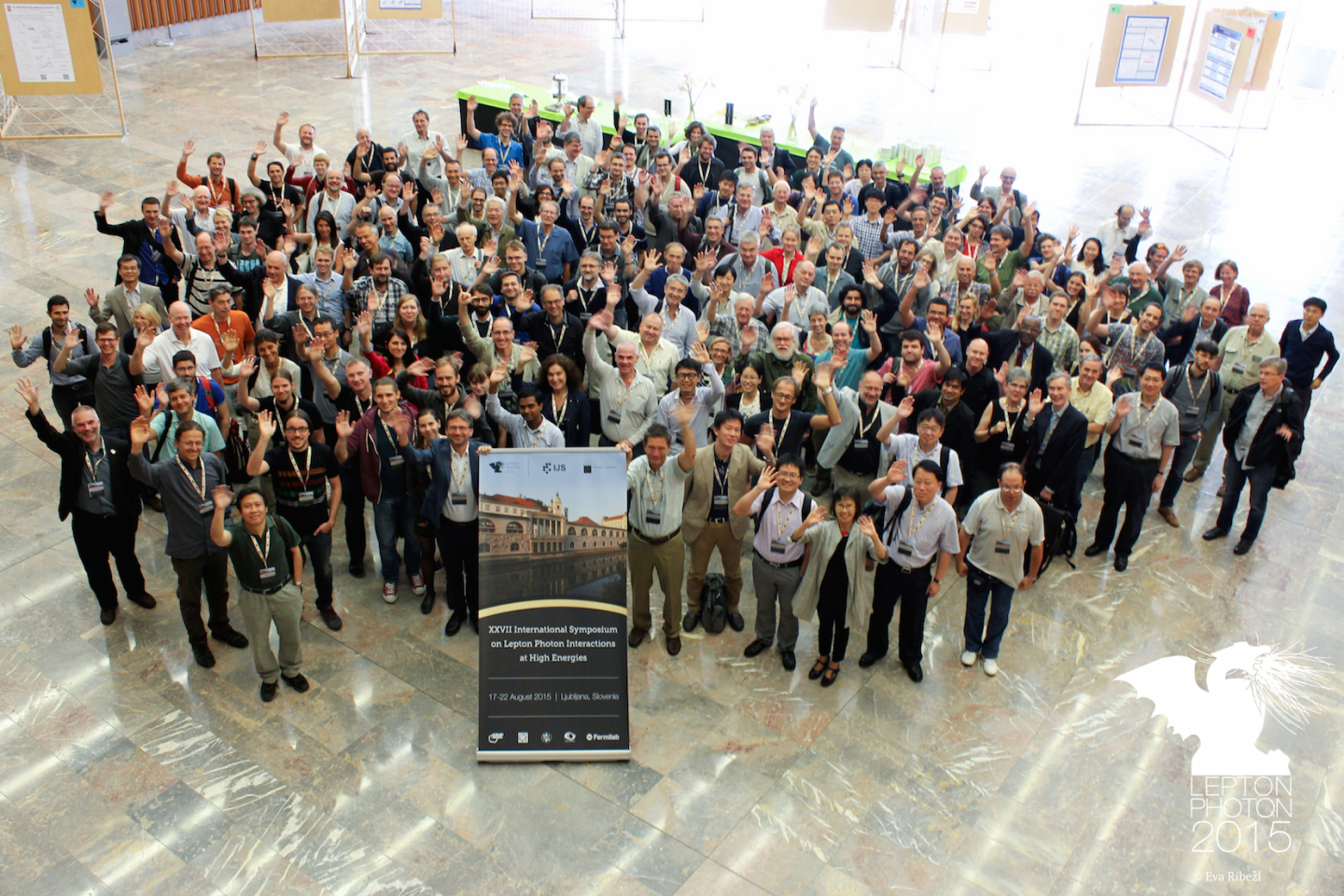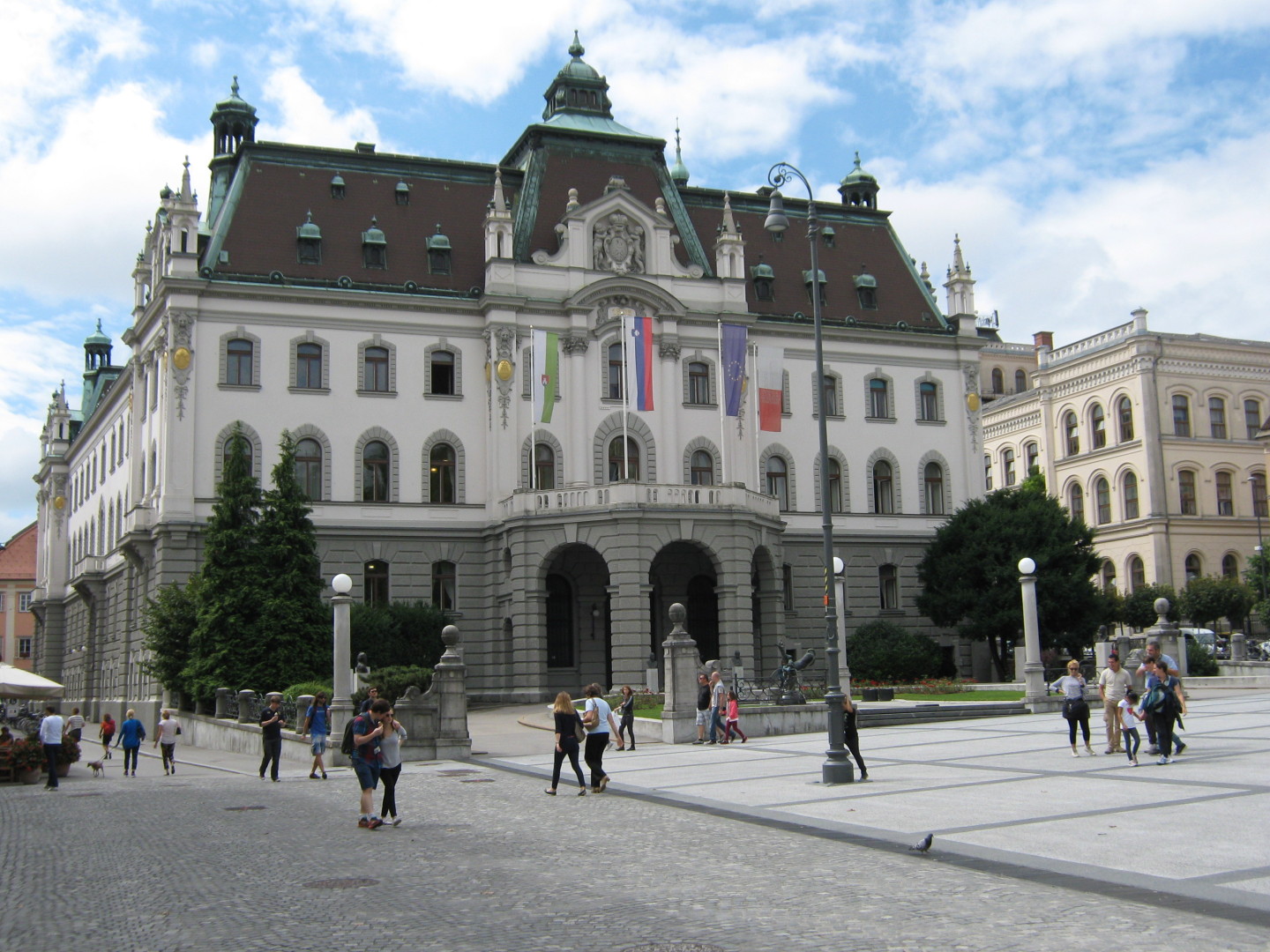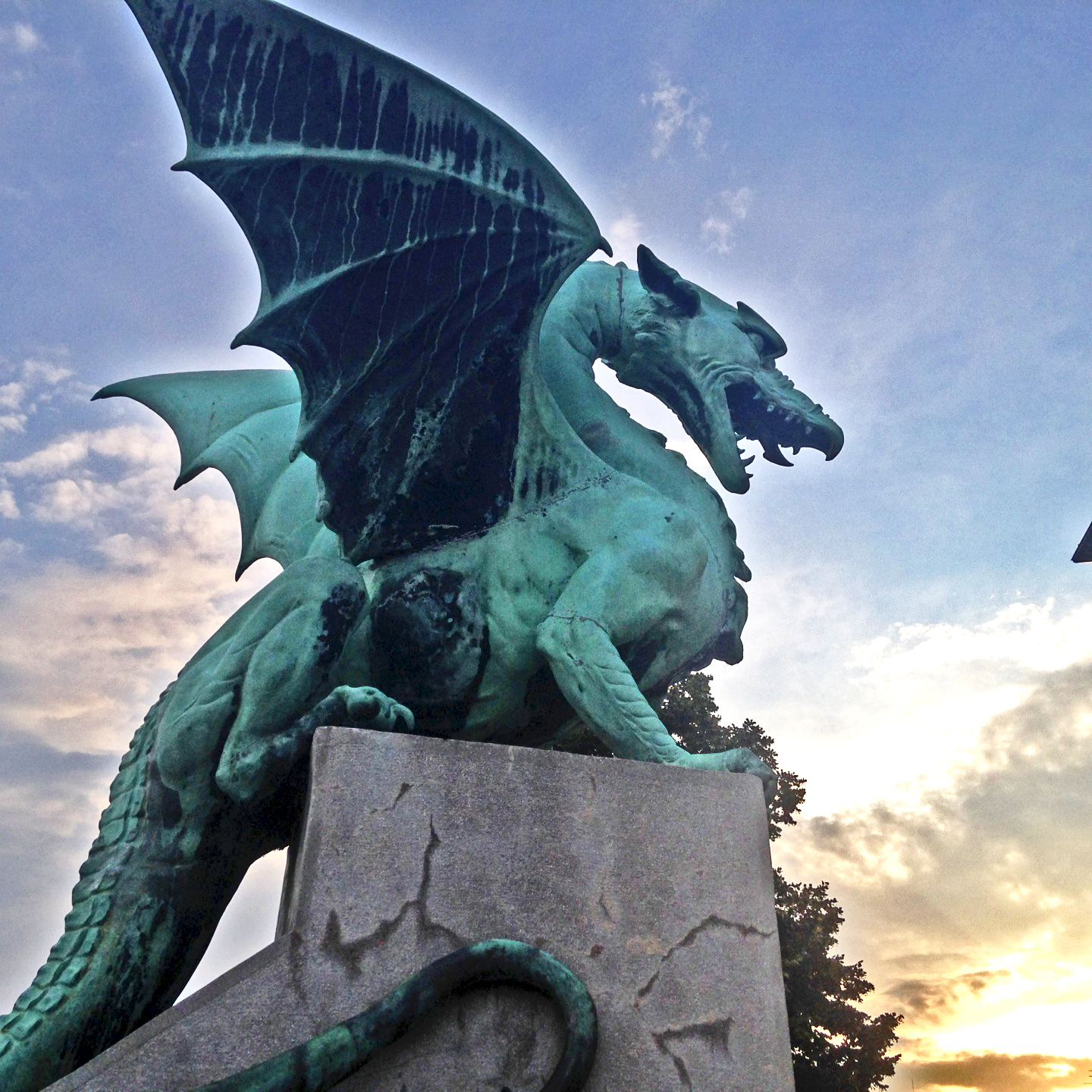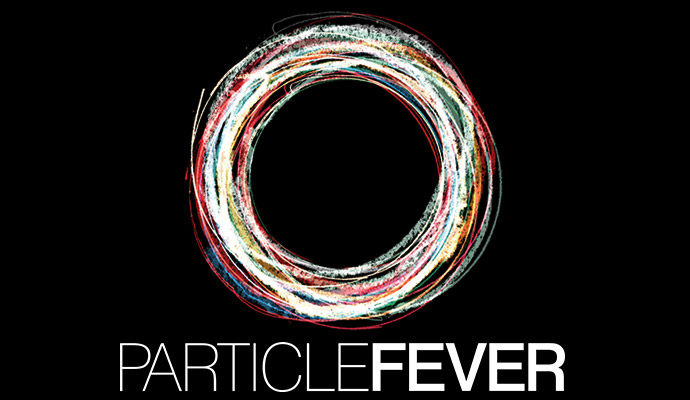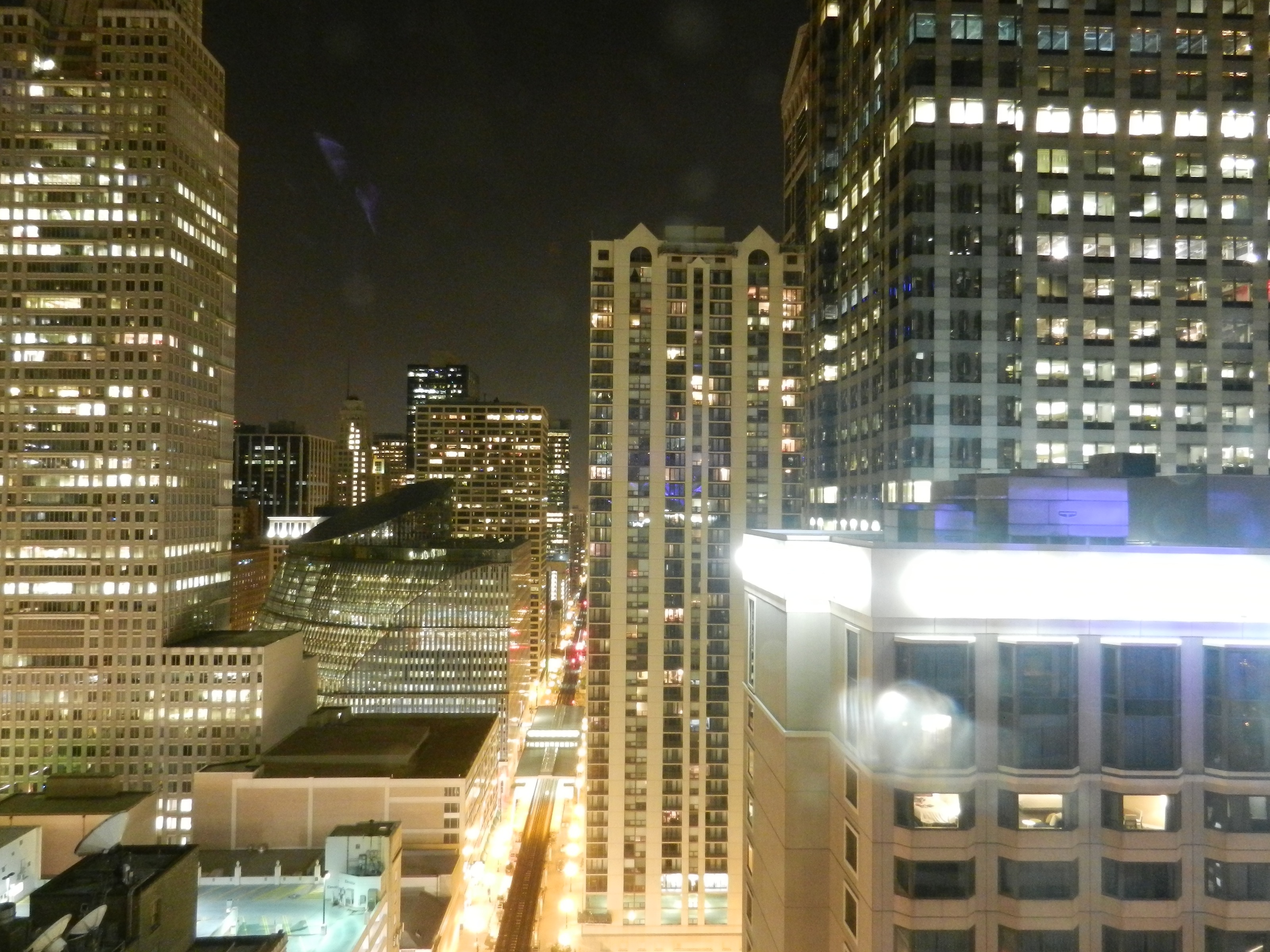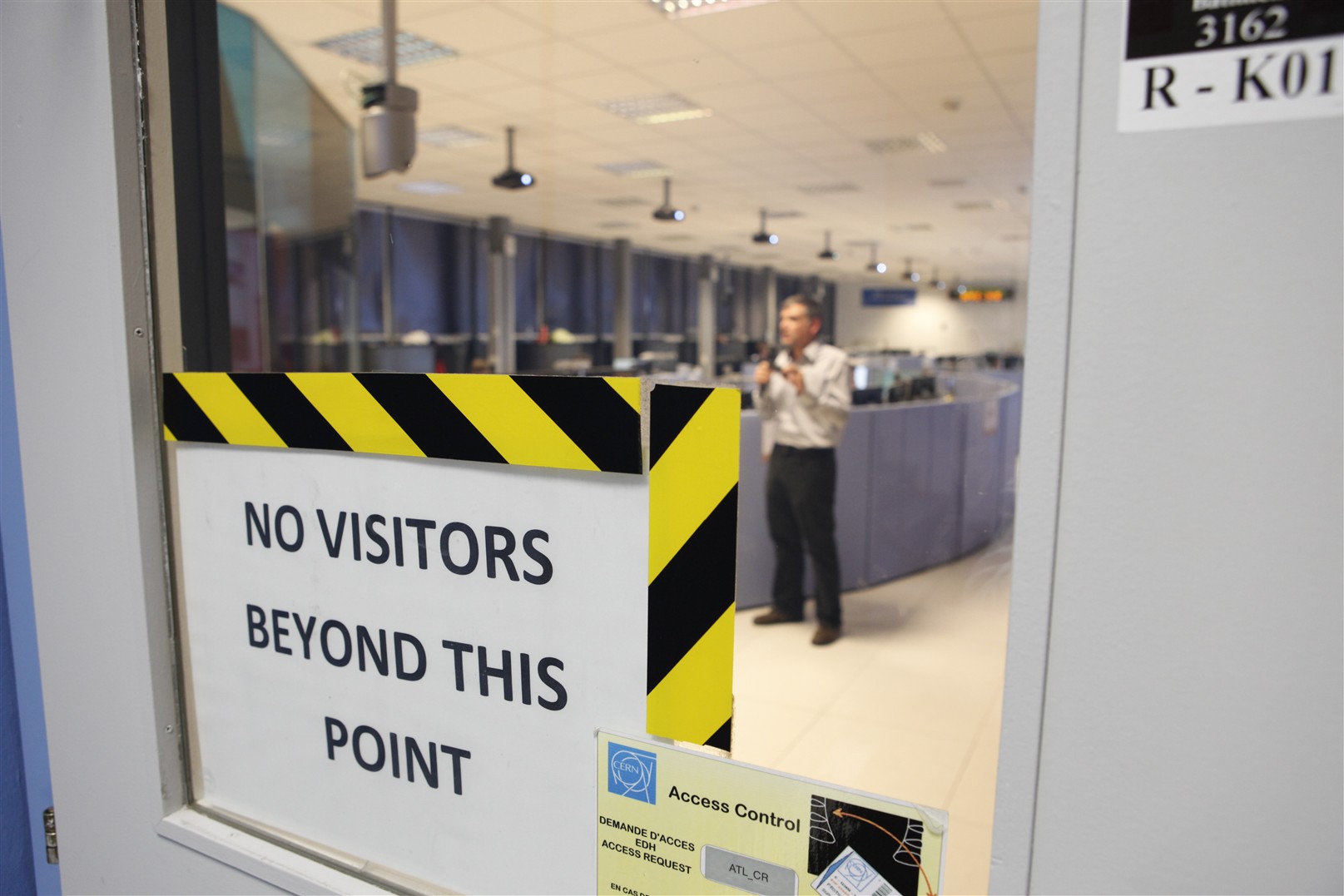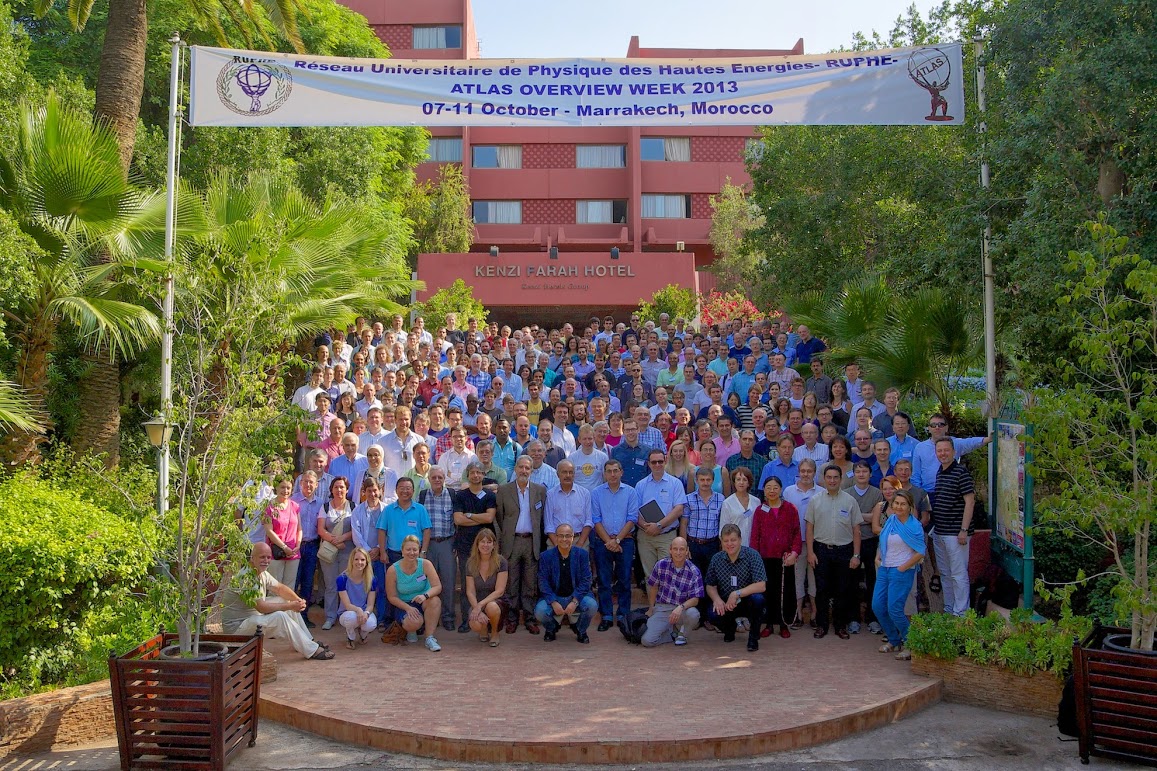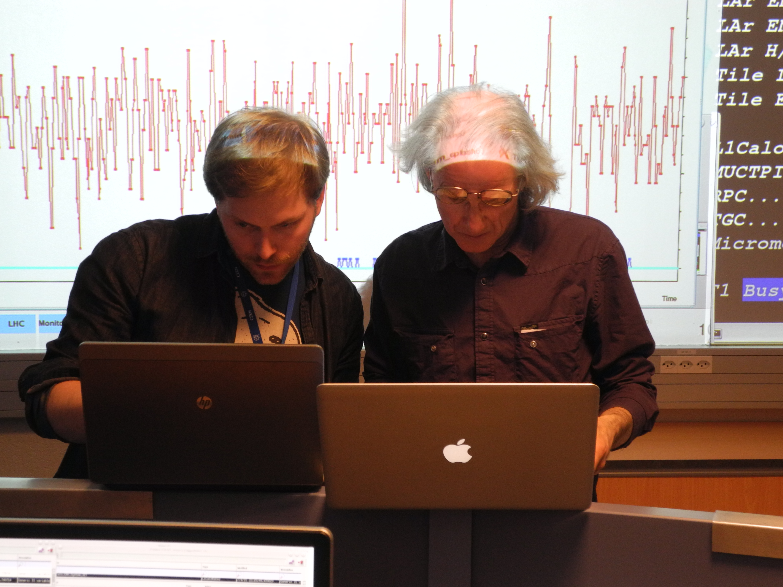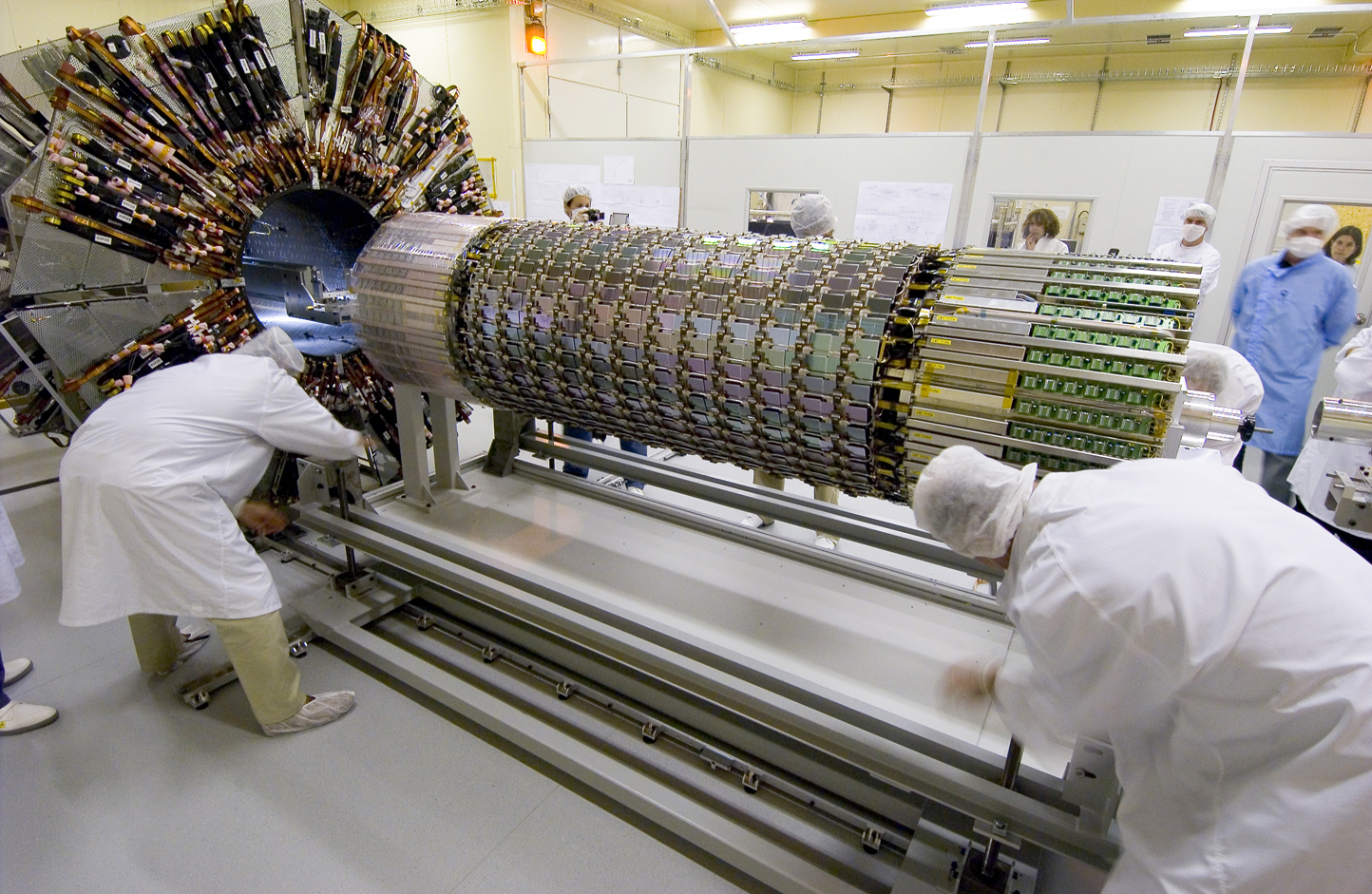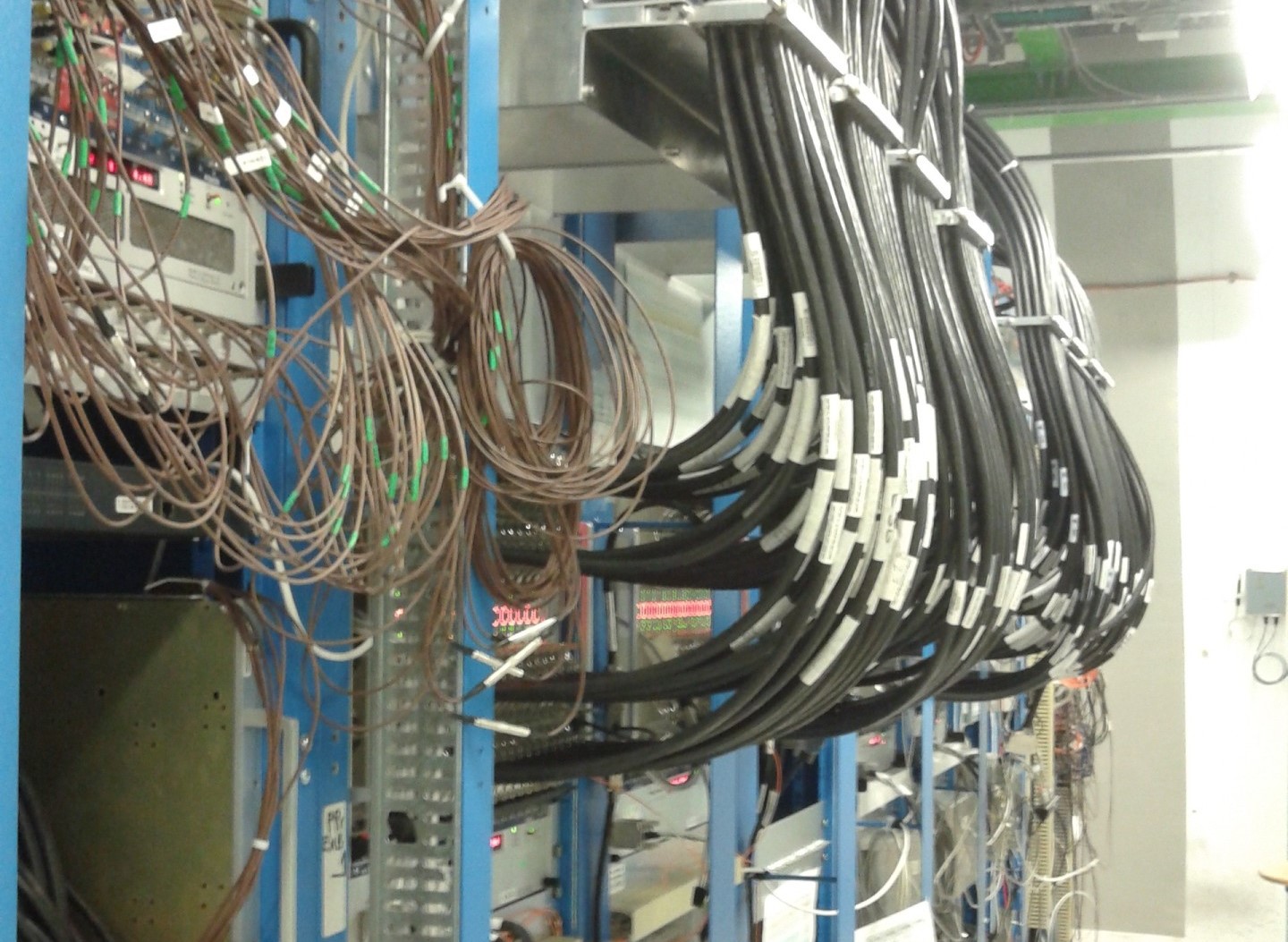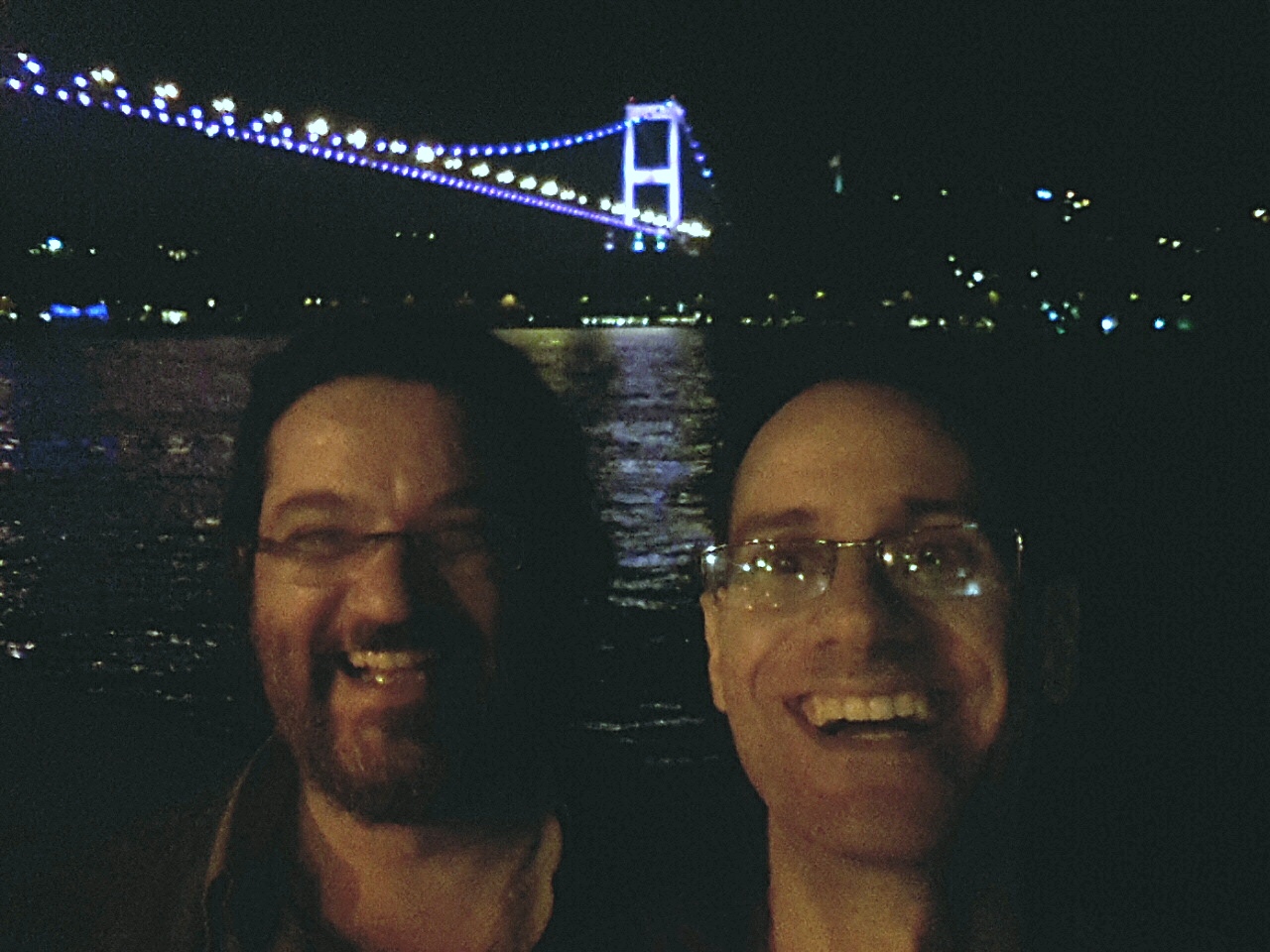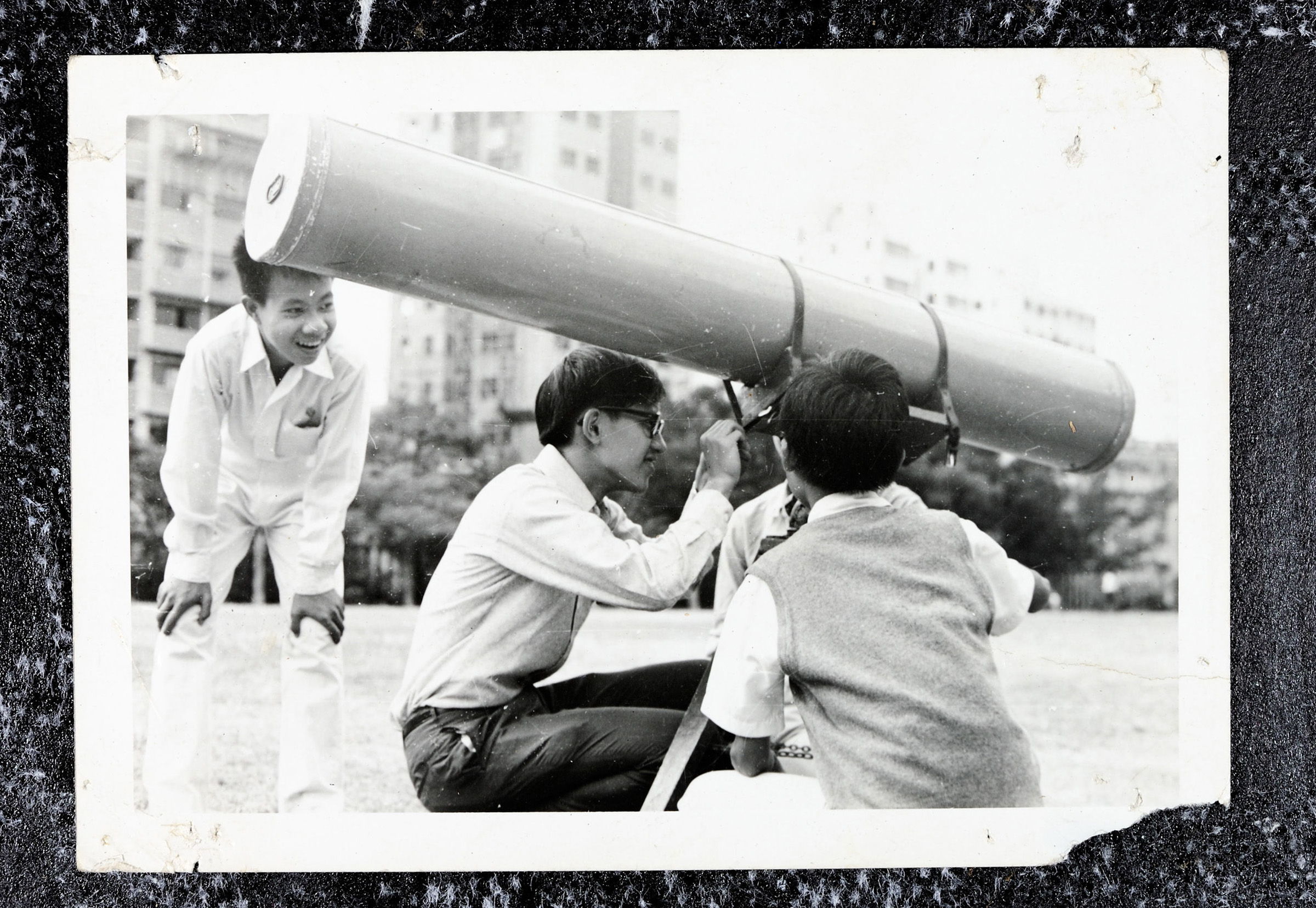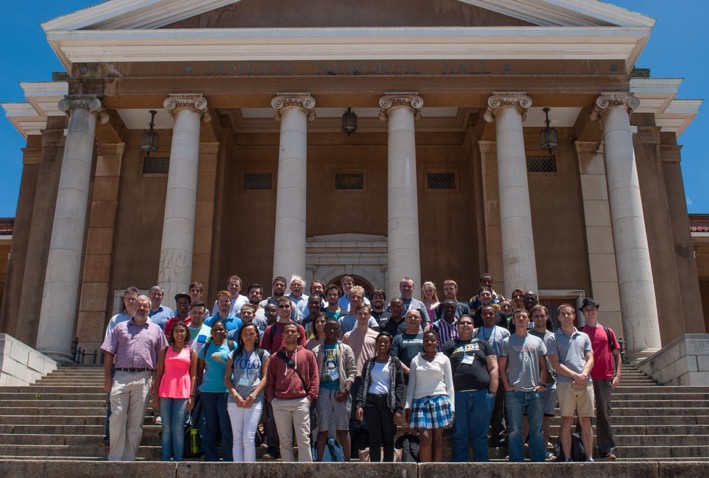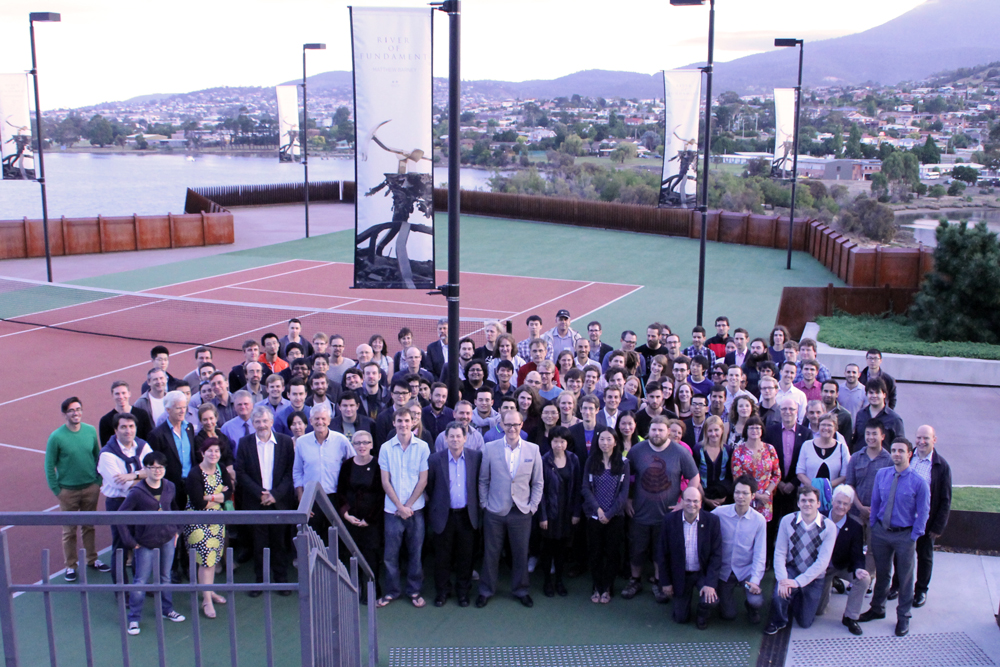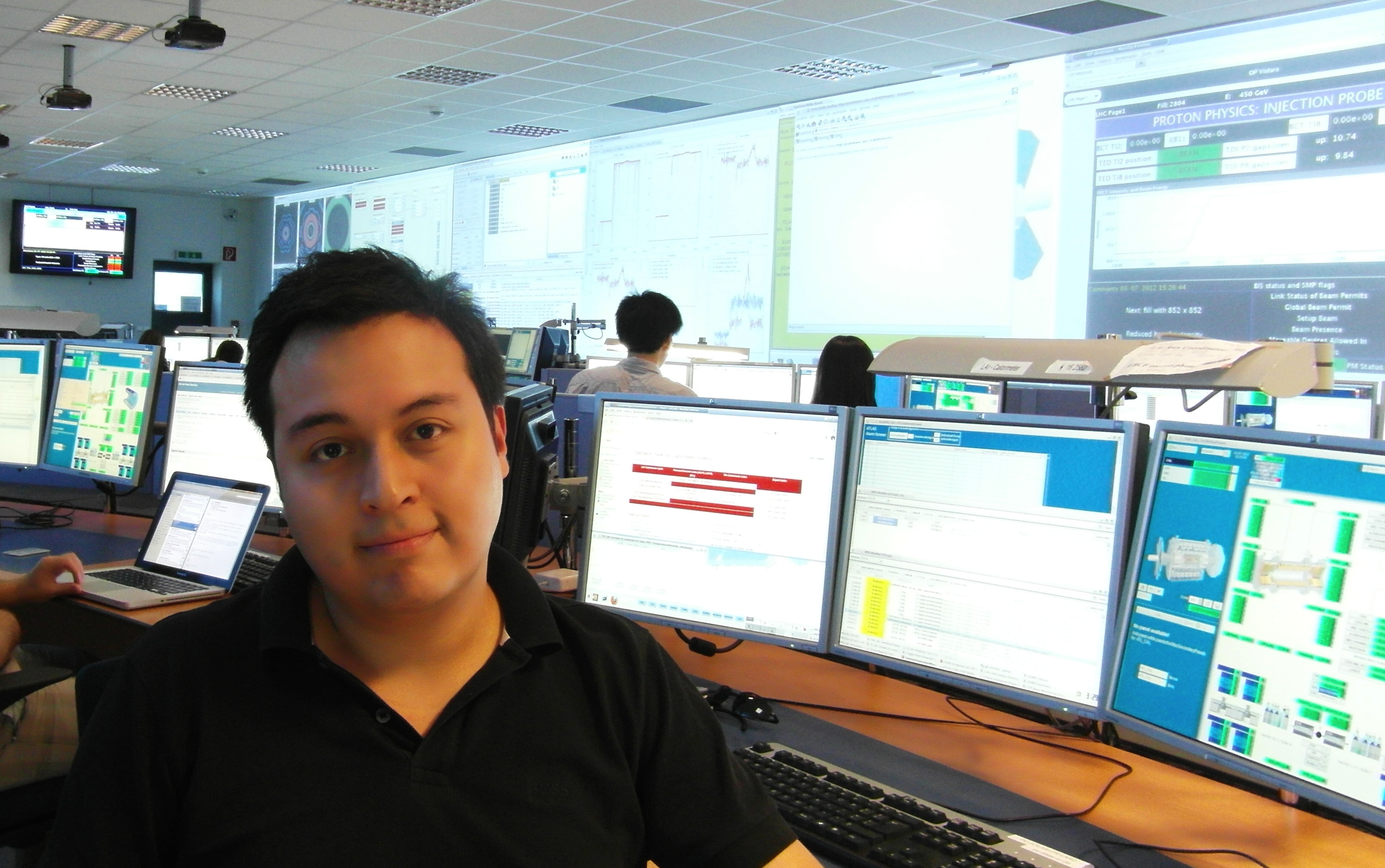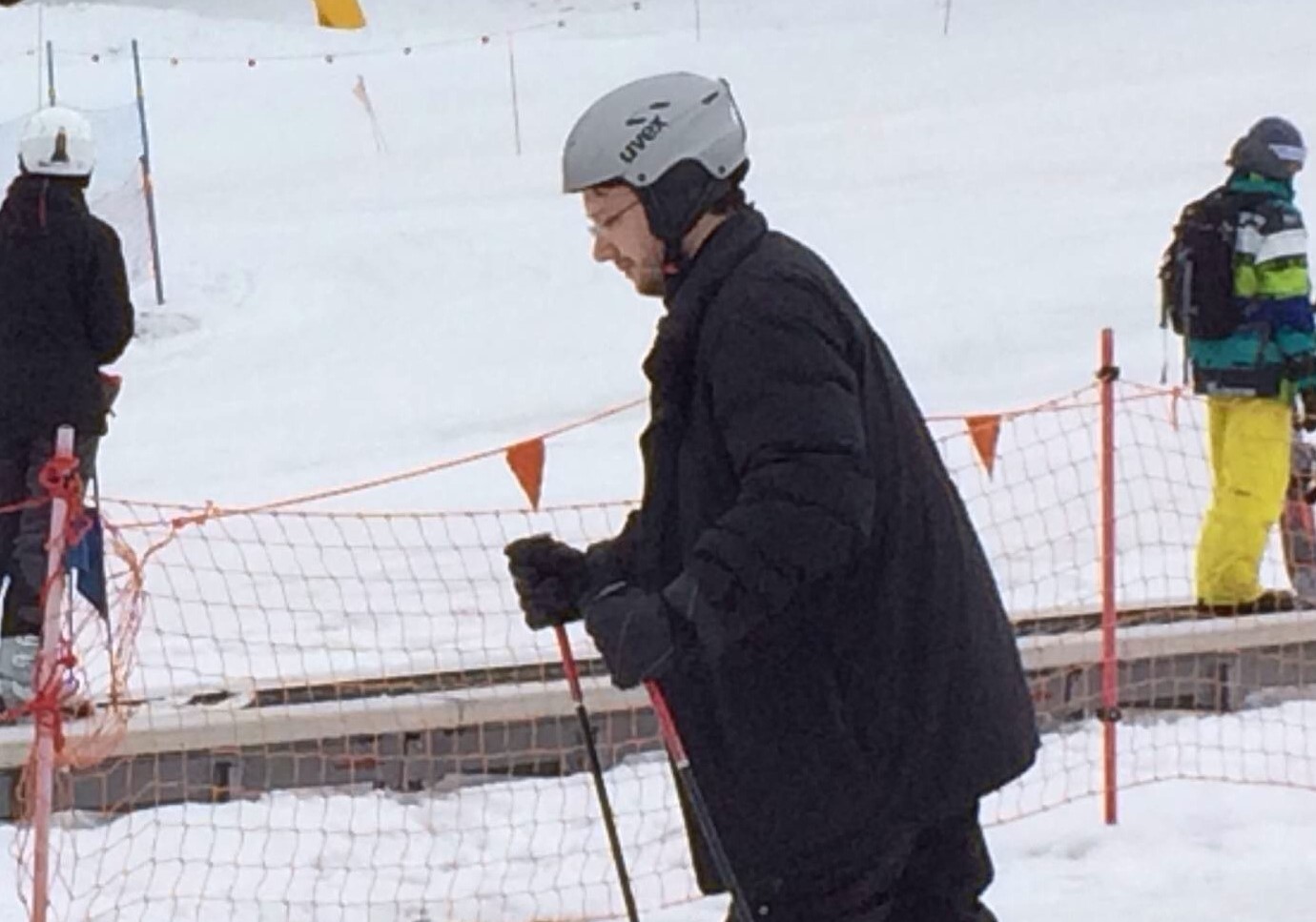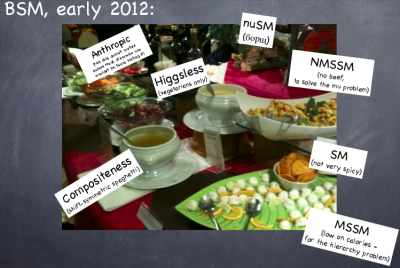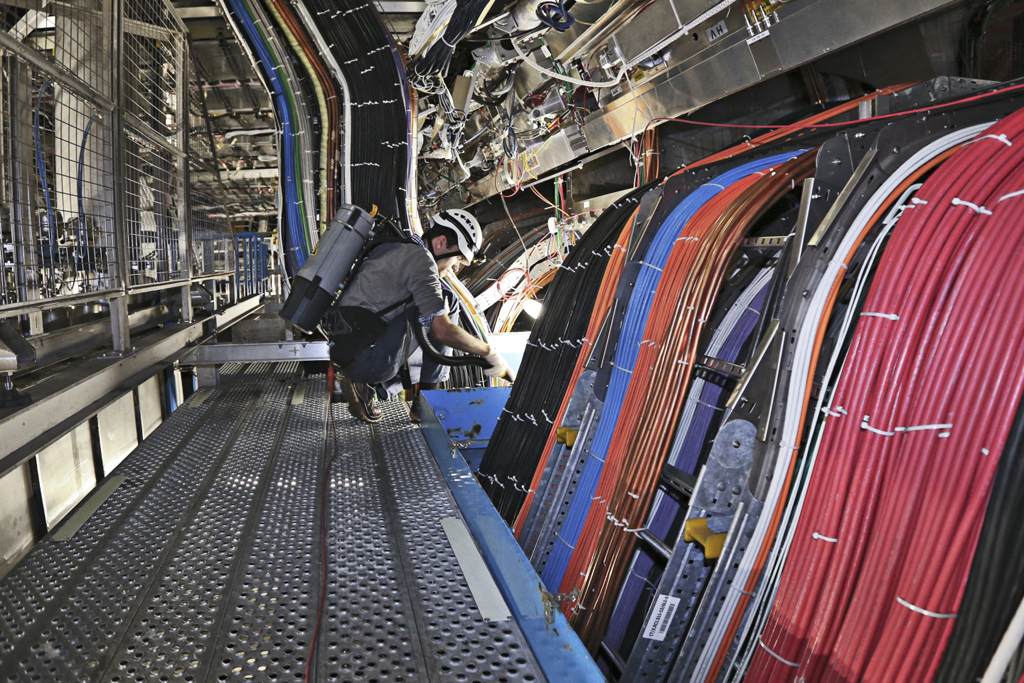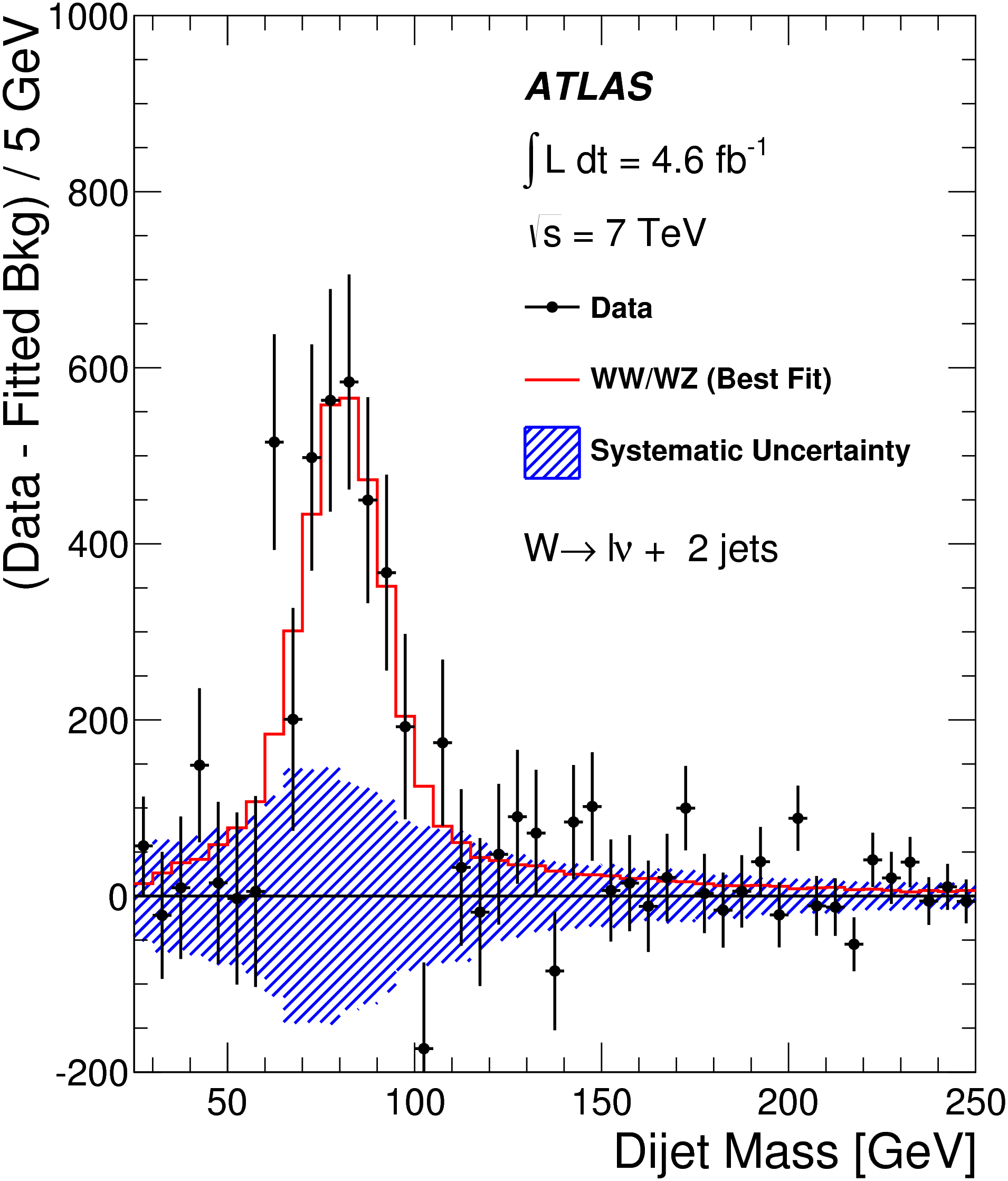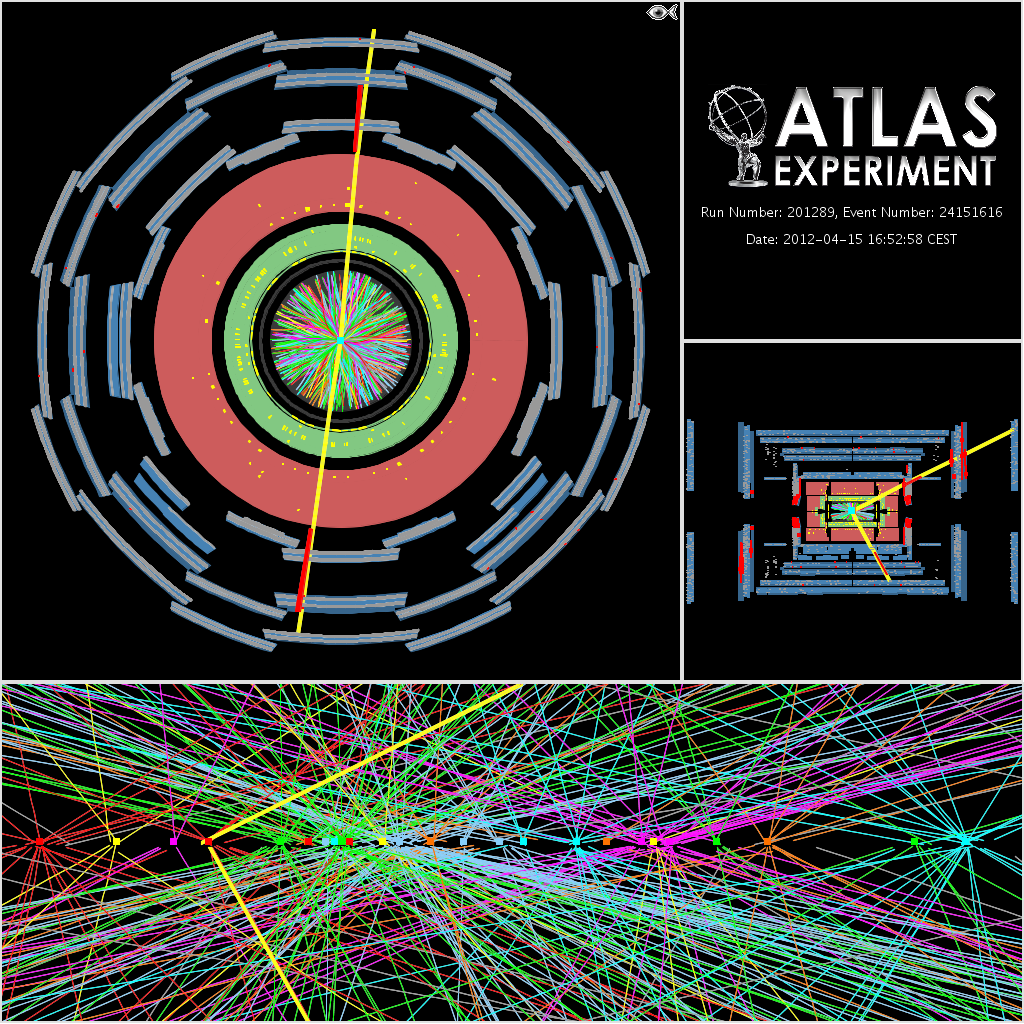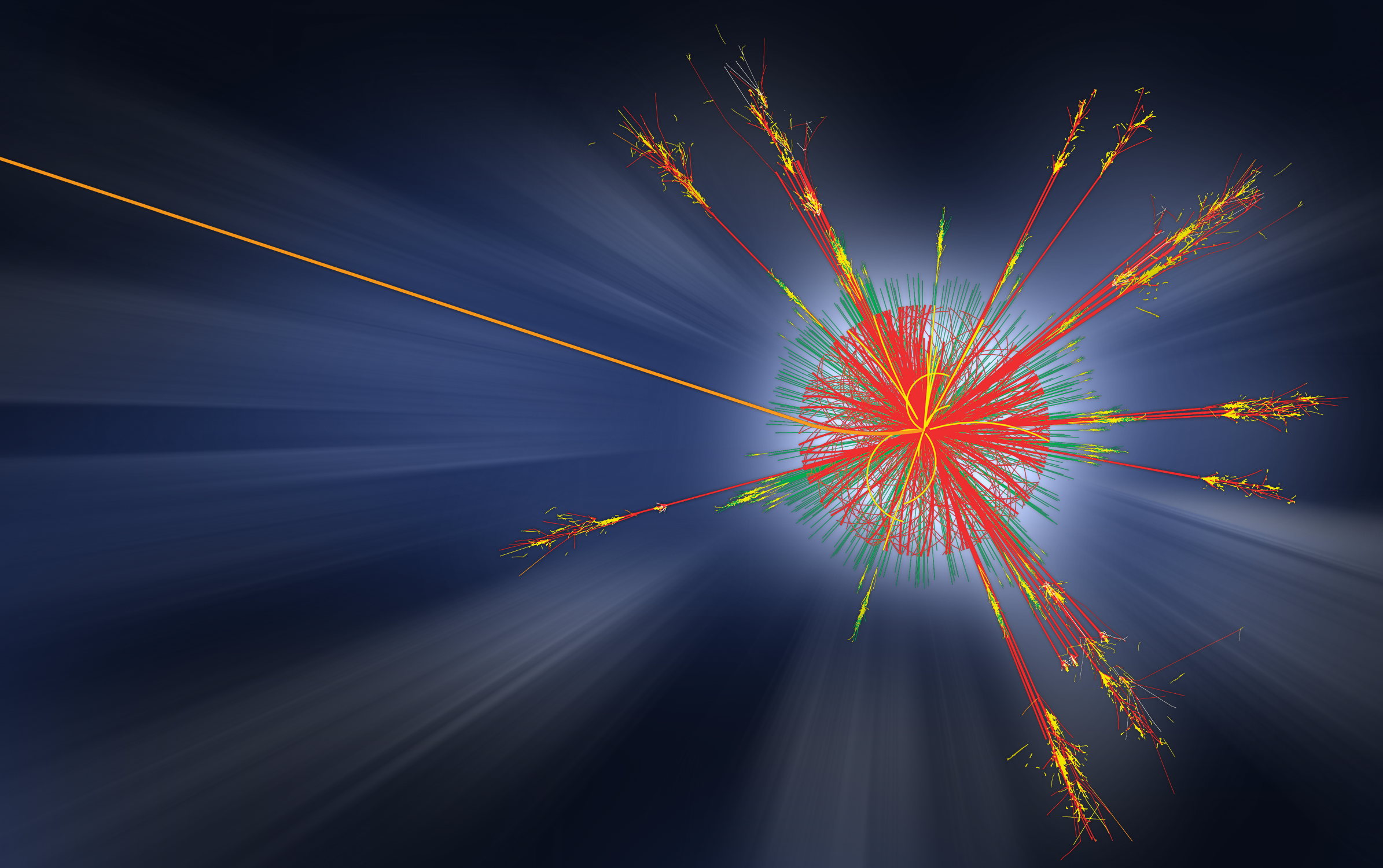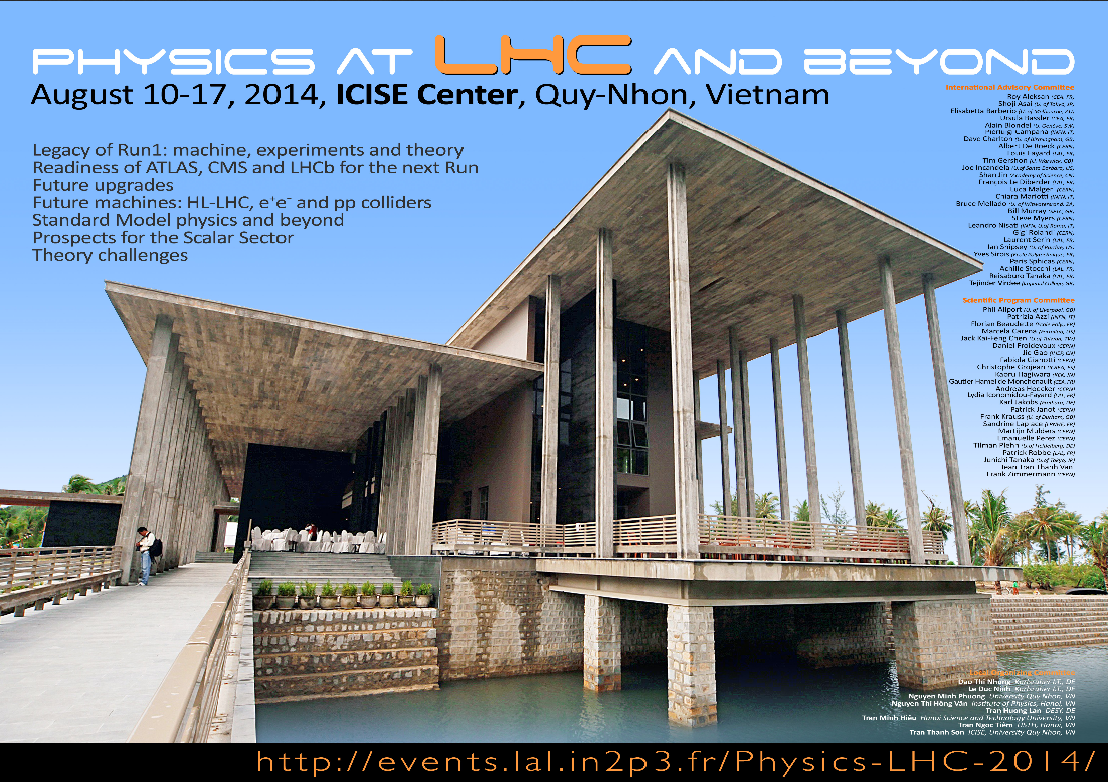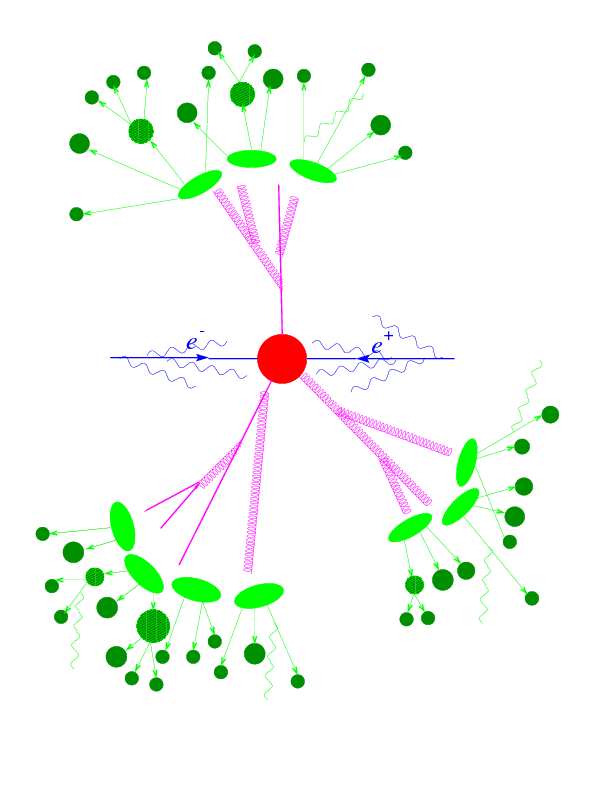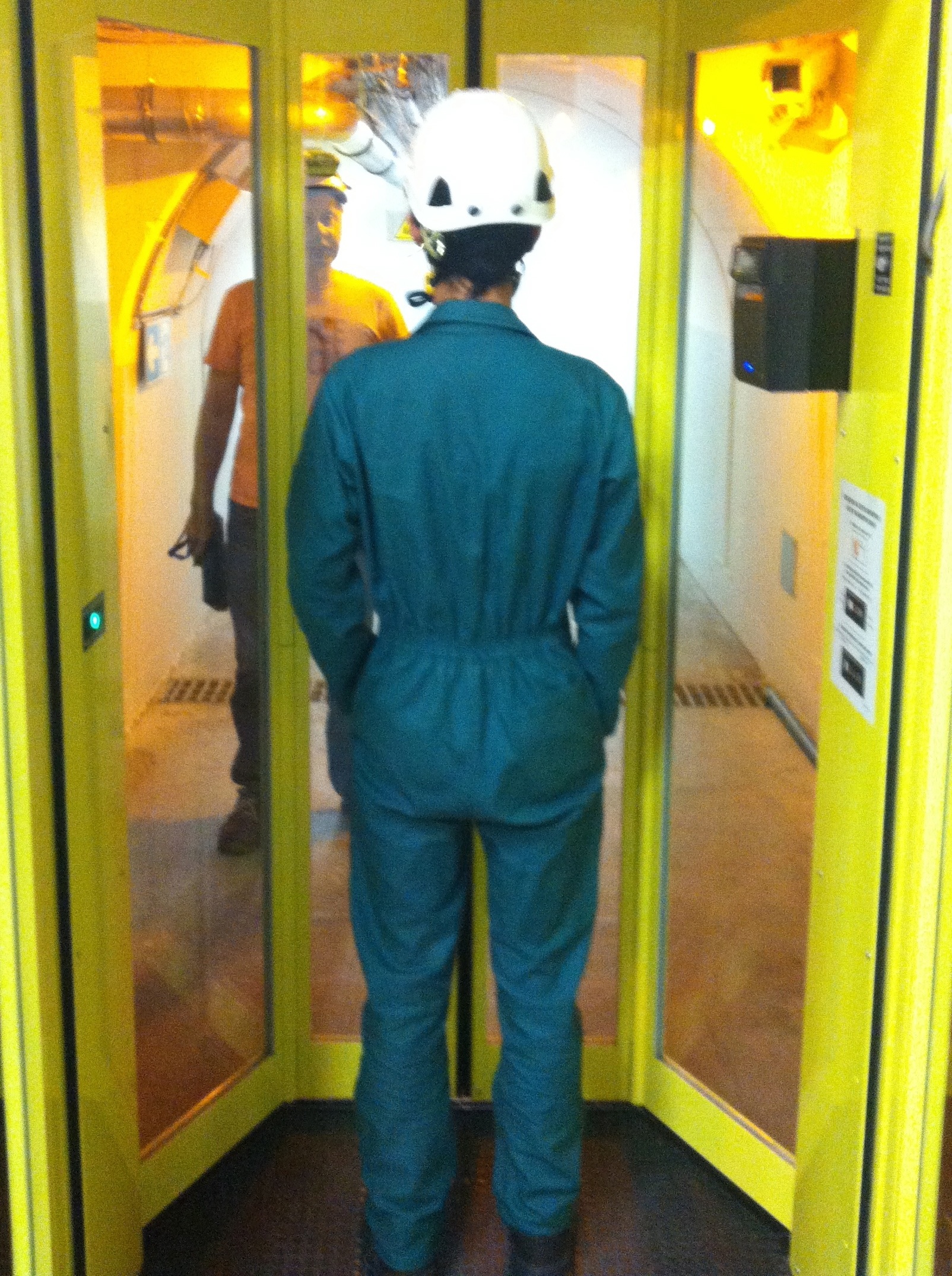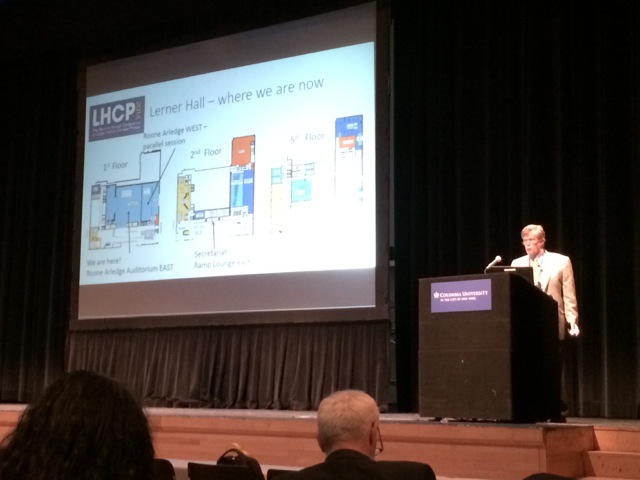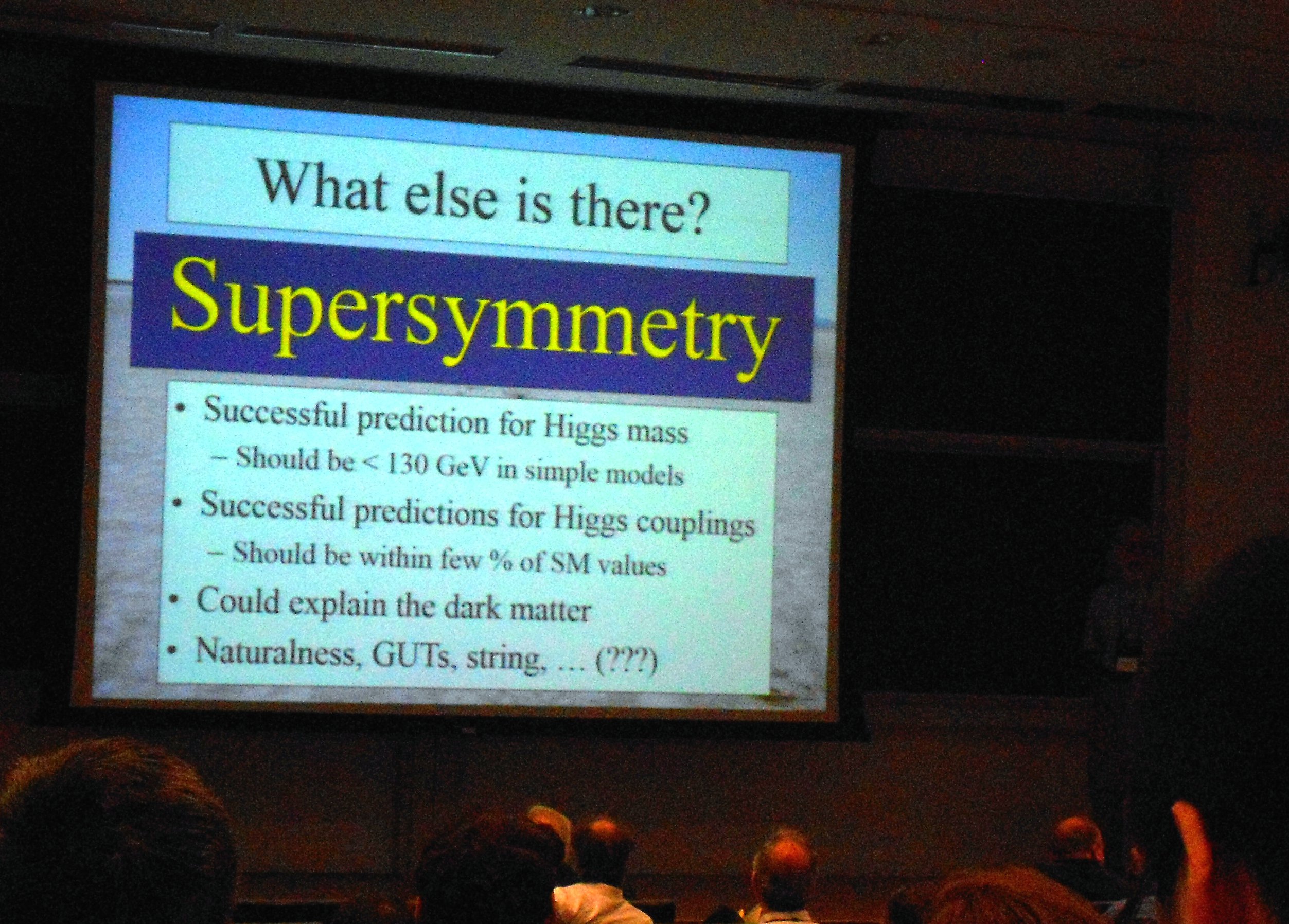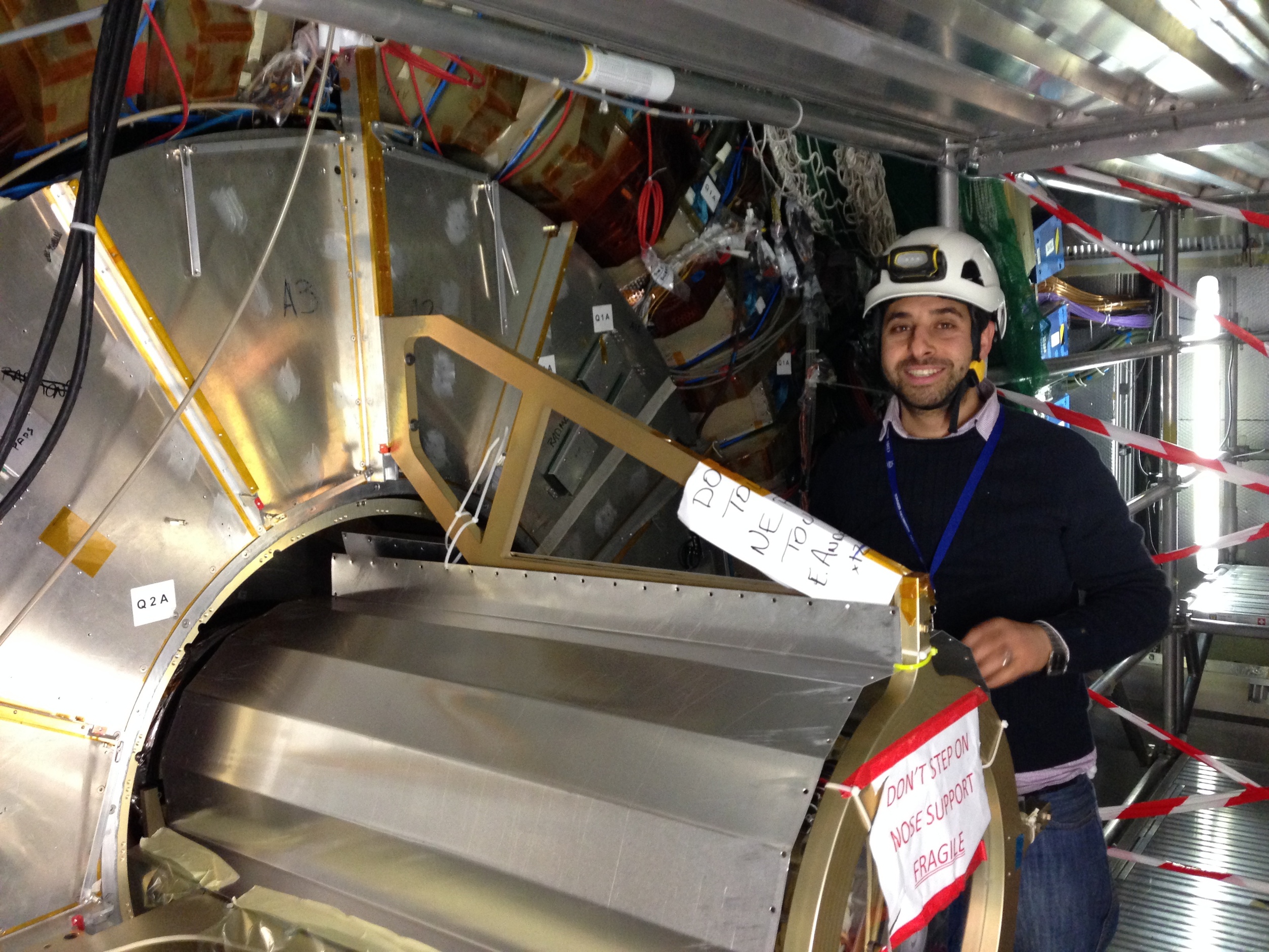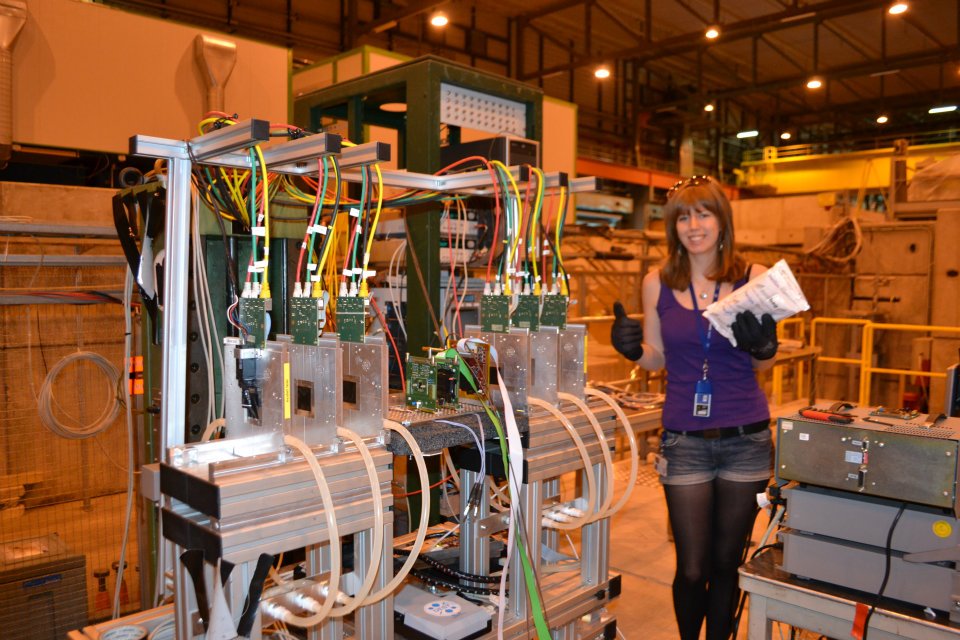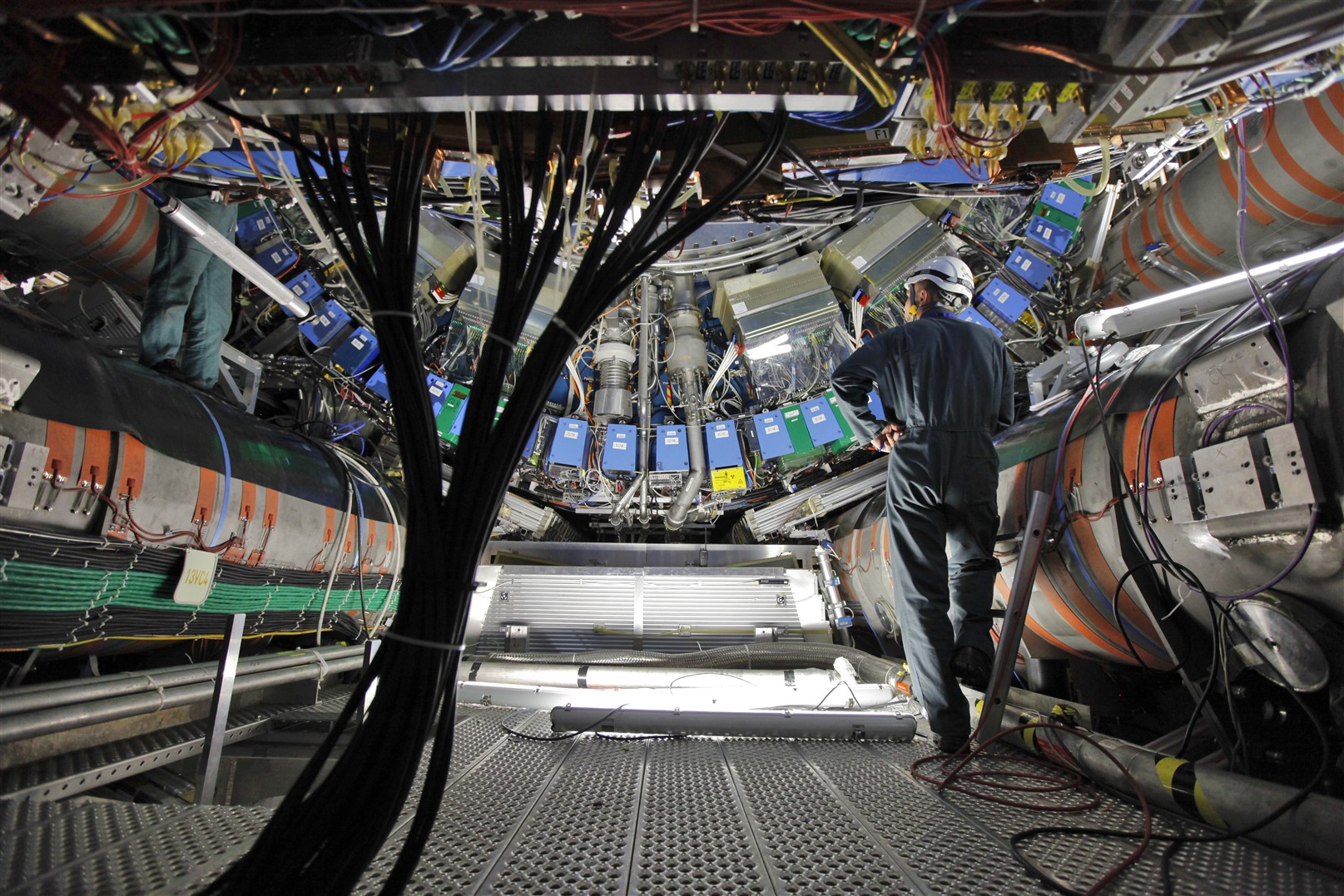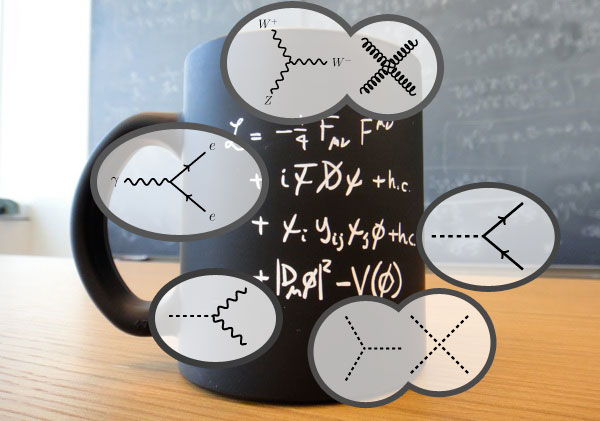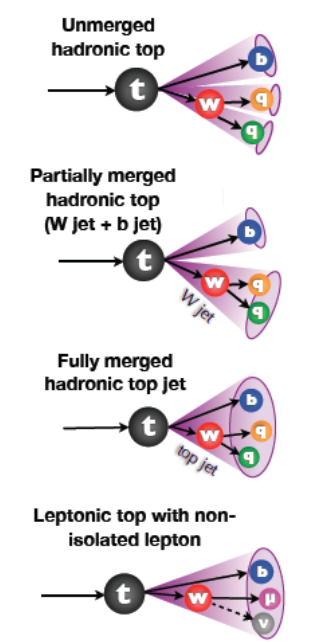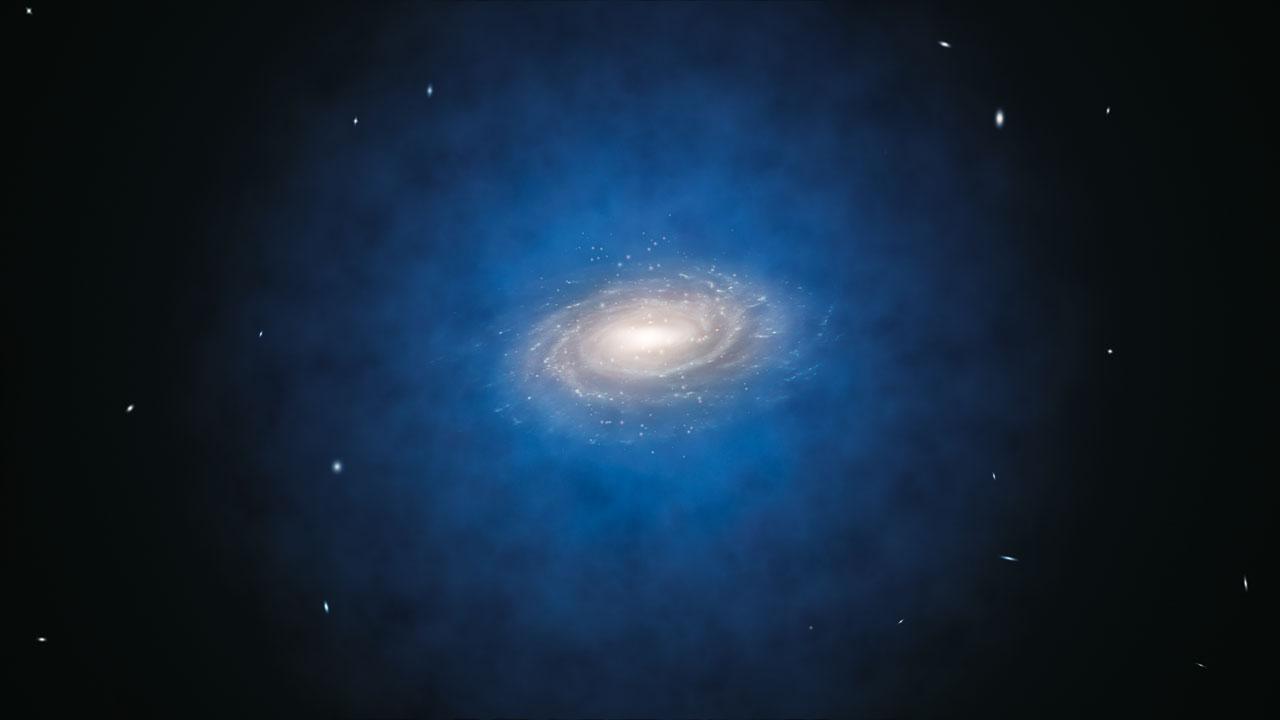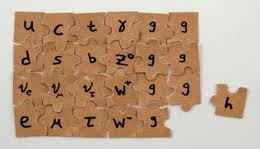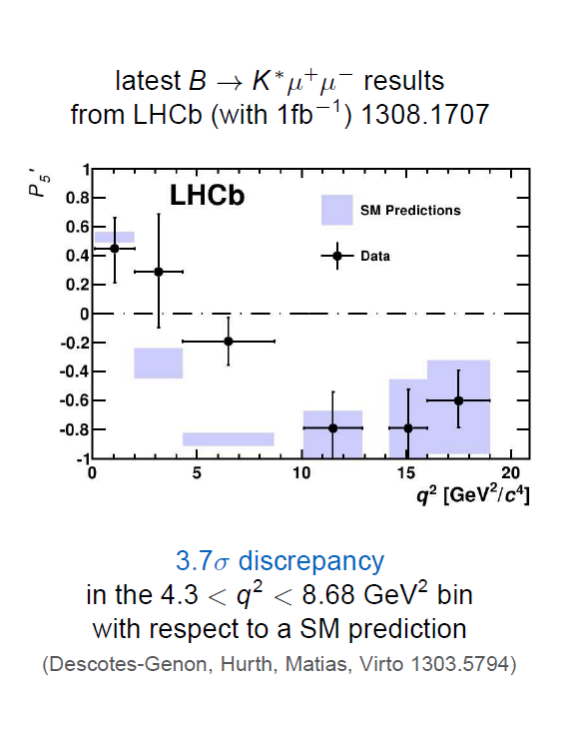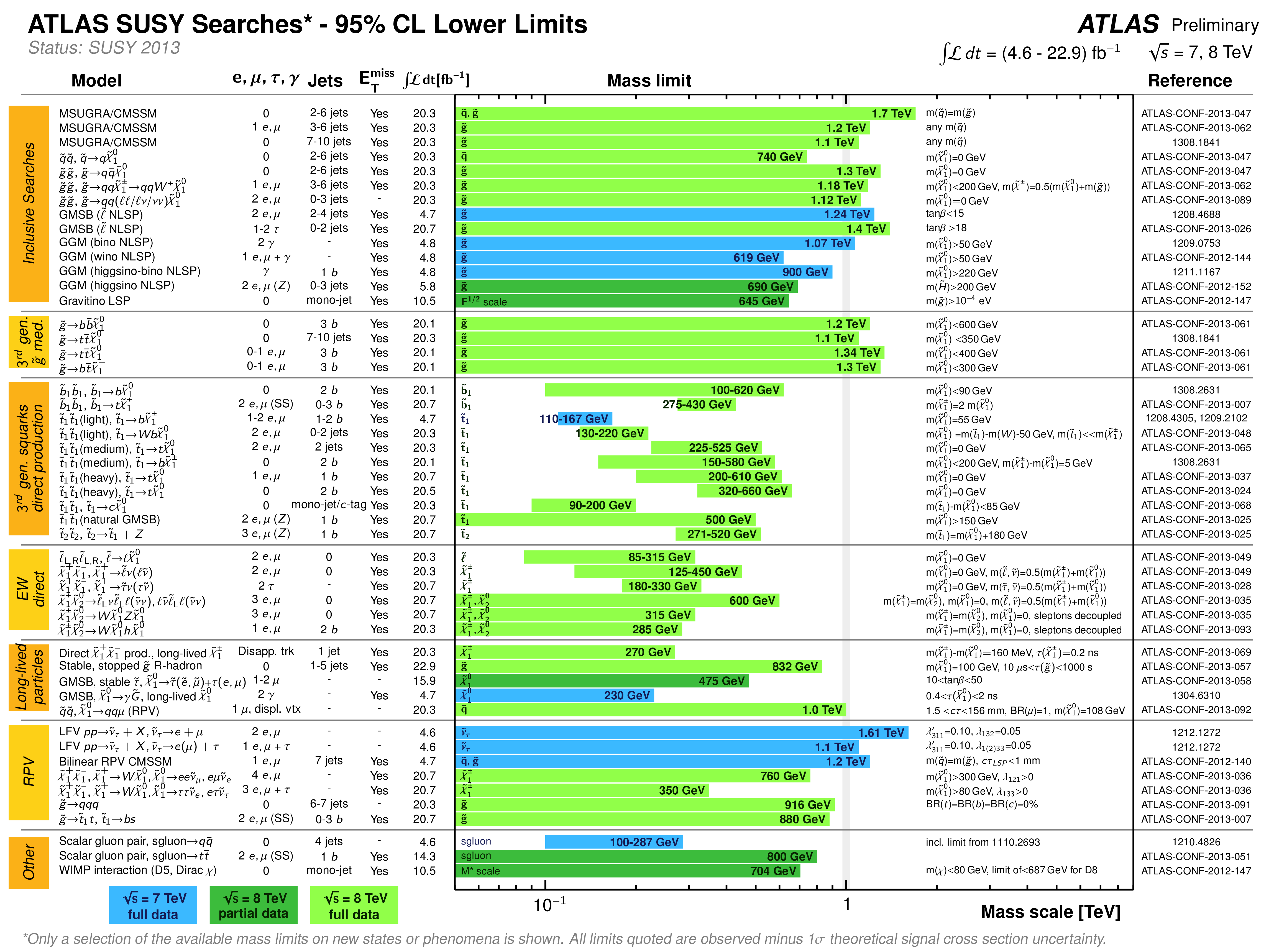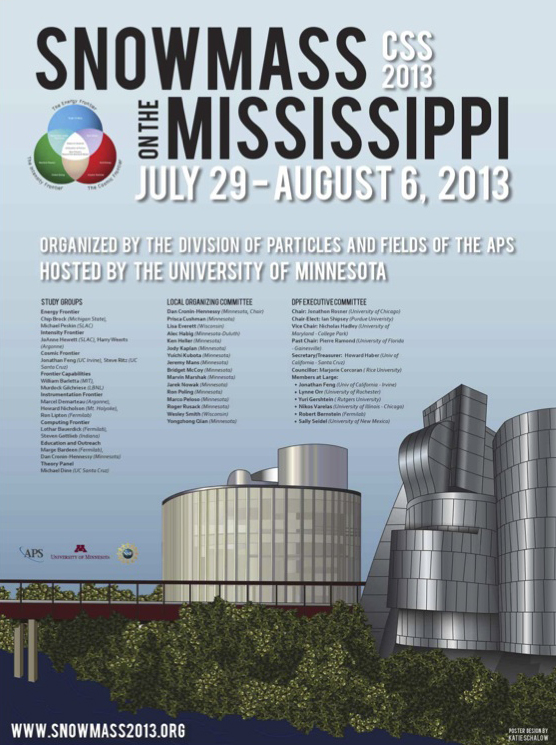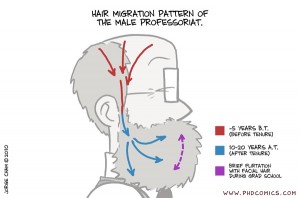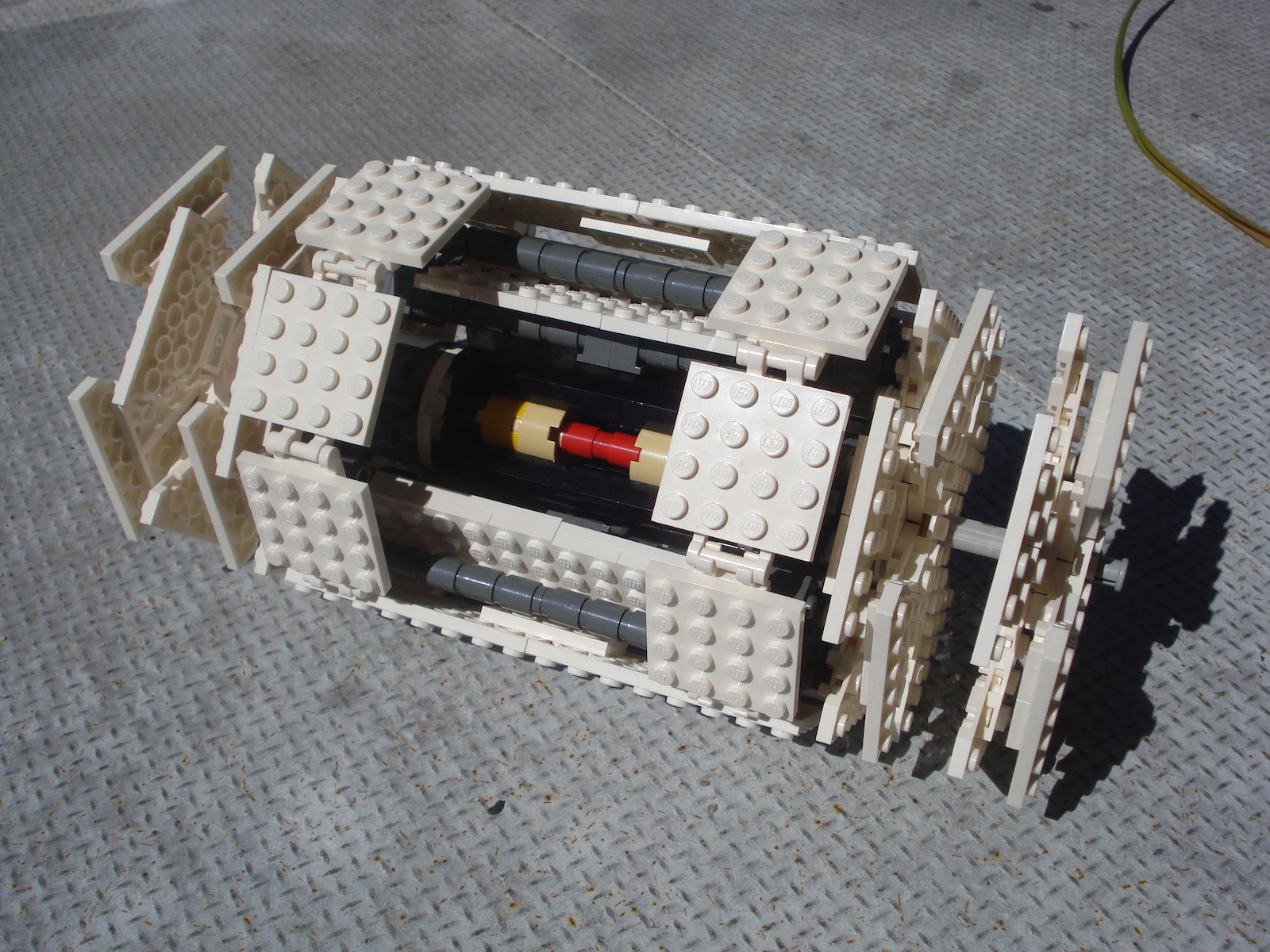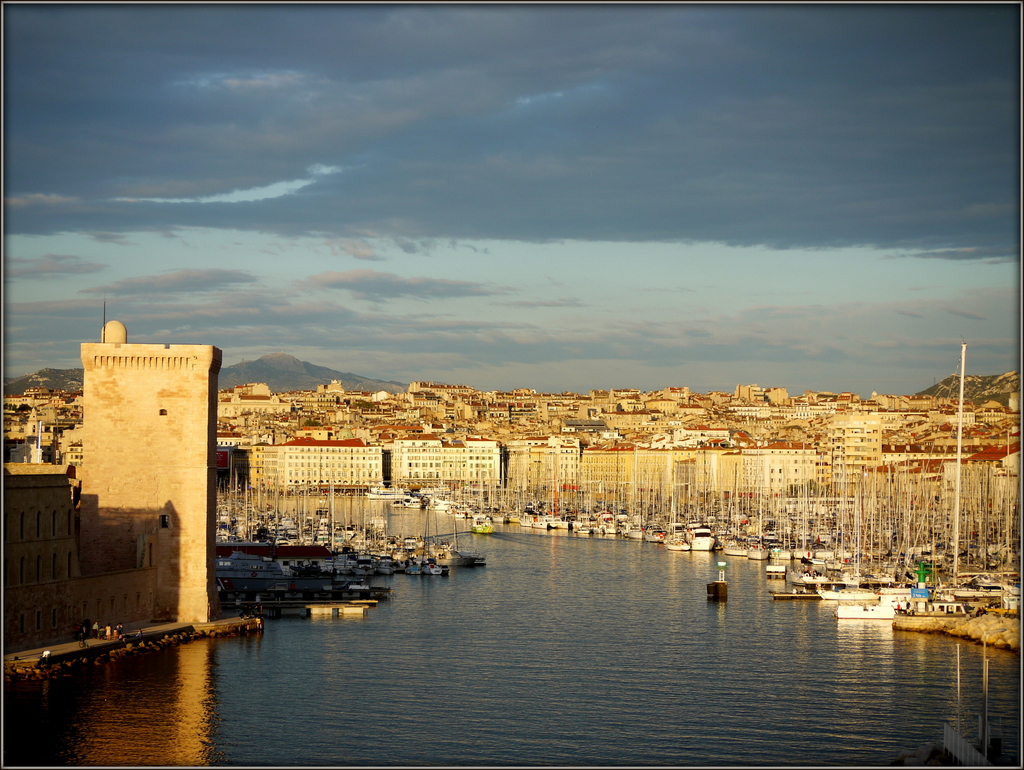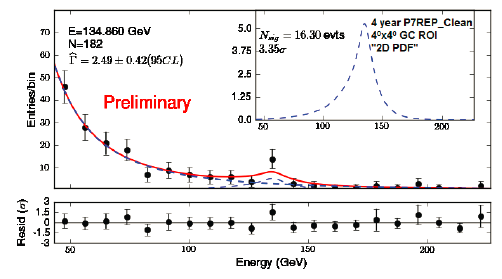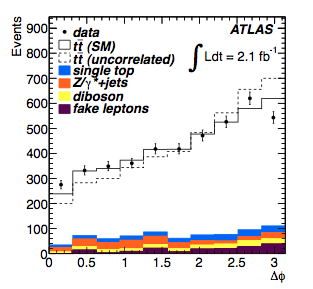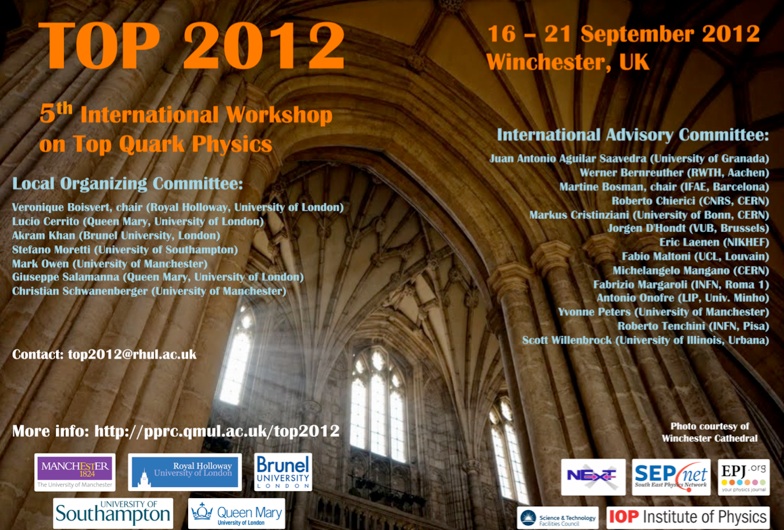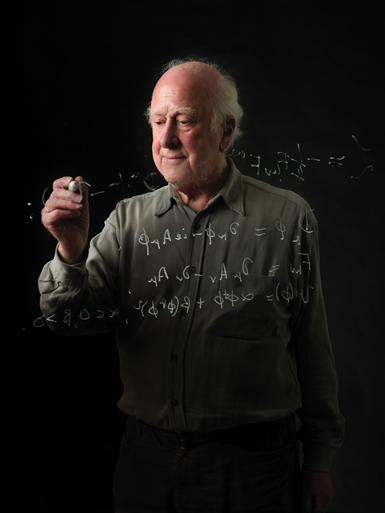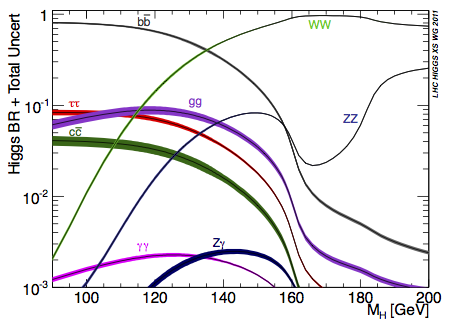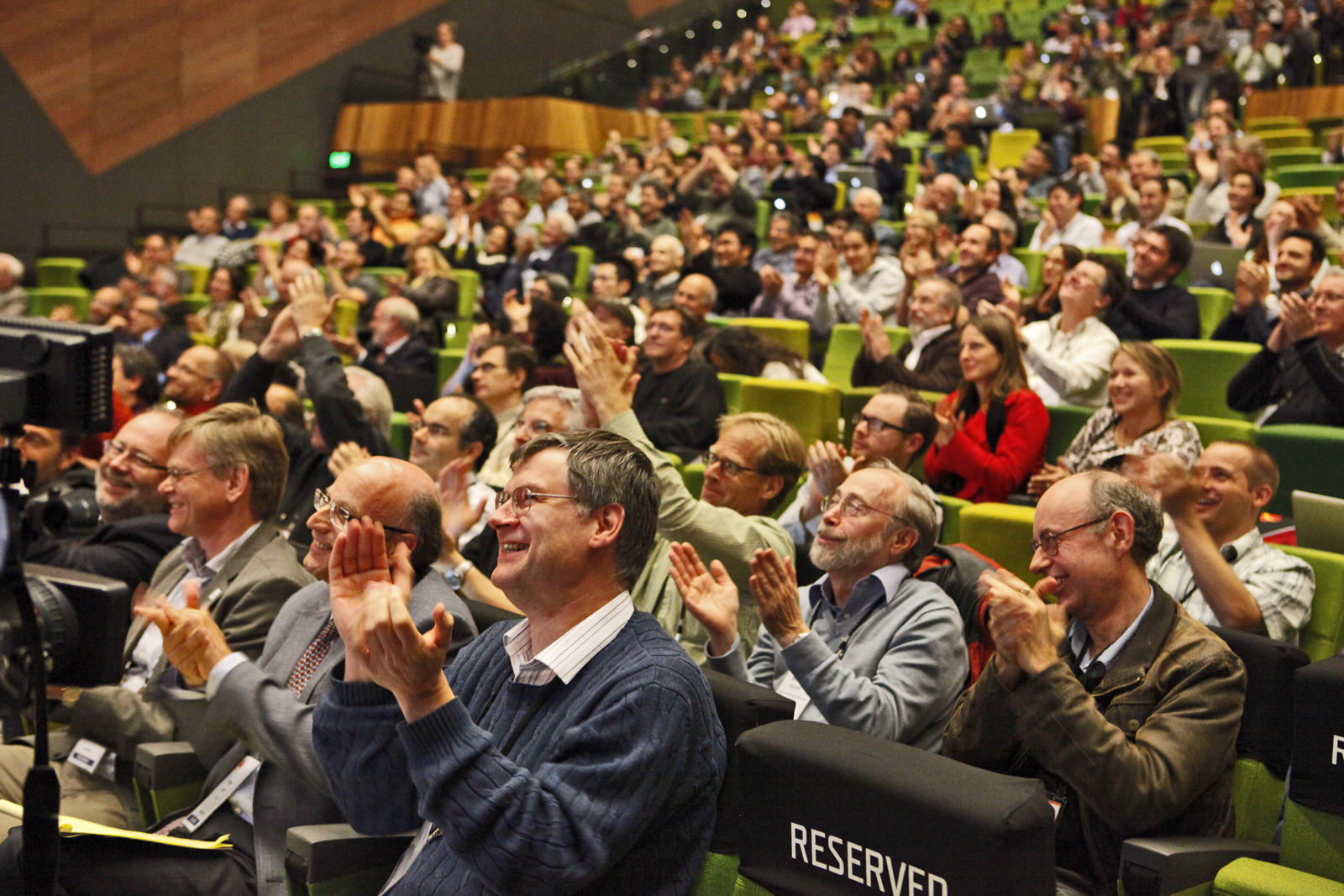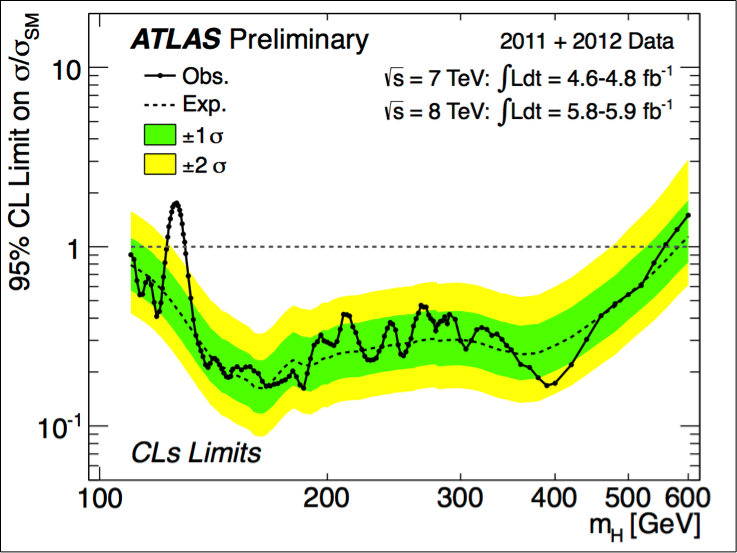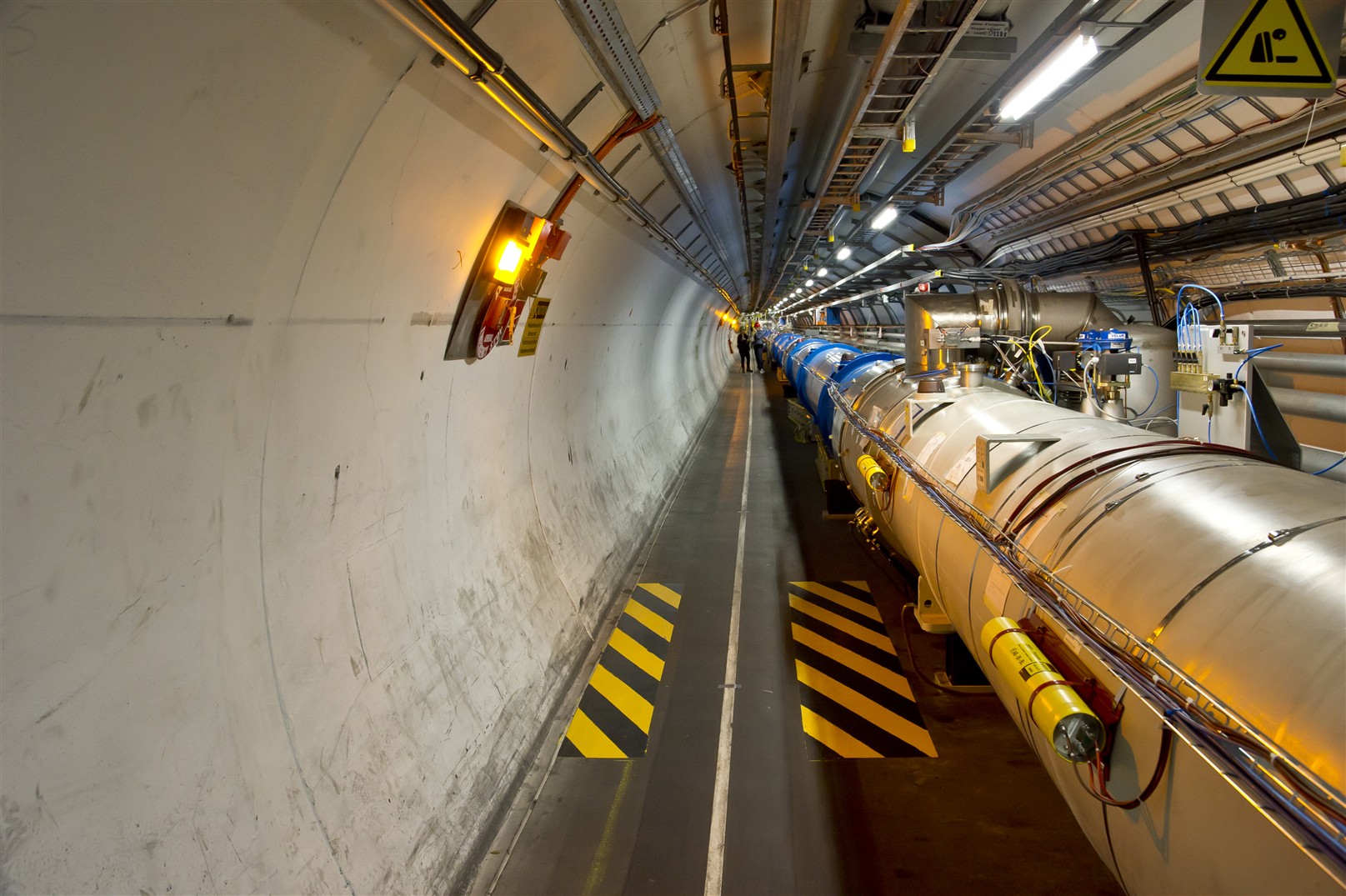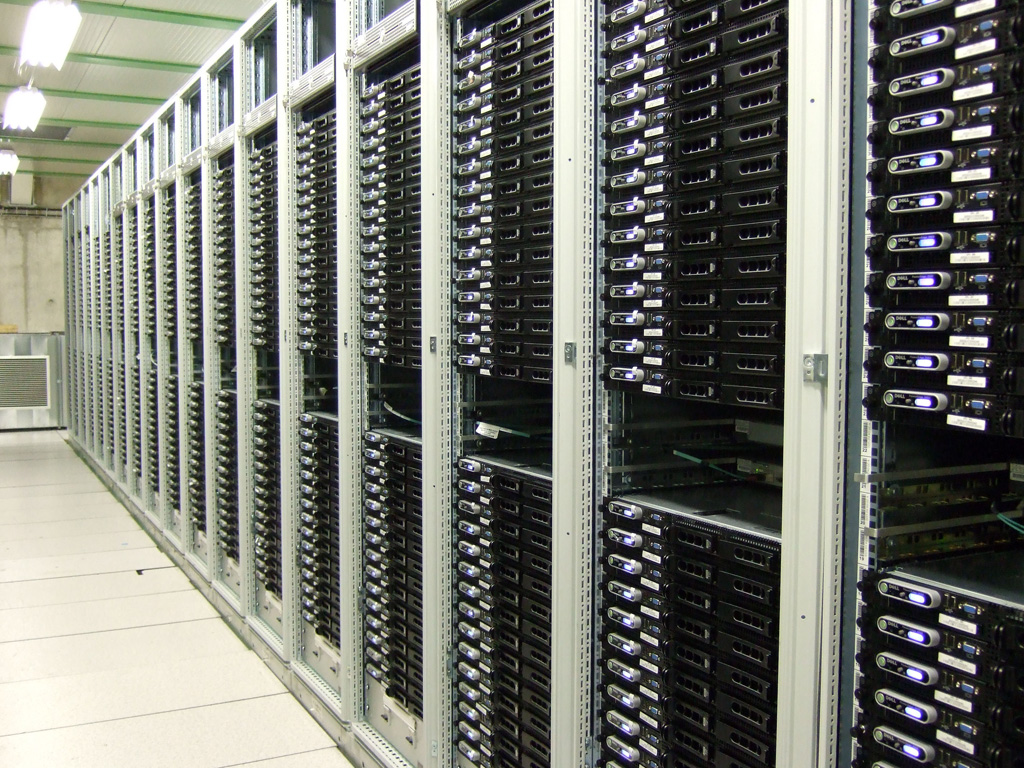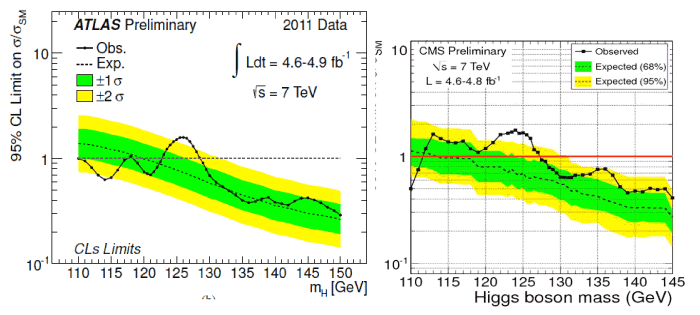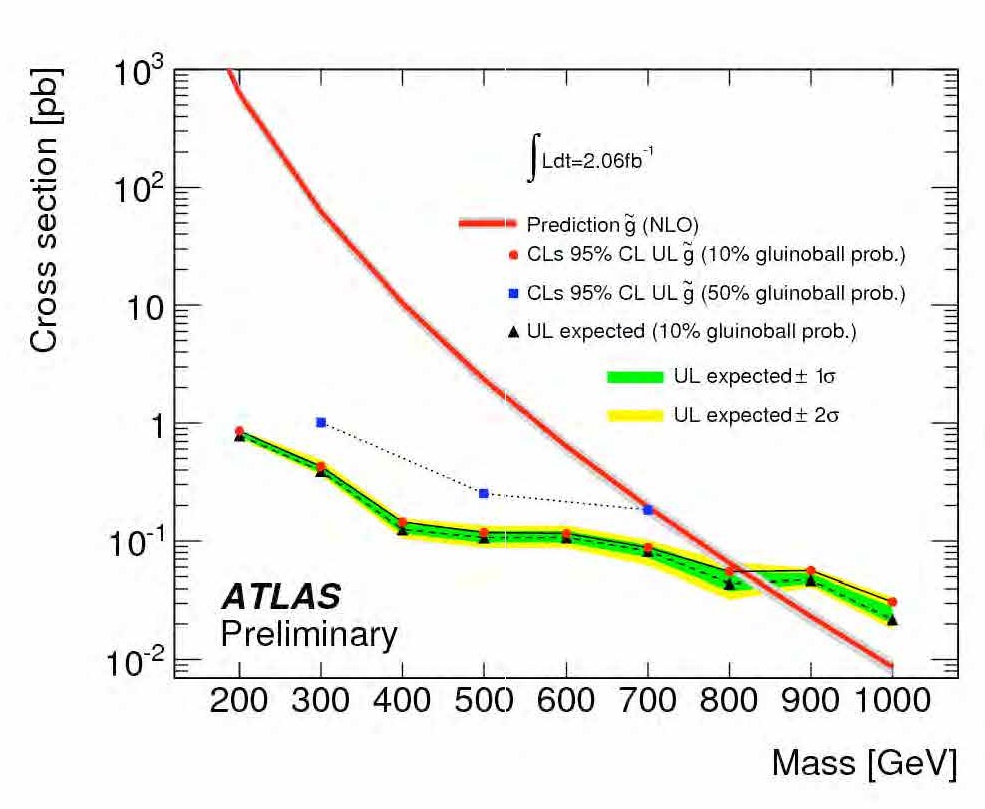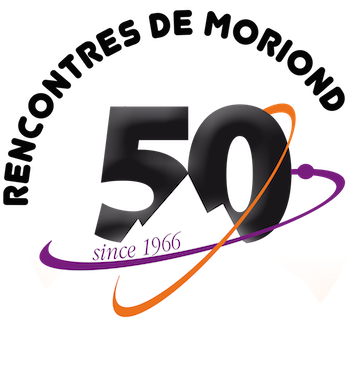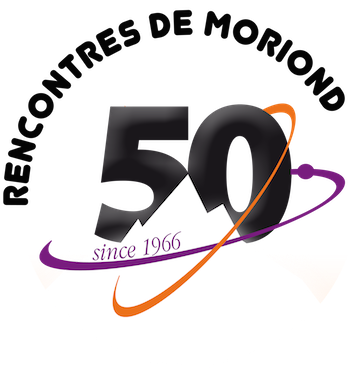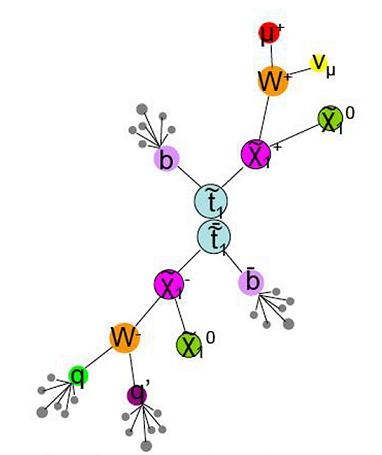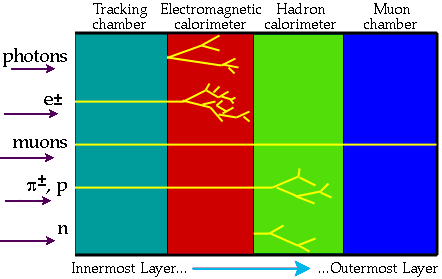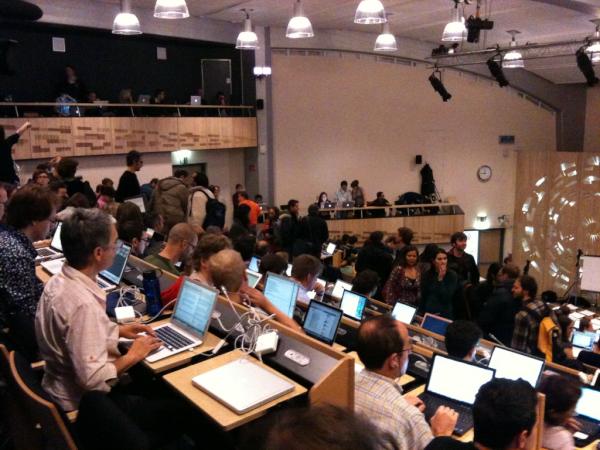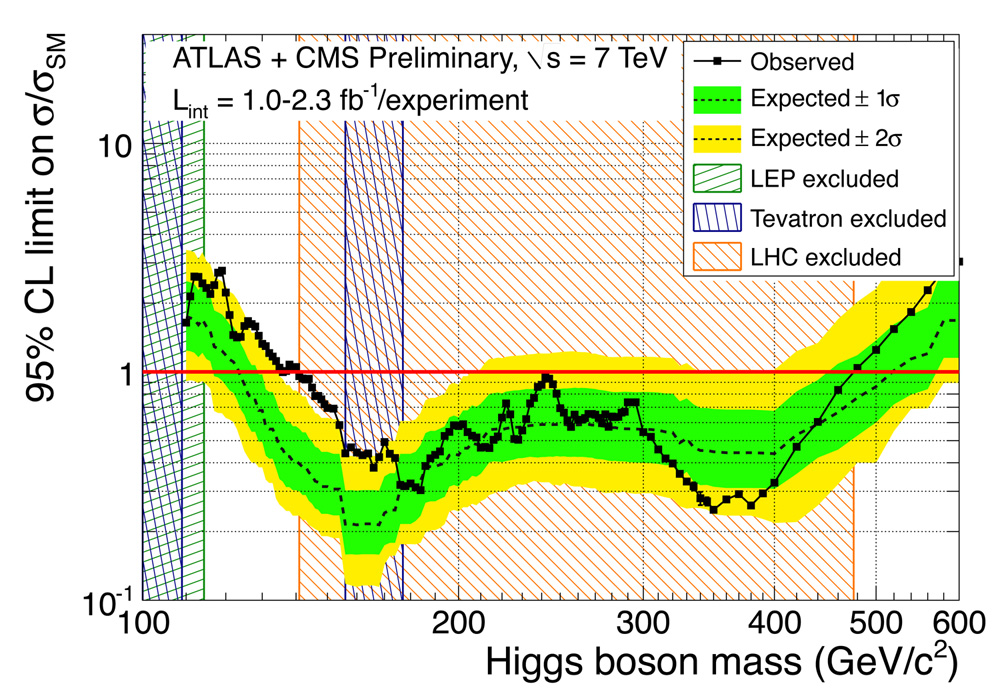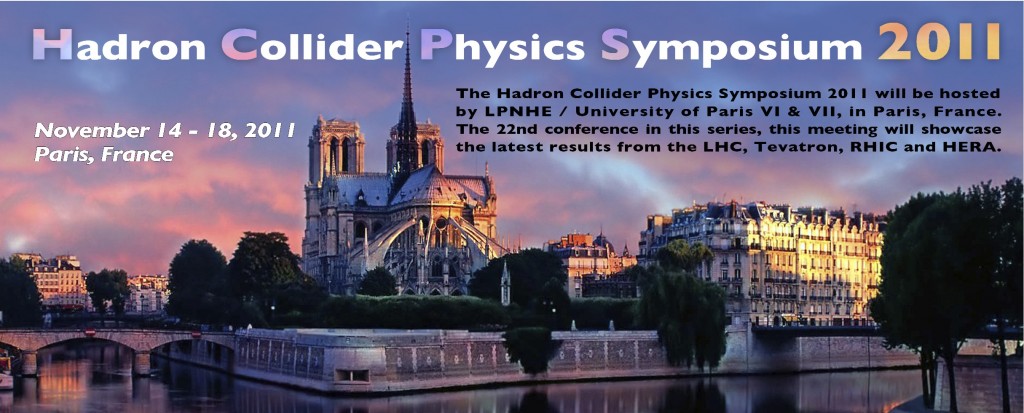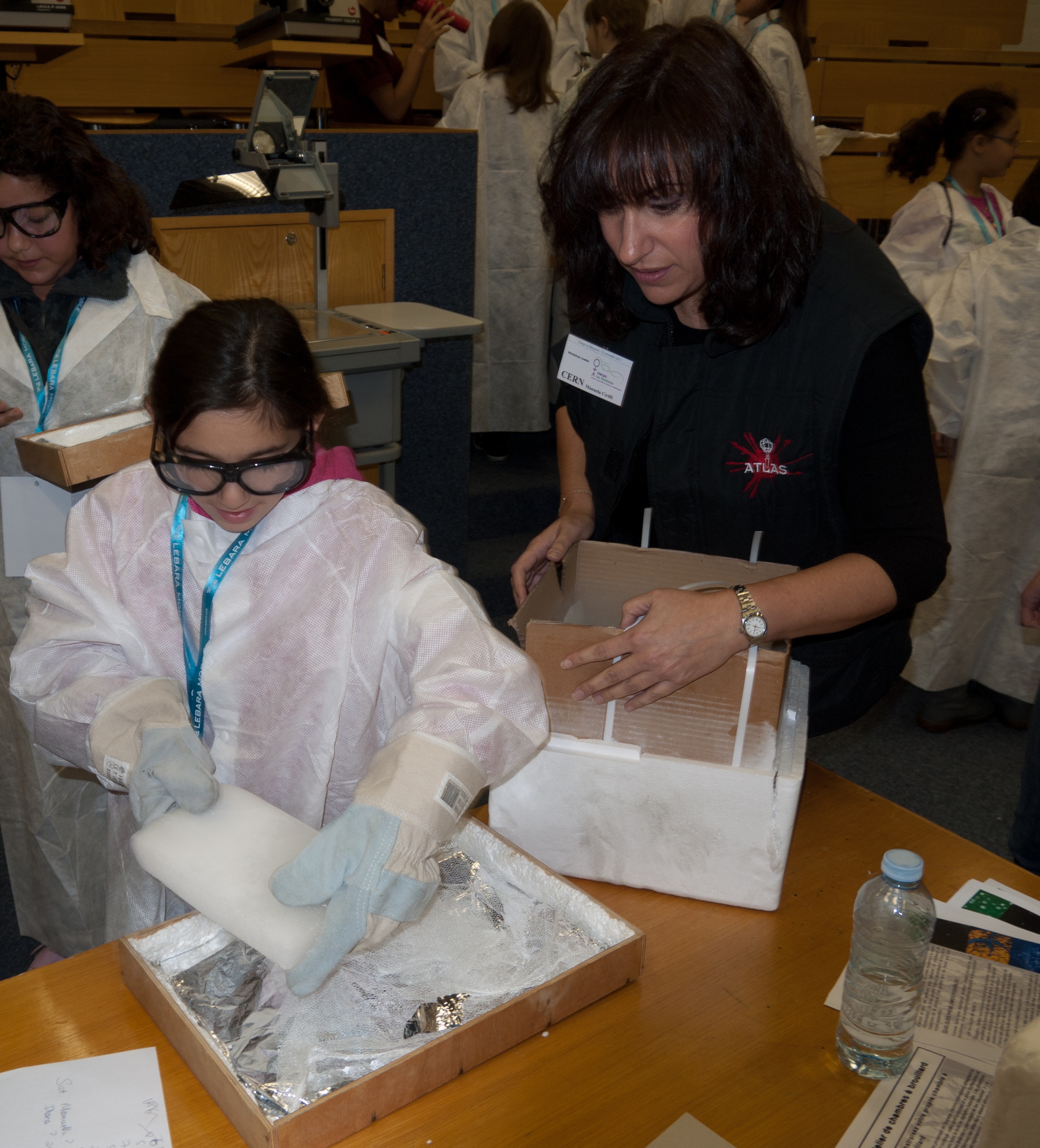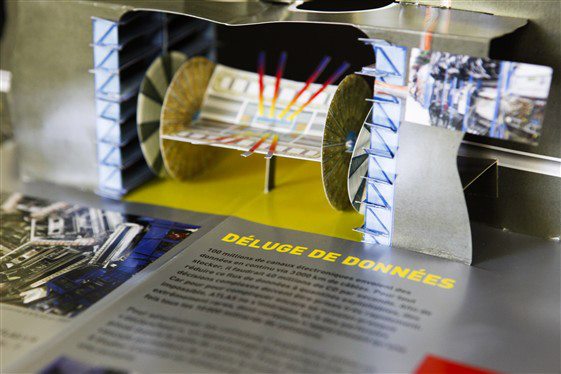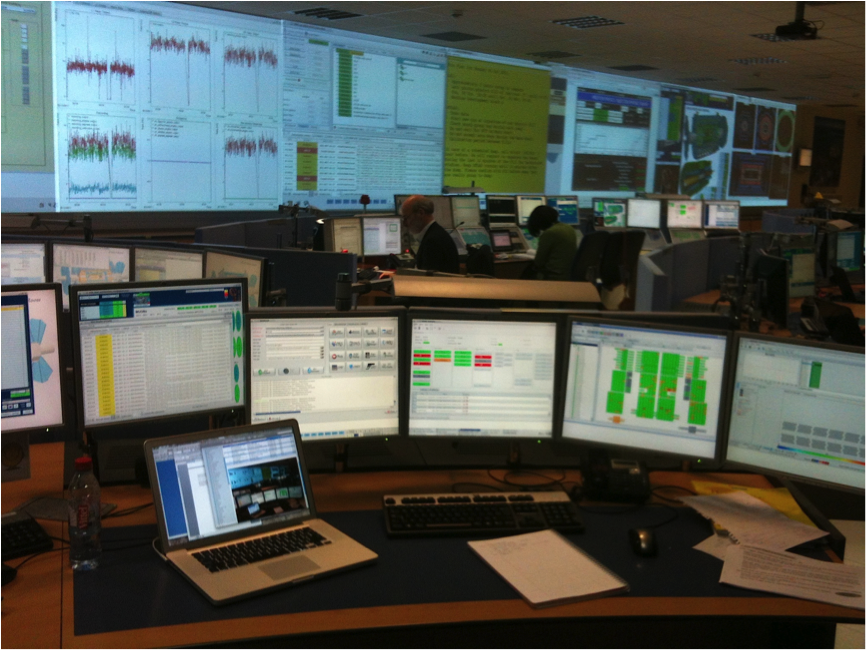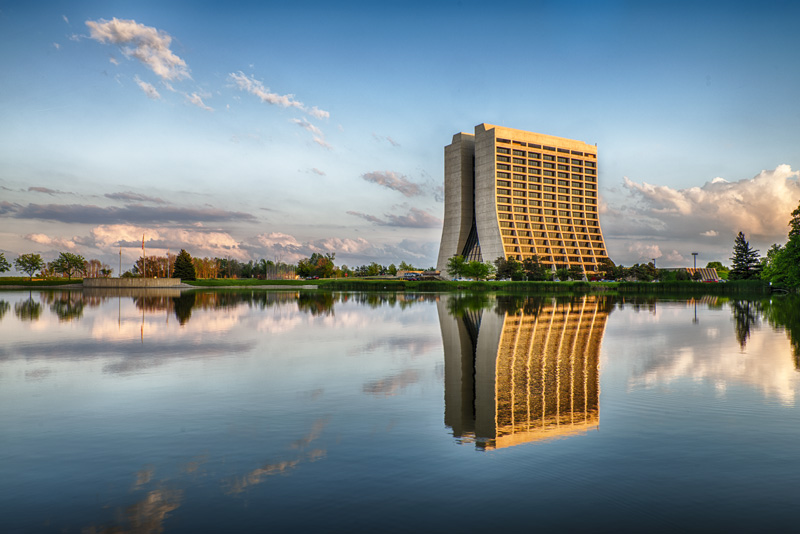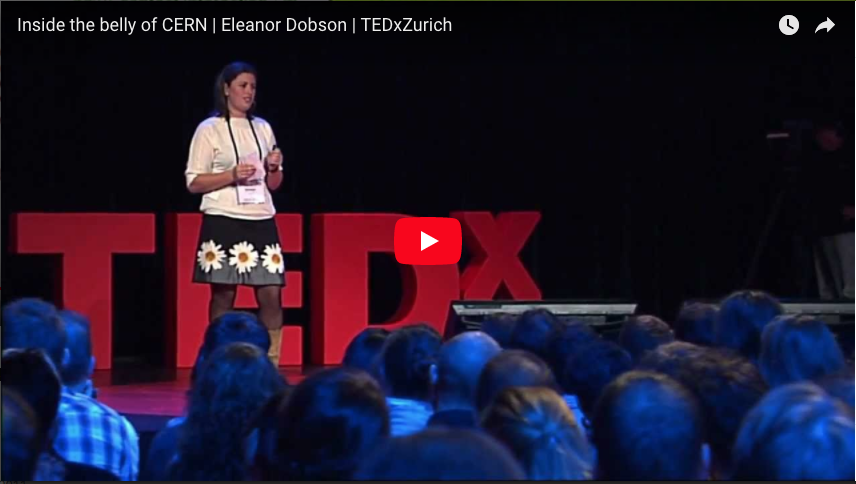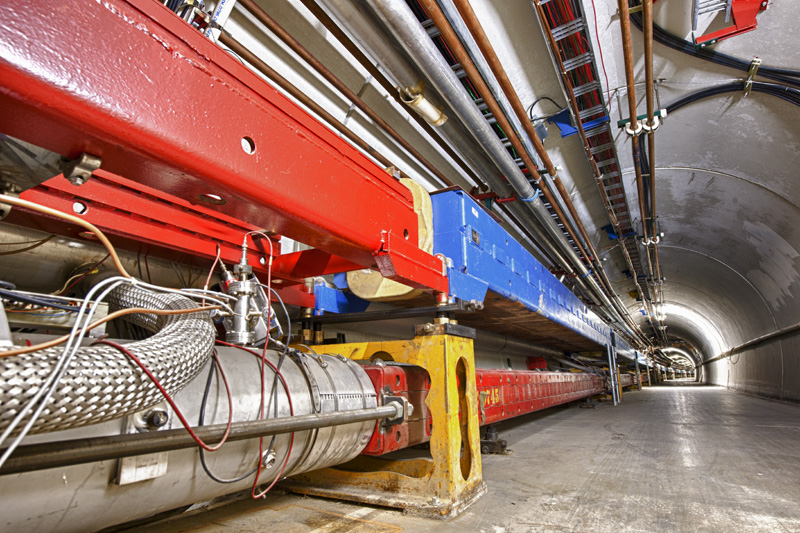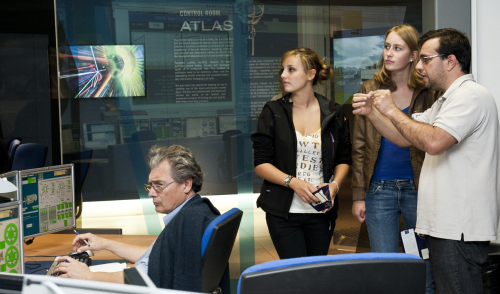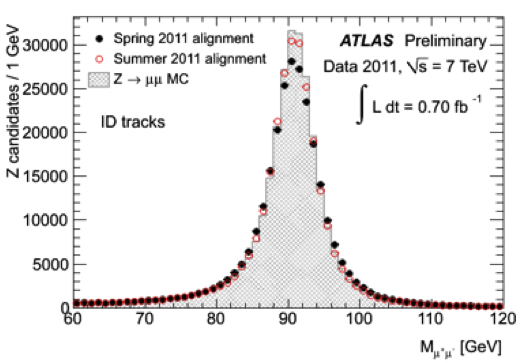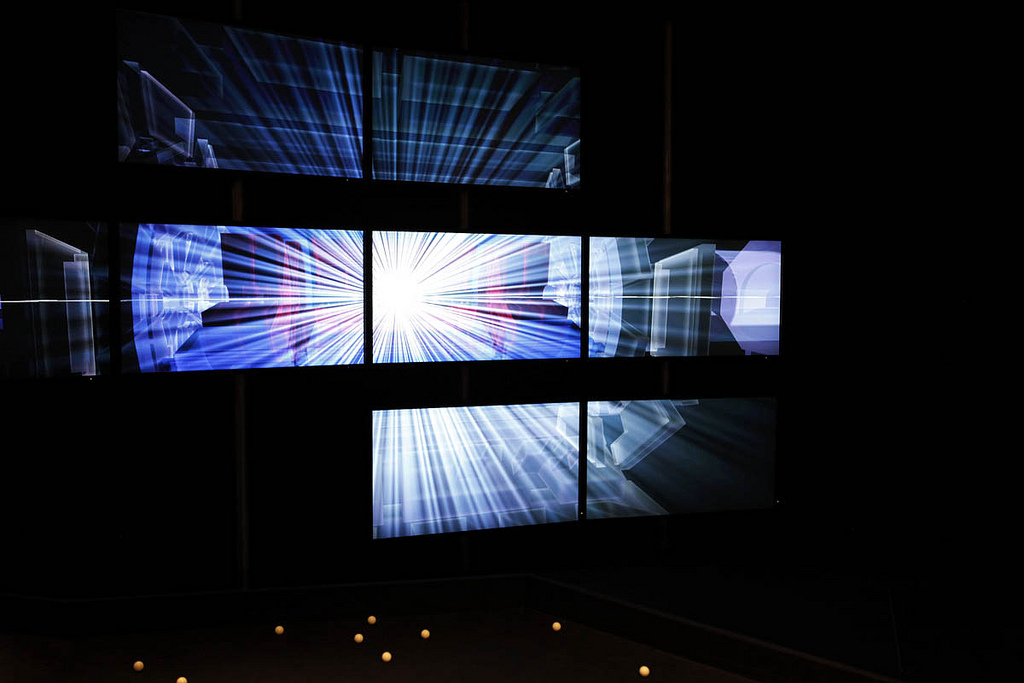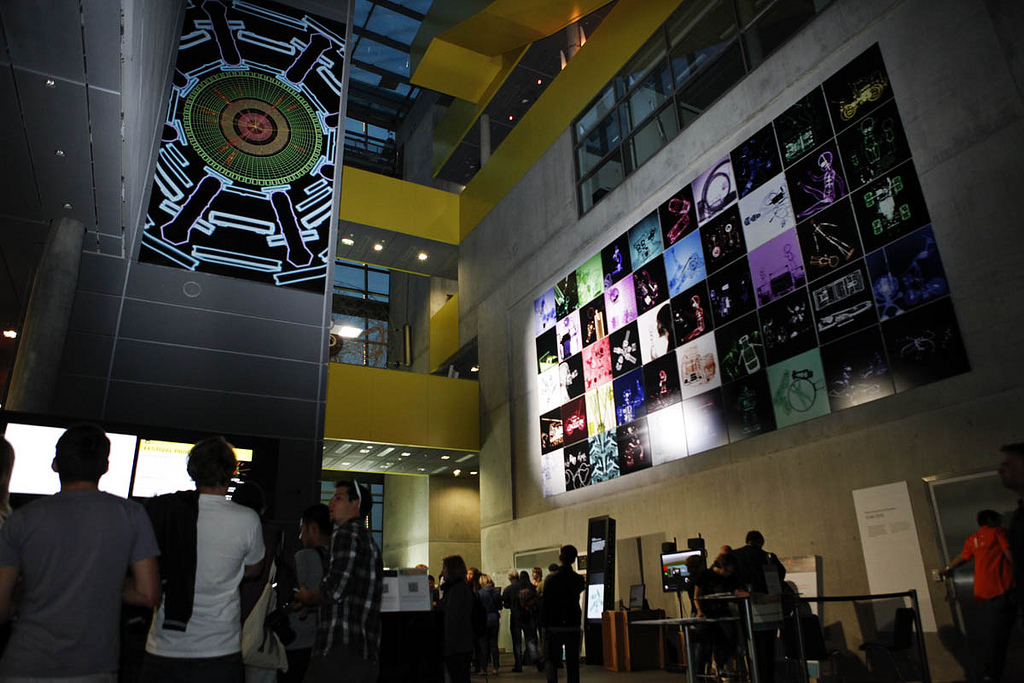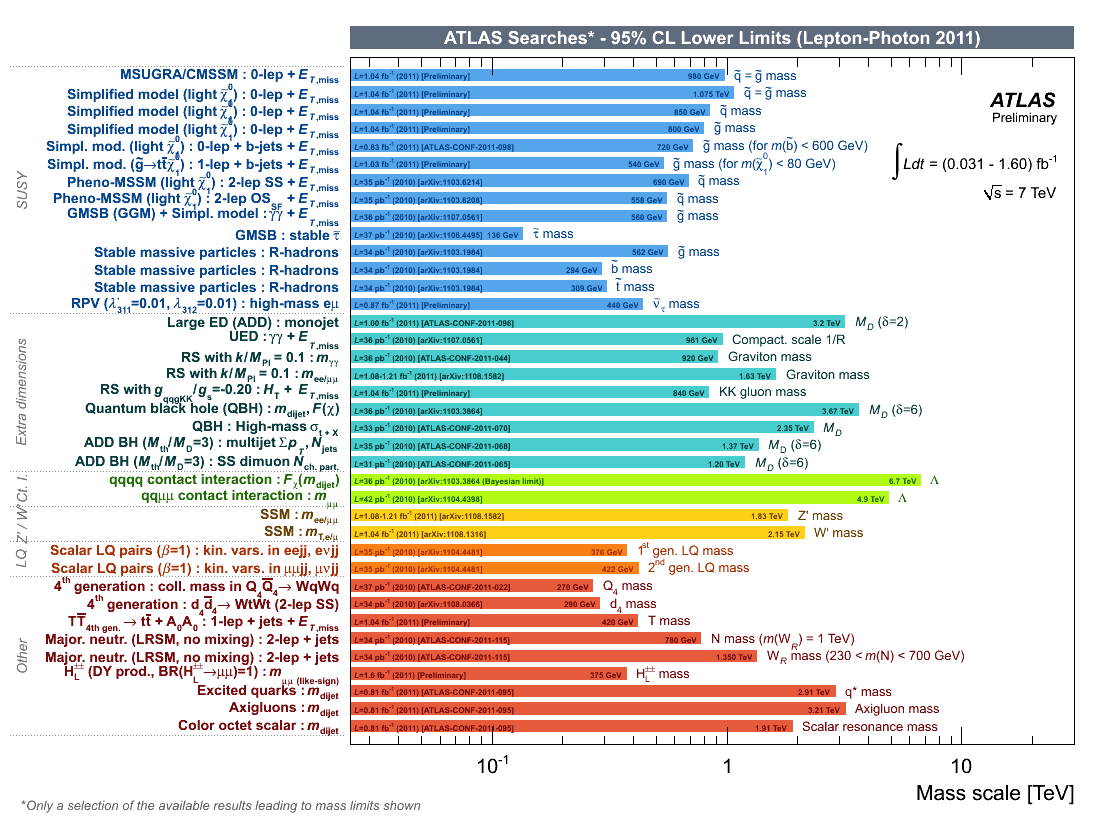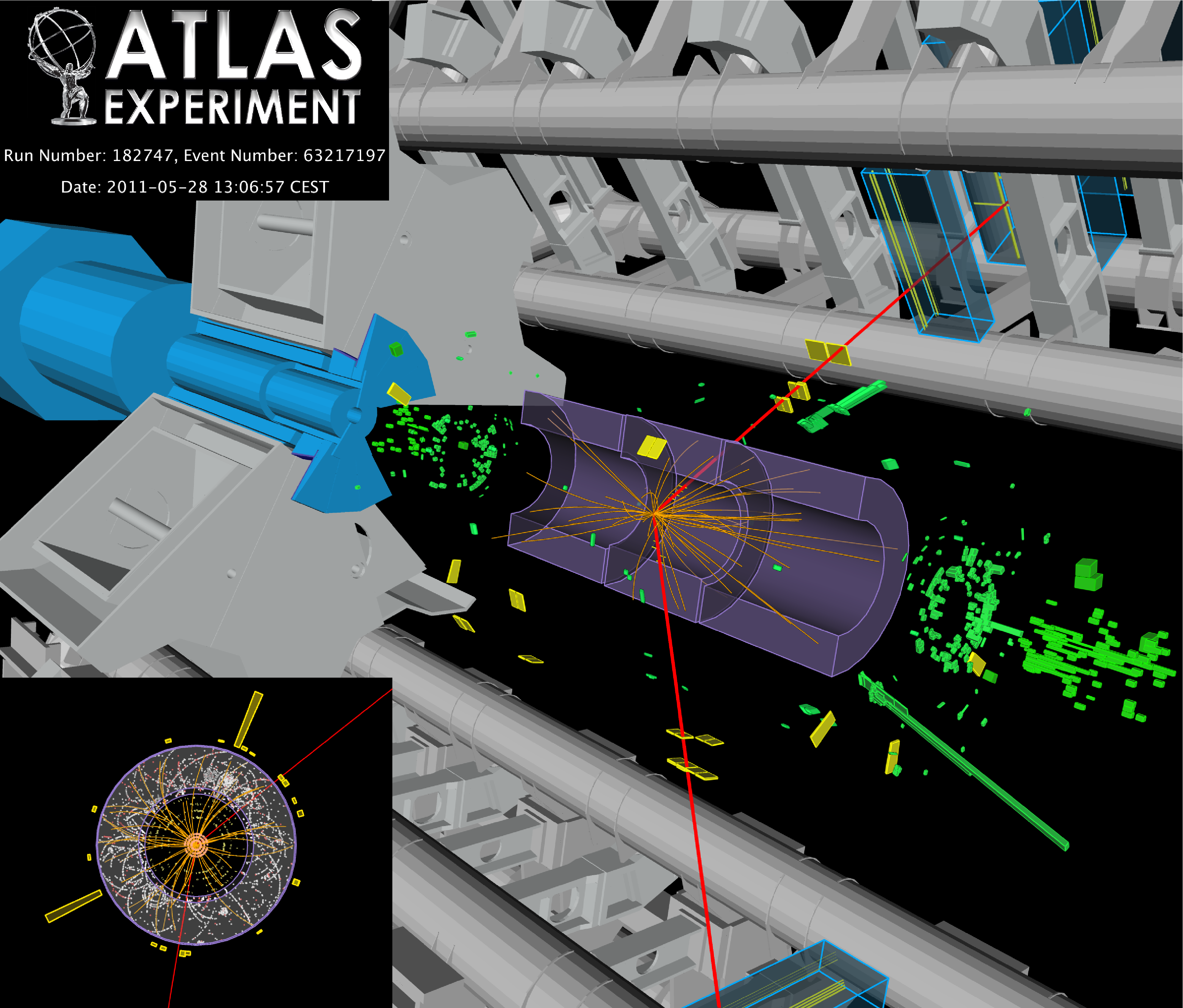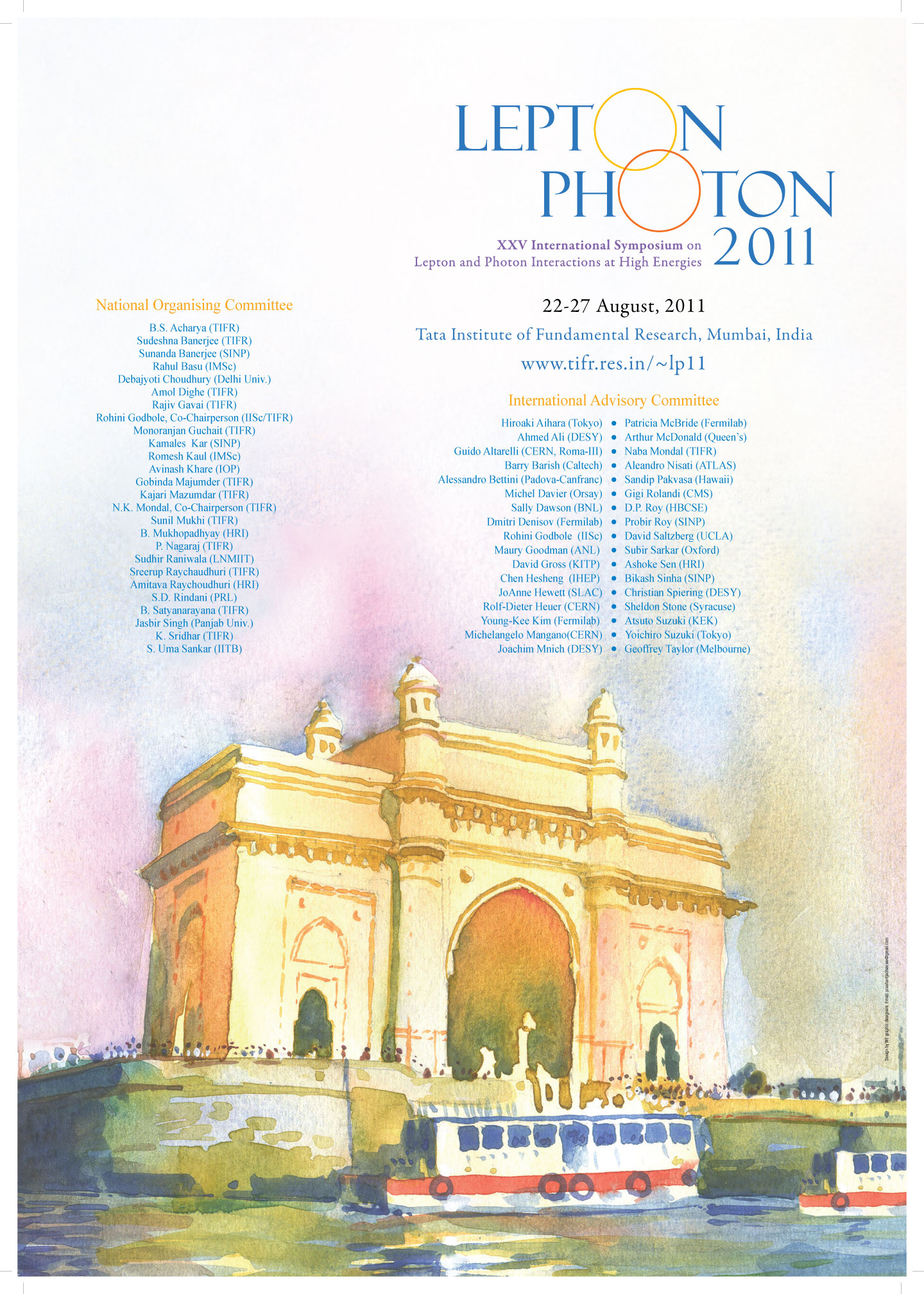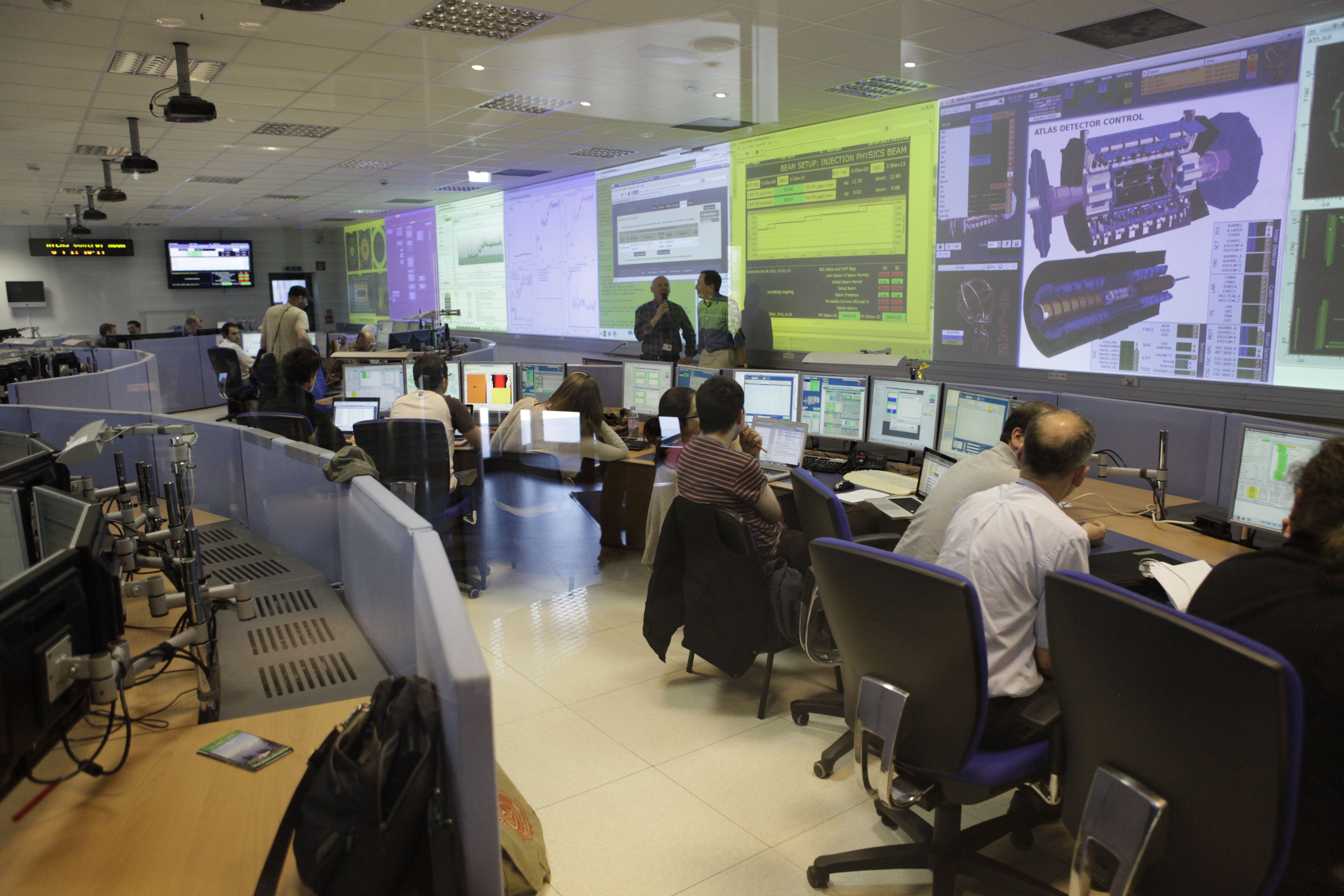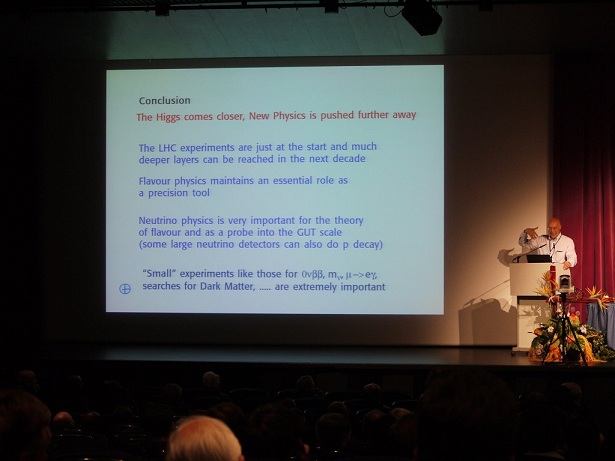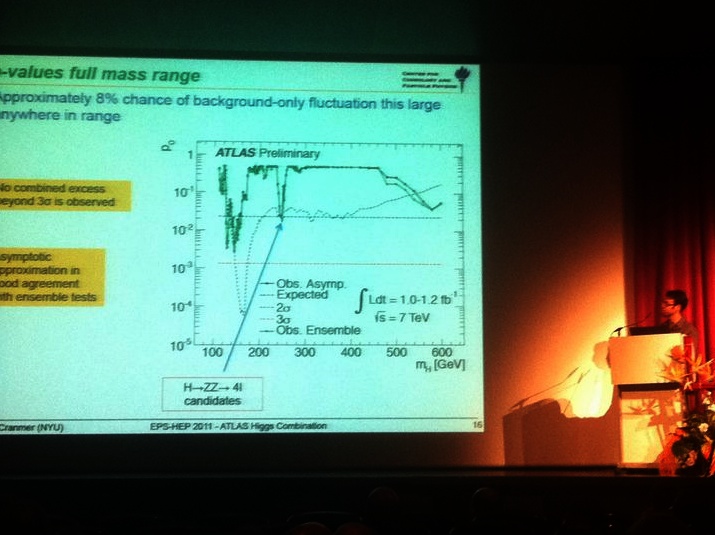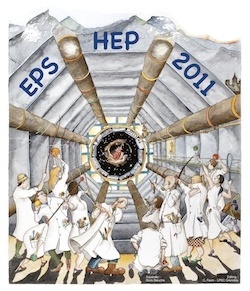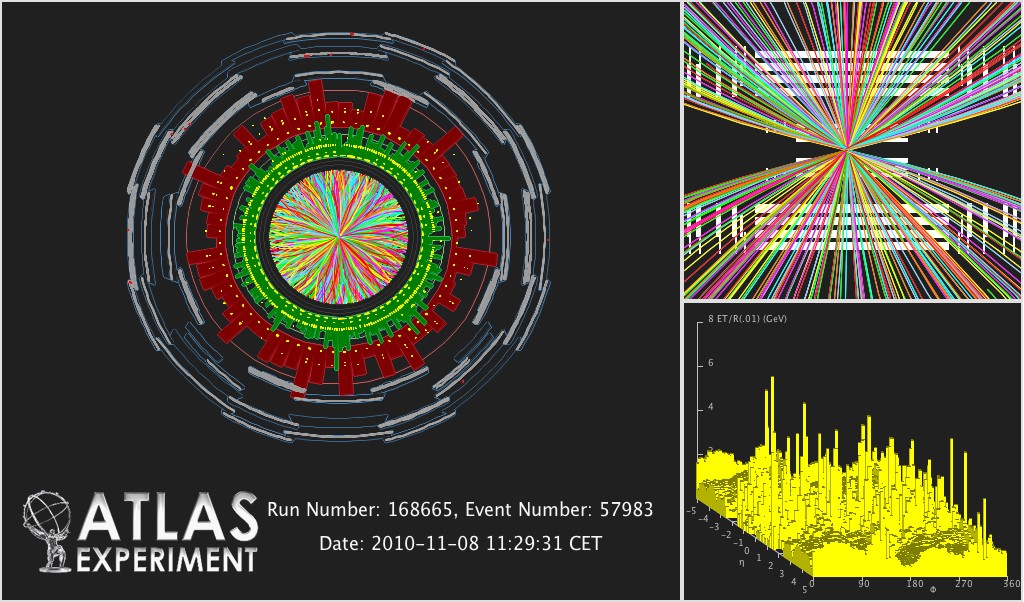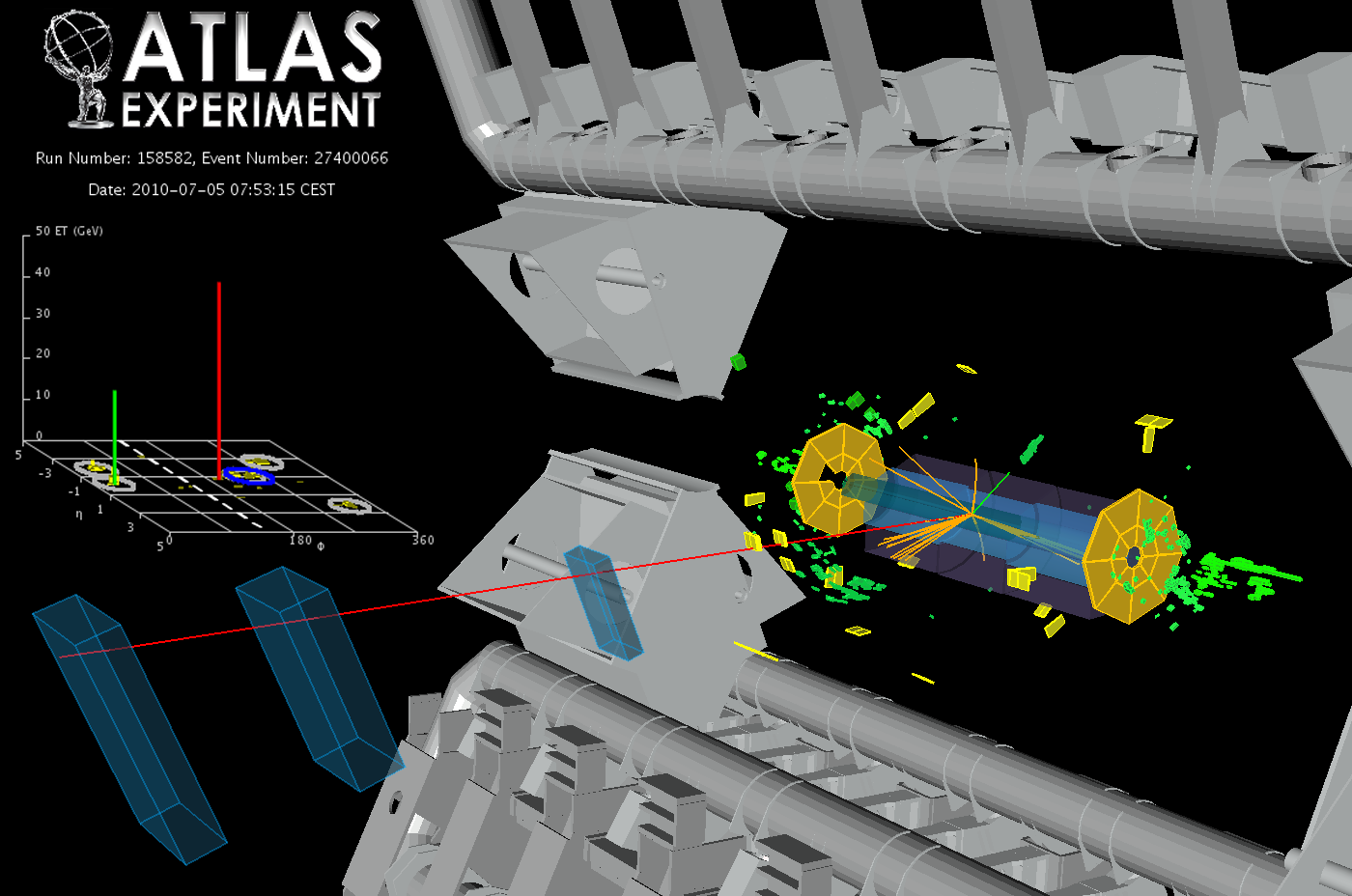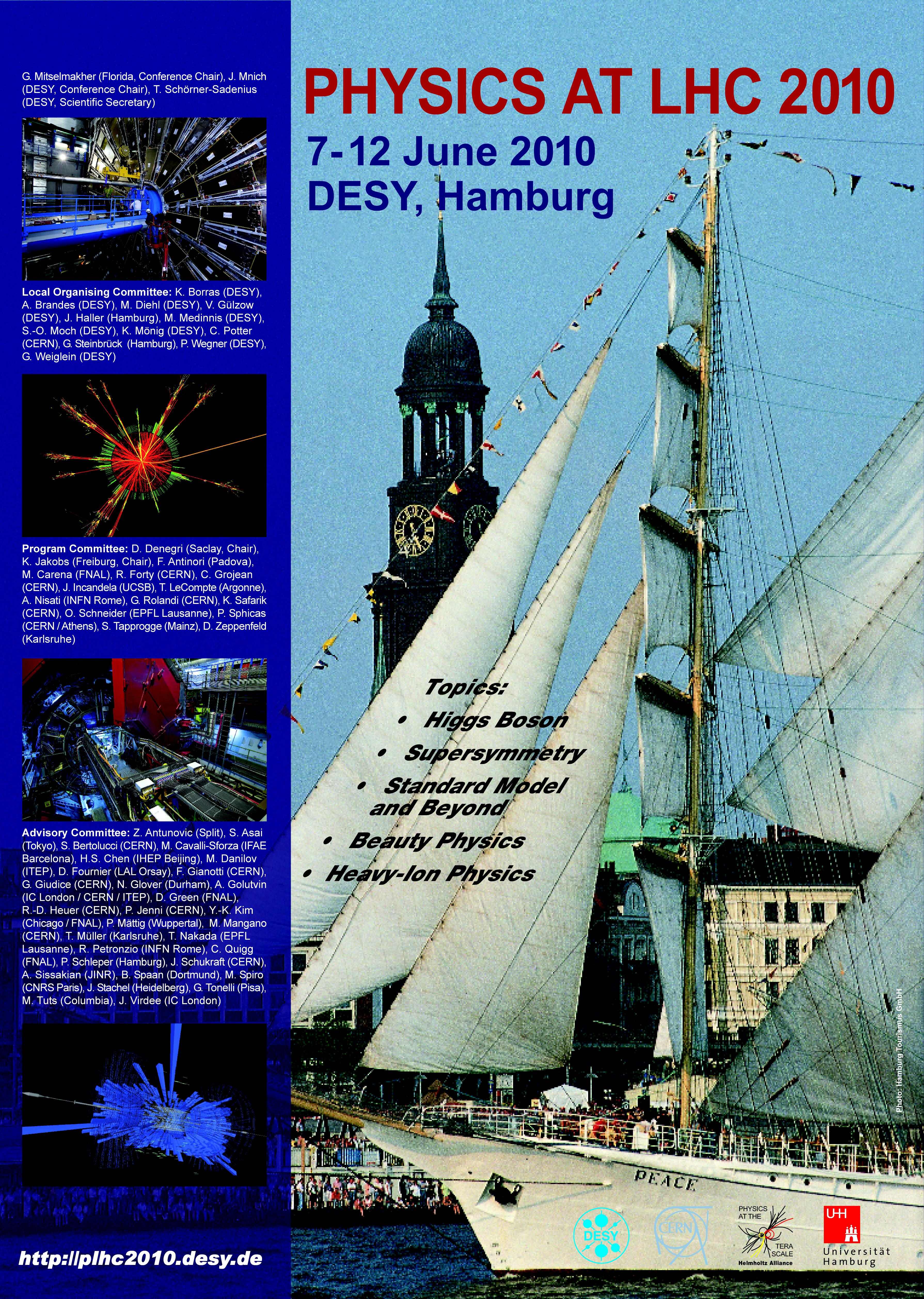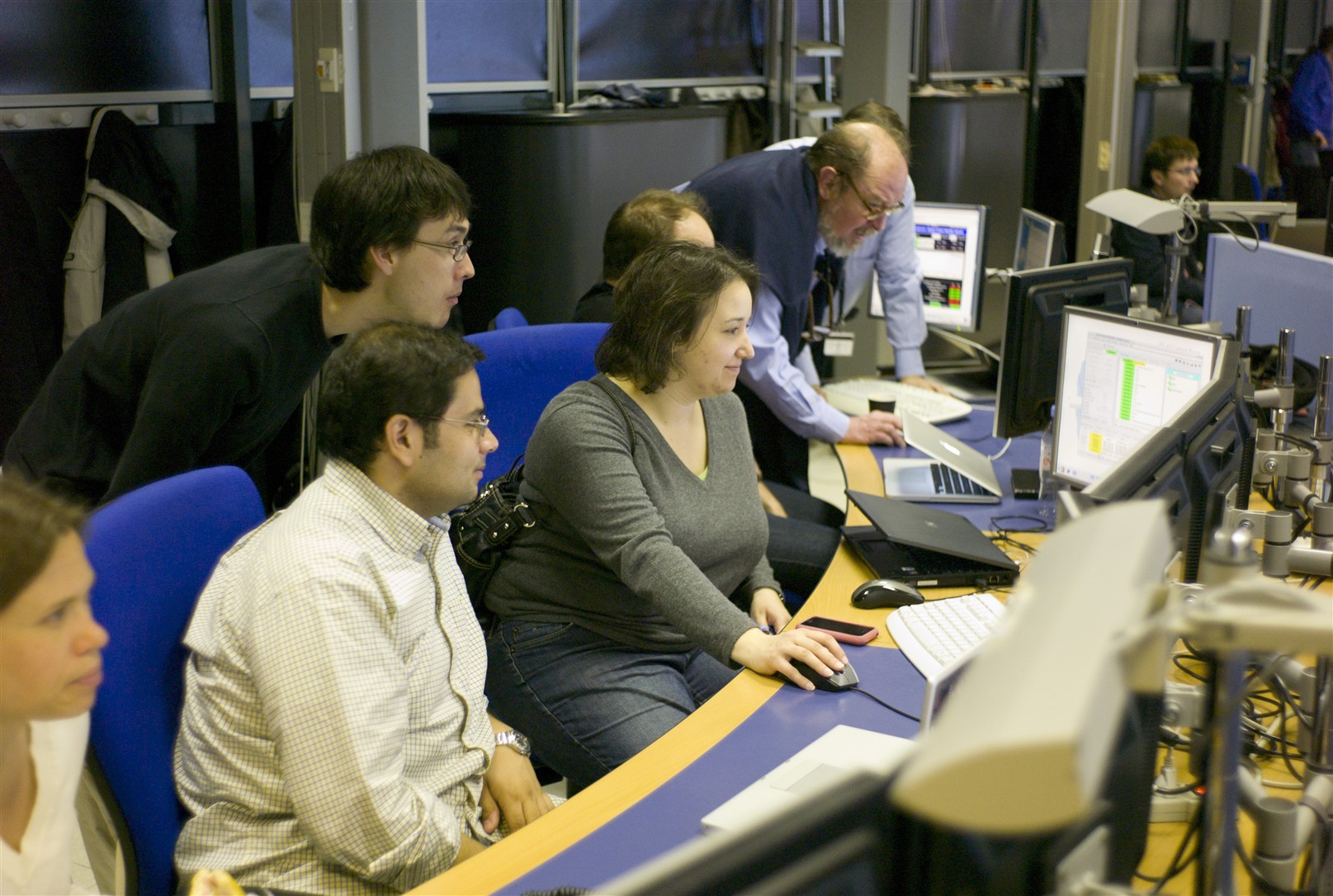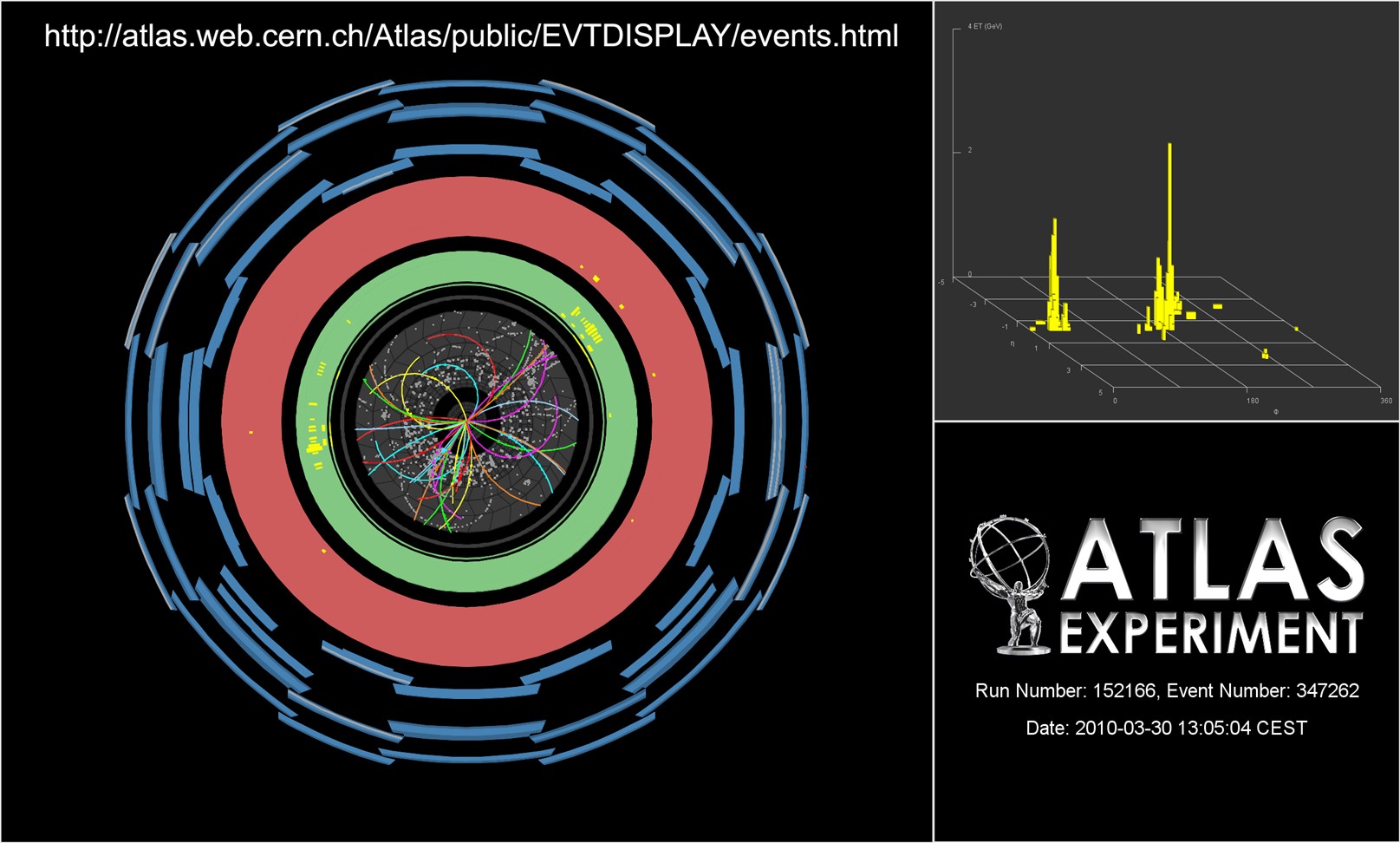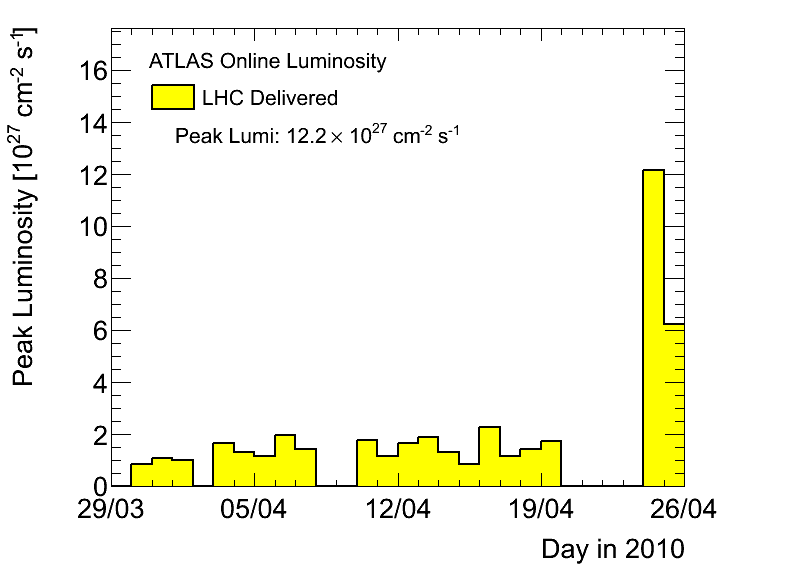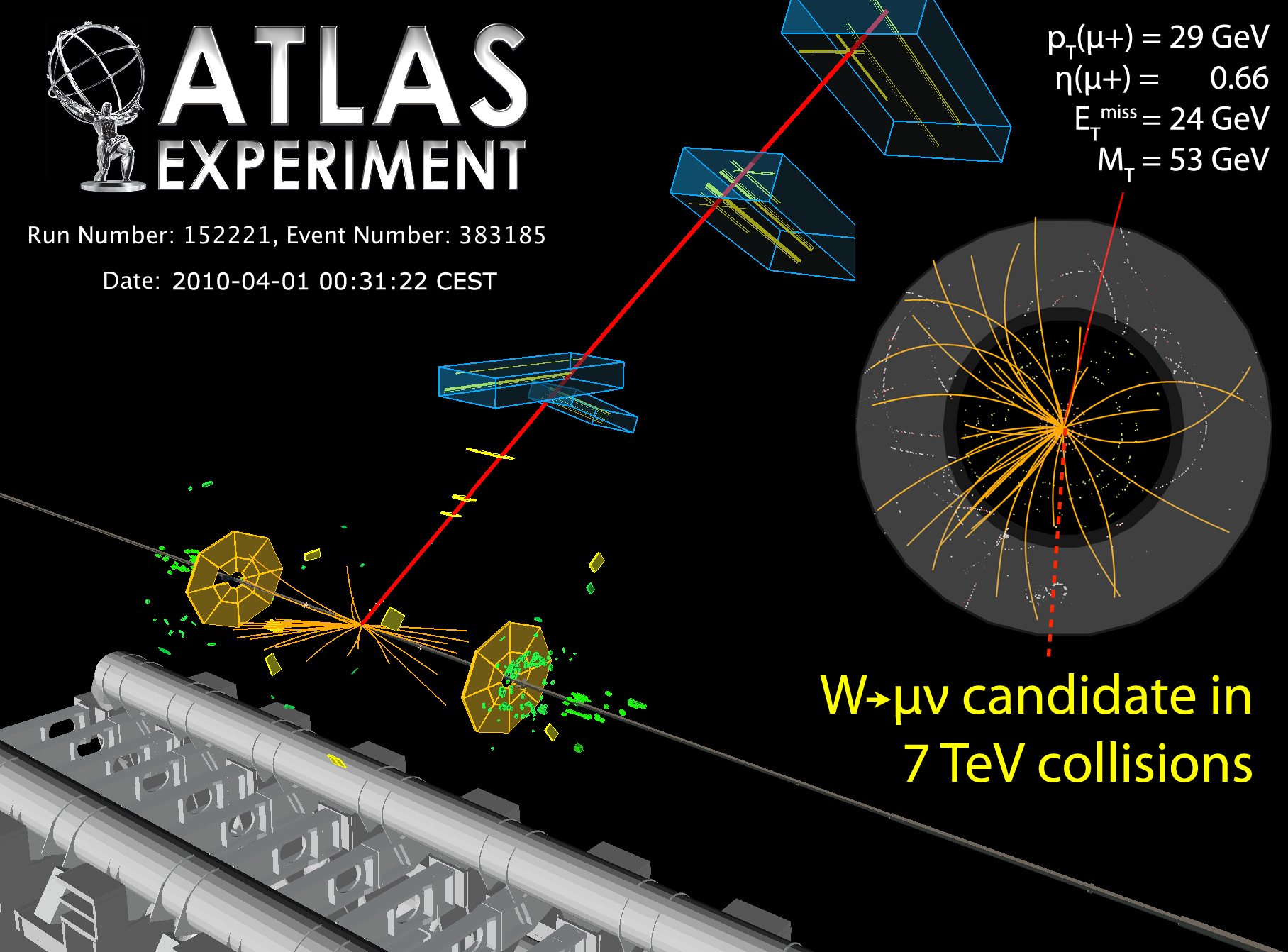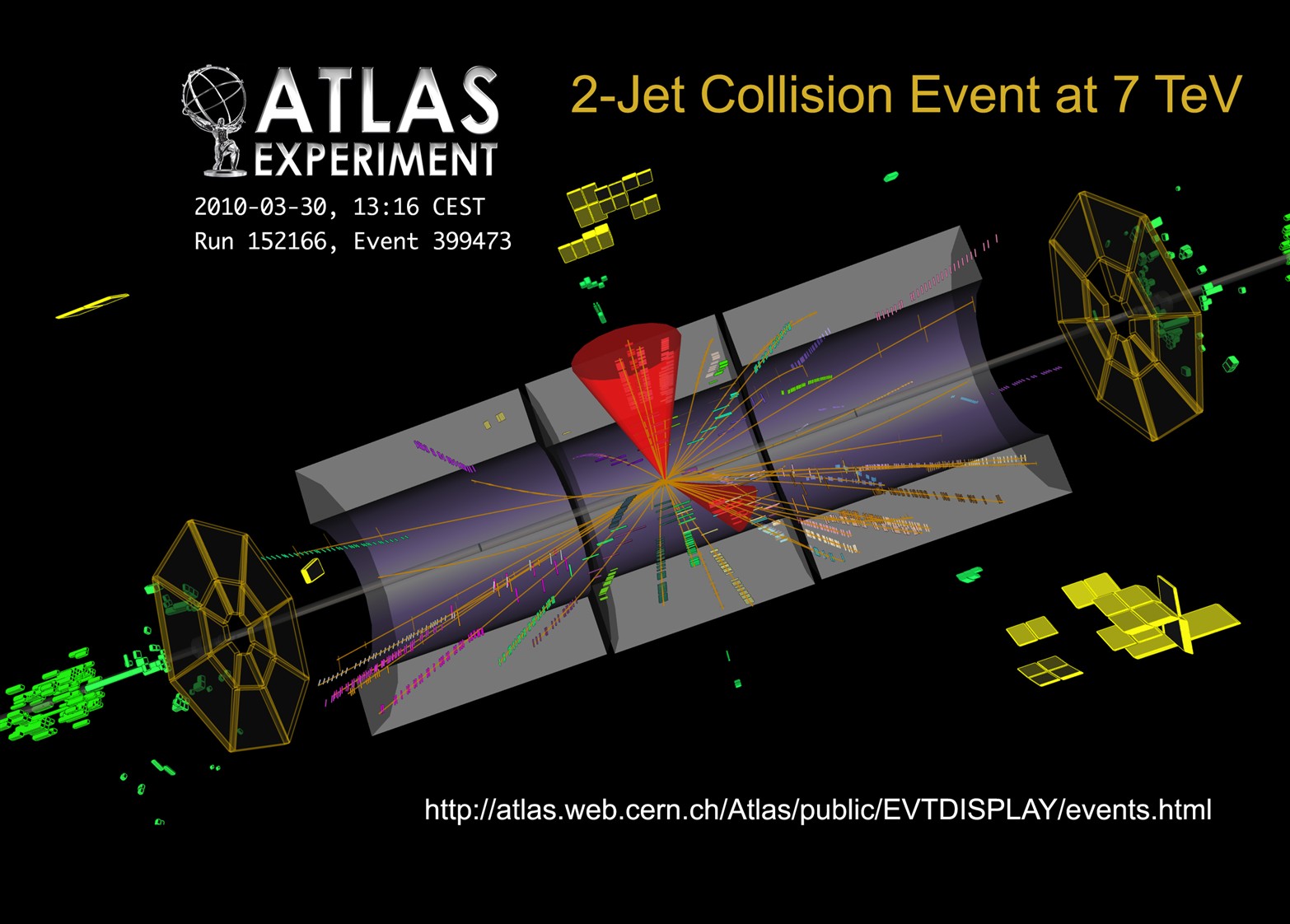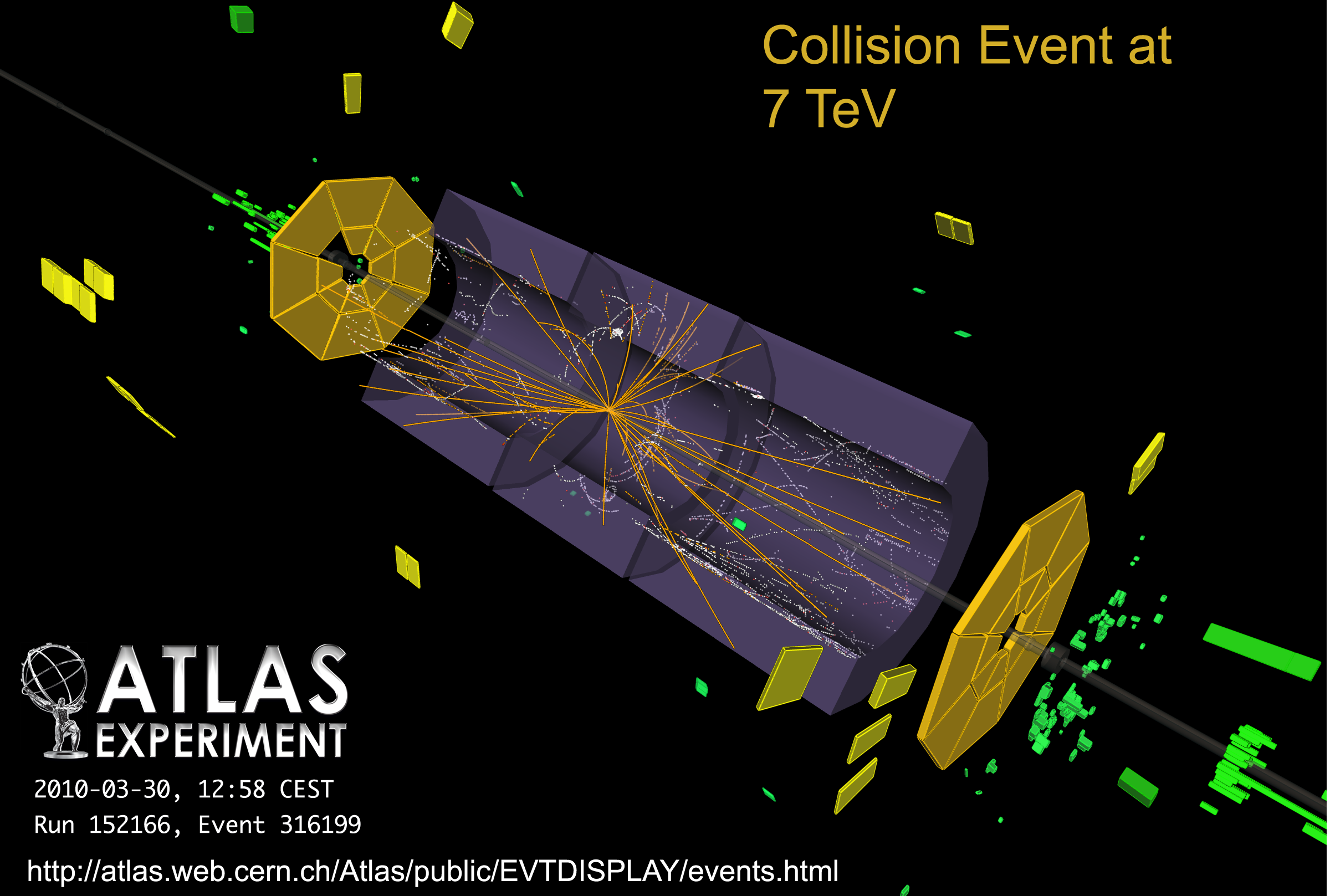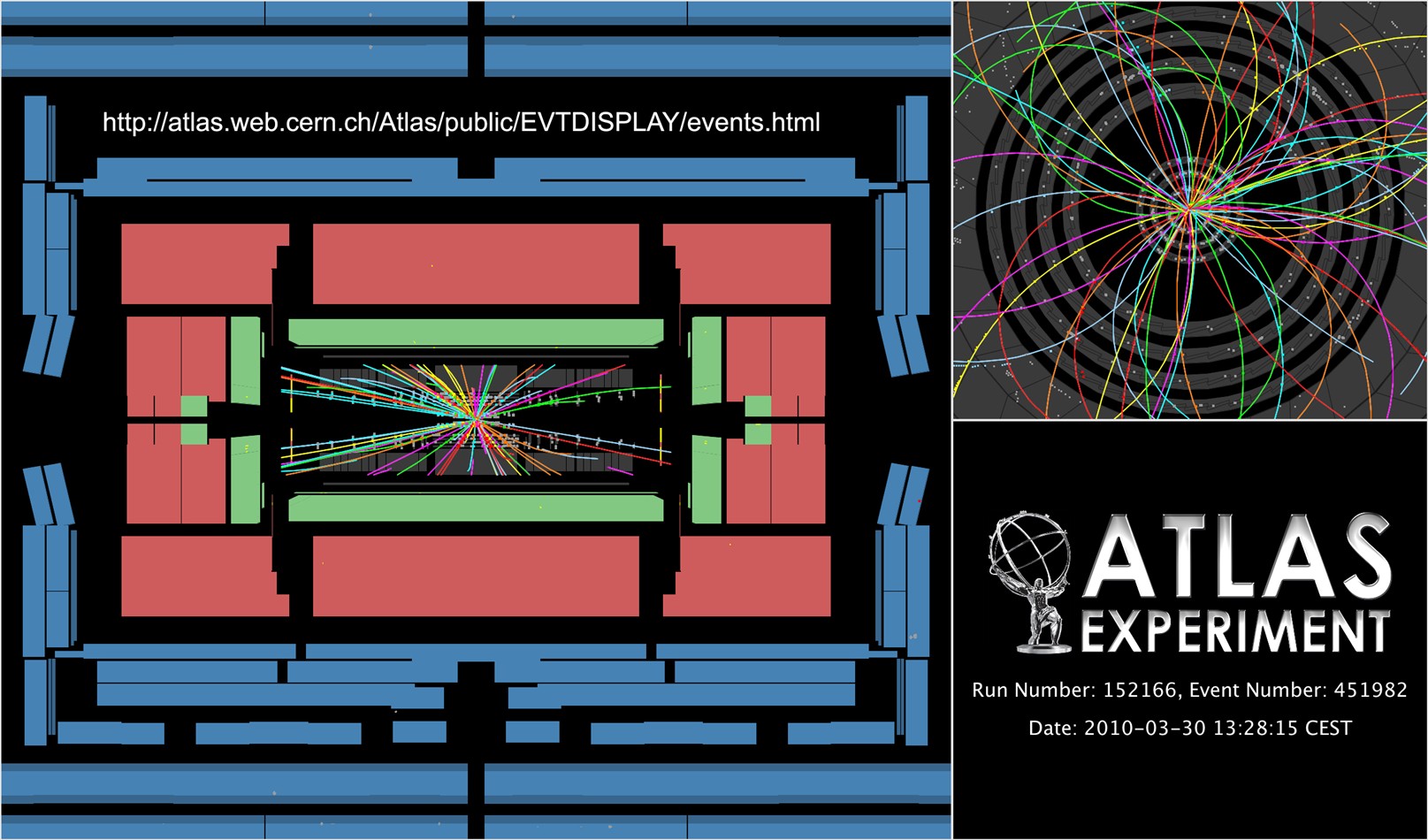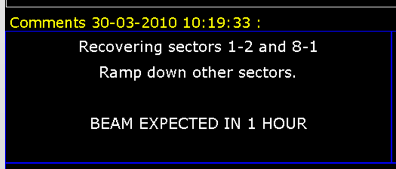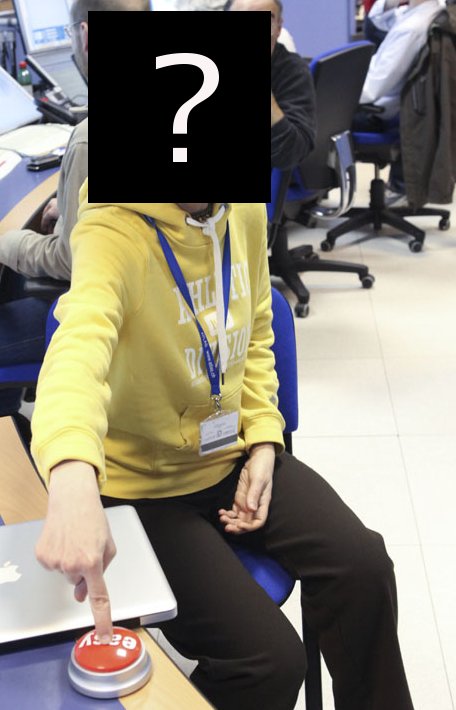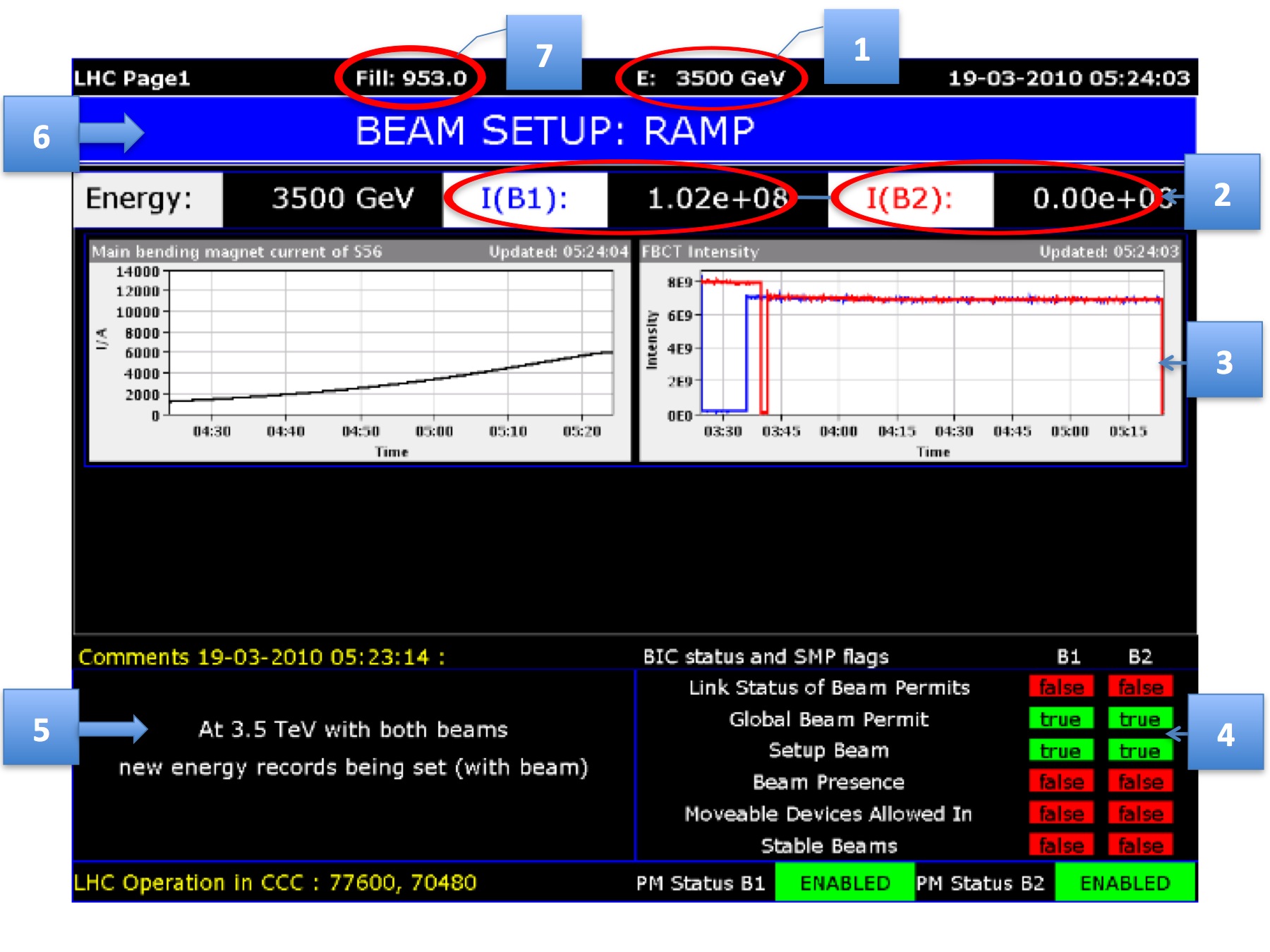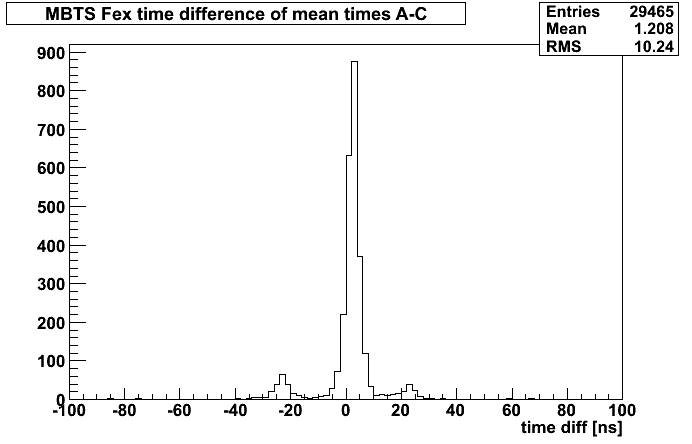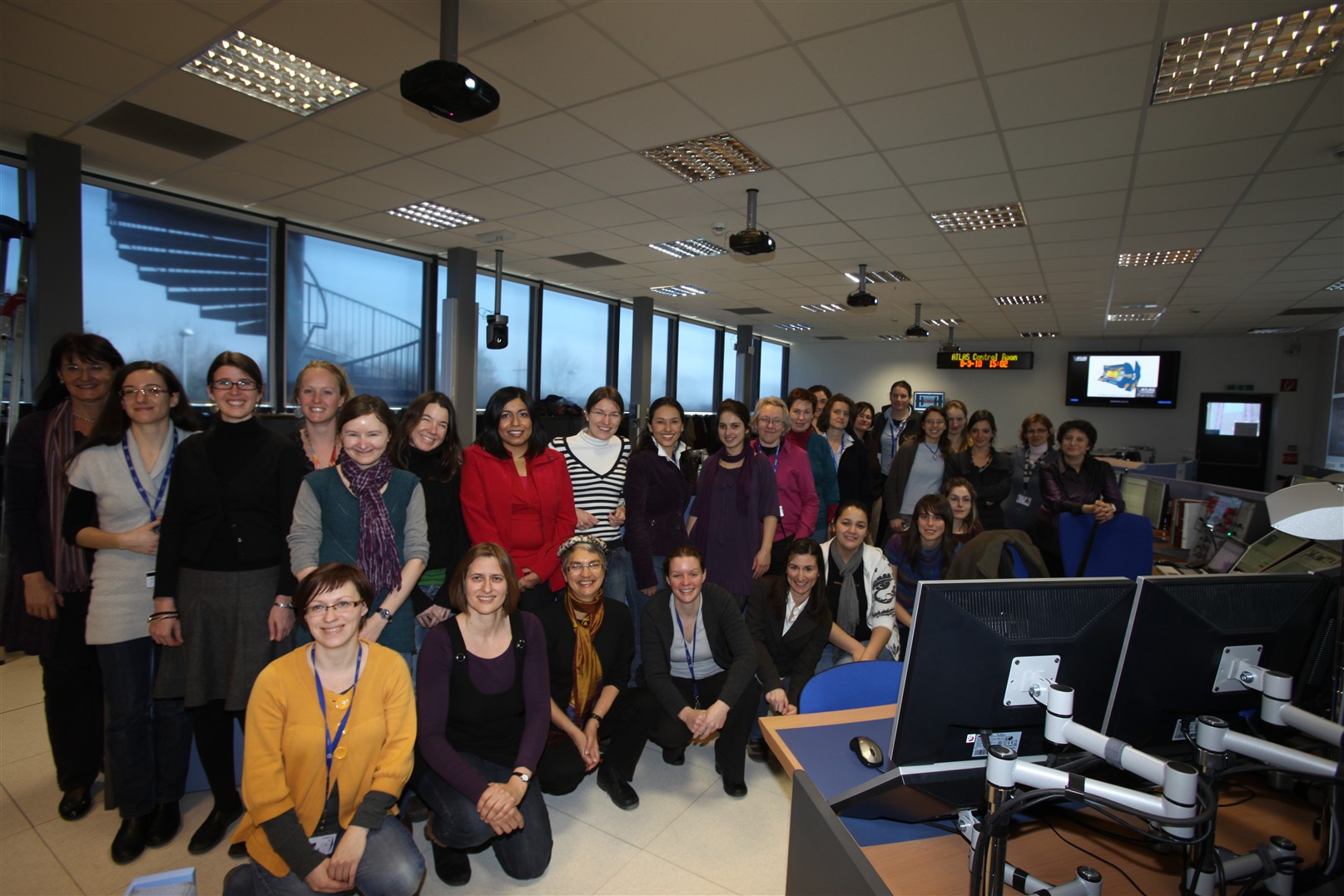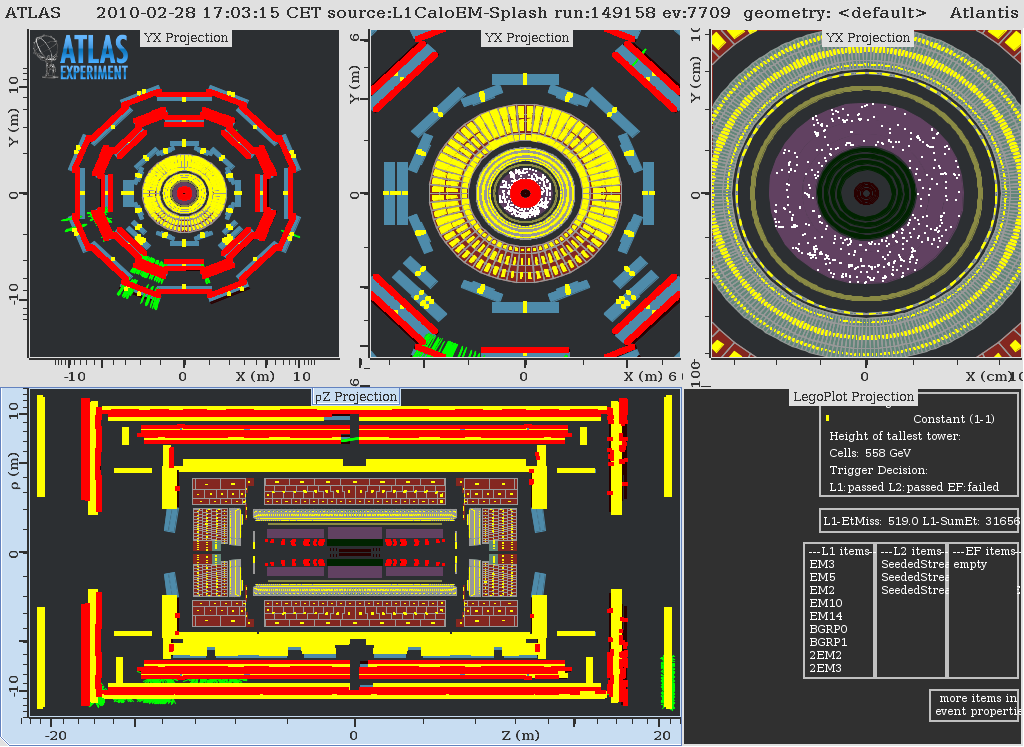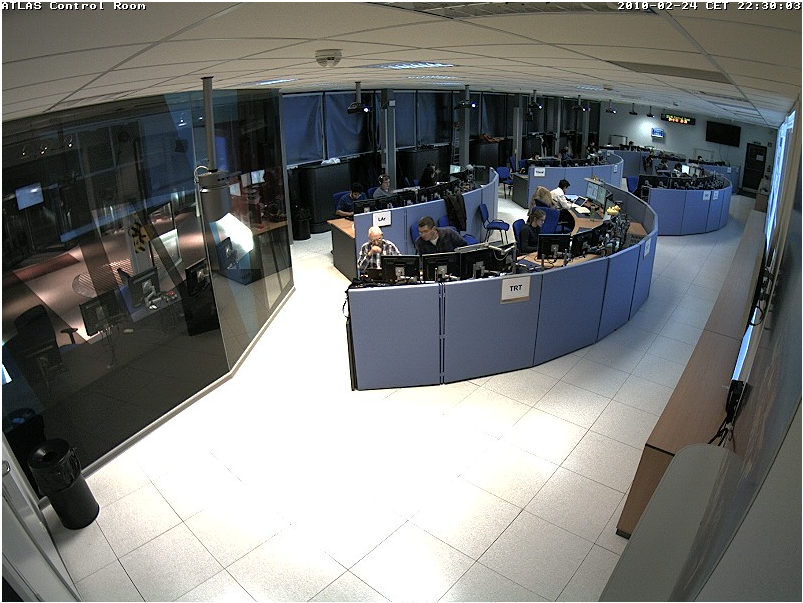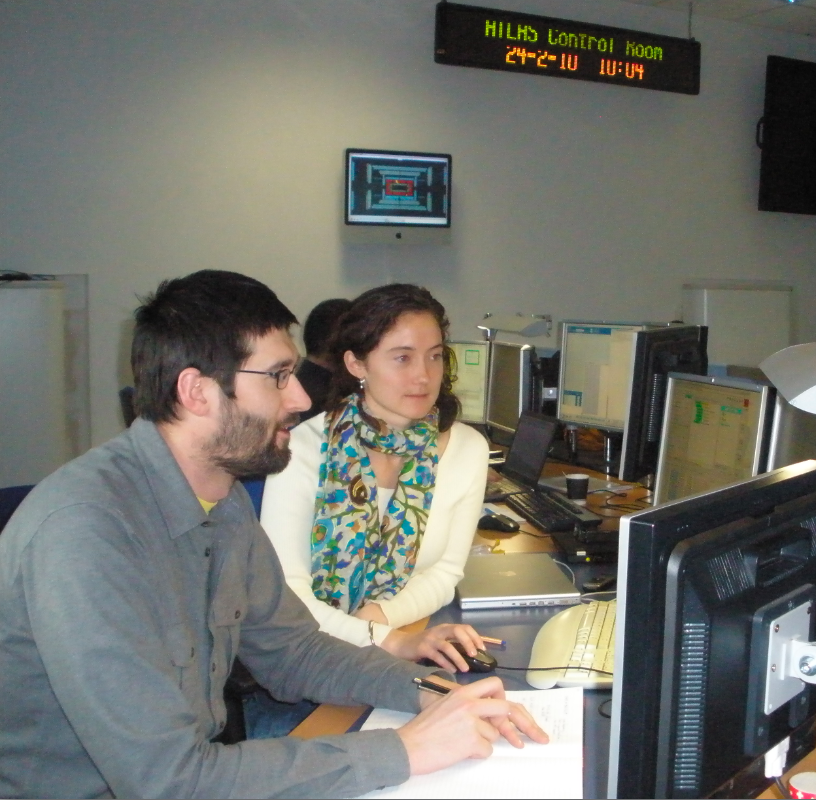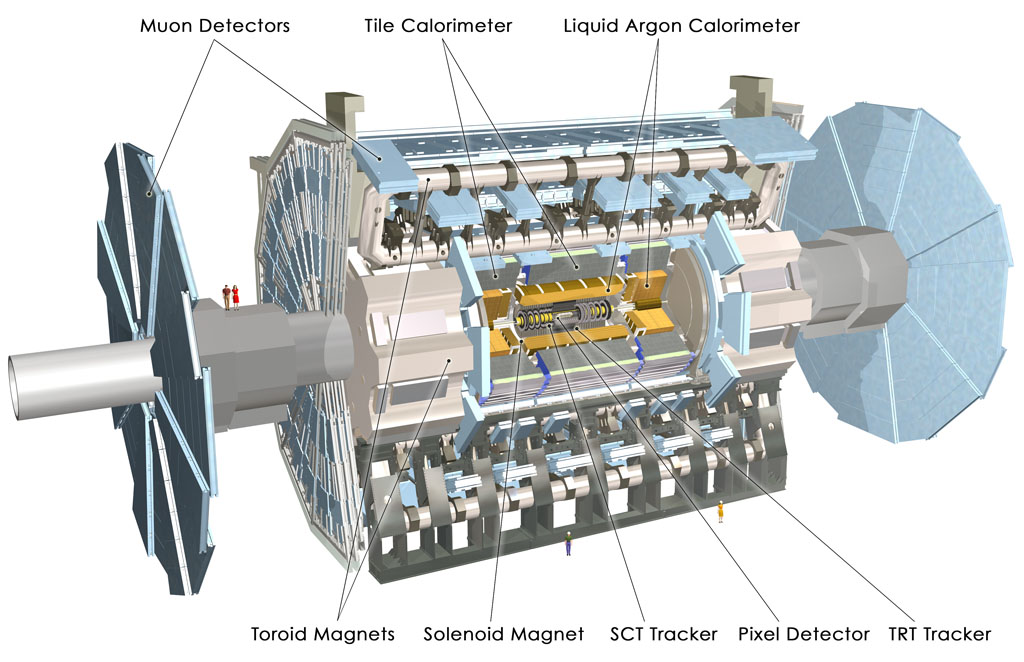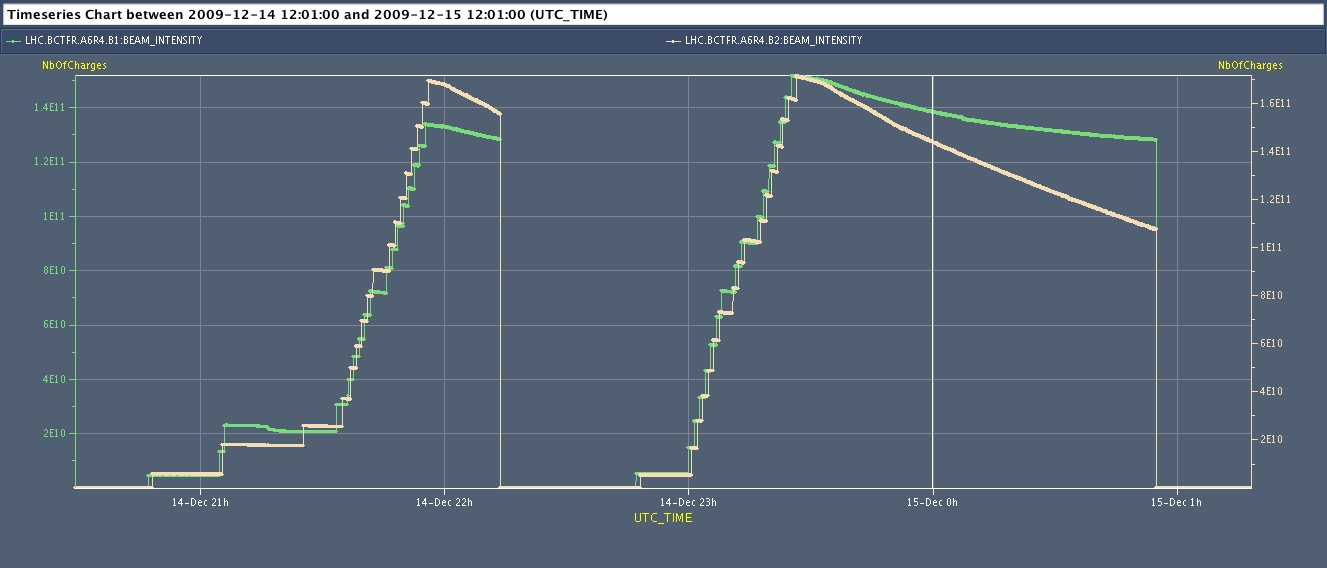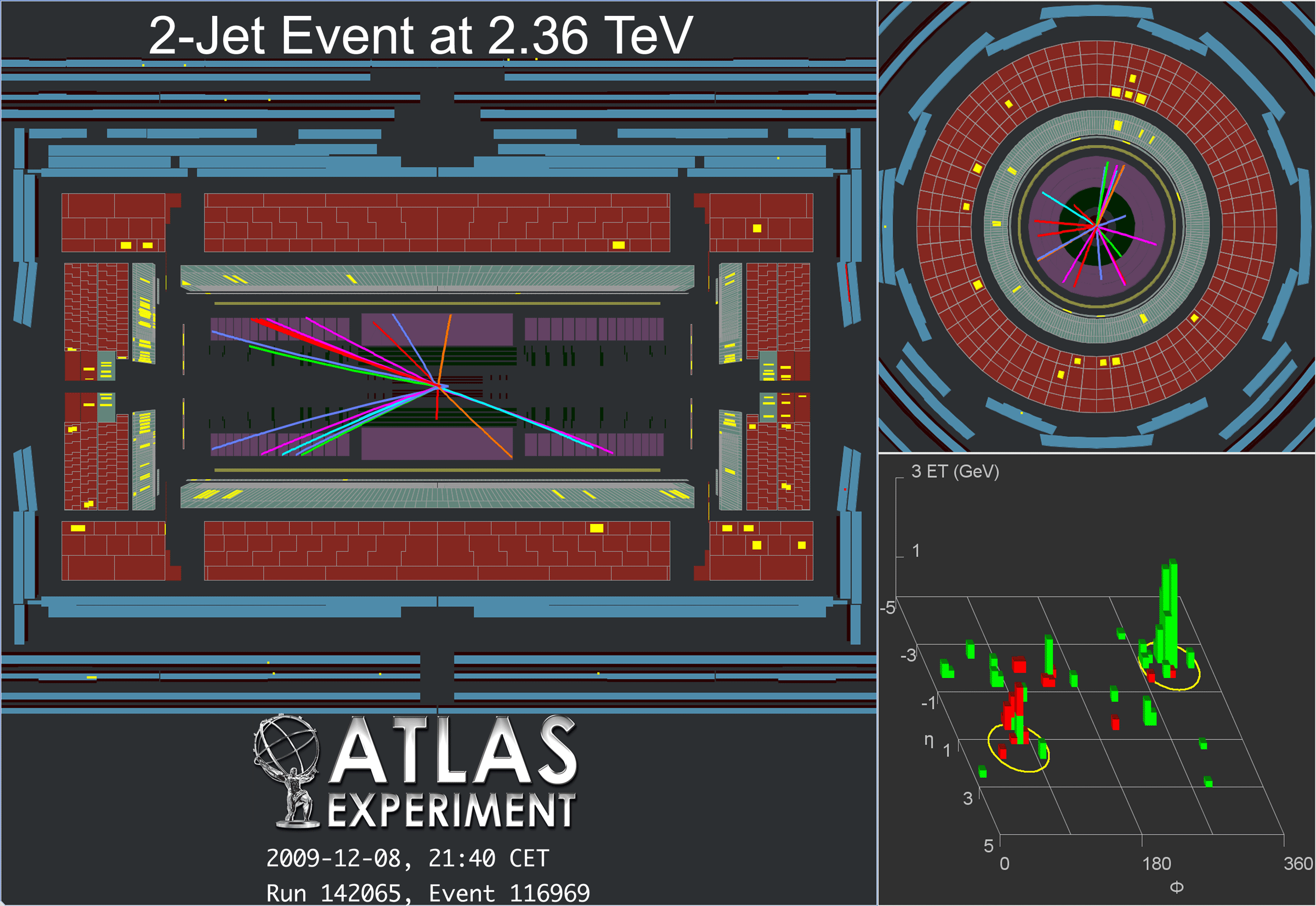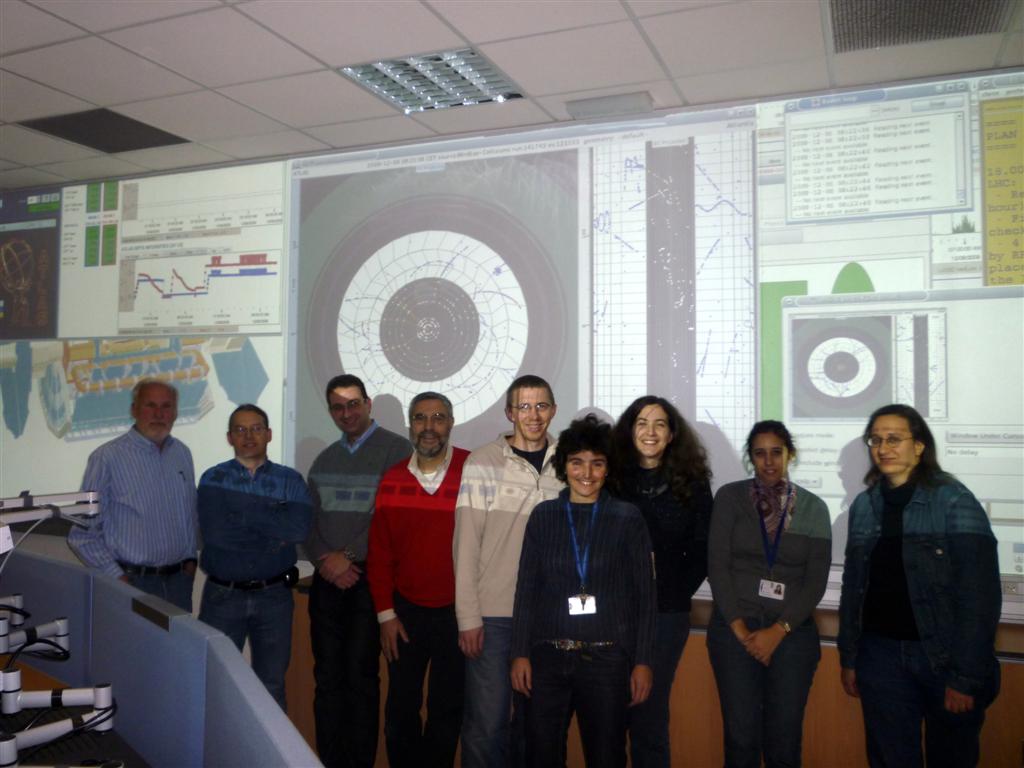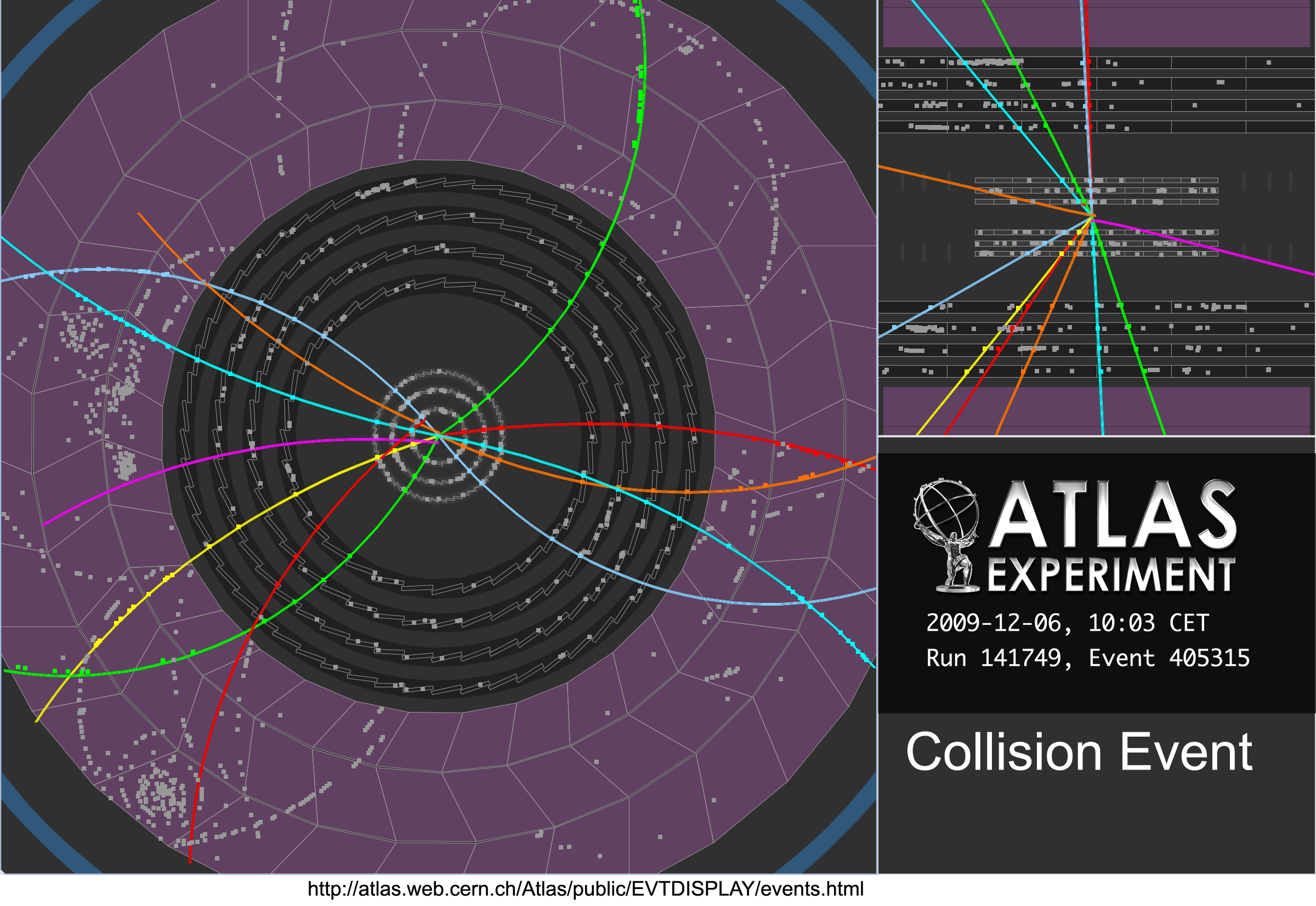Search the ATLAS Blog
From internship to authorship: one student’s unique journey in ATLAS
Blog |
ATLAS Week: through the eyes of students
Blog |
ATLAS & CMS Physicists Recover Lost Higgs Boson
Blog |
Developing the ATLAS End-Cap Toroids: a personal history
Blog |
Building an ATLAS gingerbread wonderland
Blog |
ATLAS without Frontiers
Blog |
ATLAS pushes forward the search for a charged Higgs boson
Blog |
Building community in virtual events
Blog |
Planning an event during a pandemic
Blog |
Teaching university students with real ATLAS data
Blog |
Exploring the “coolest” mock-up
It was in 2014, just a few months after my transition from ALICE to ATLAS, that I saw the mock-up for the first time: a full-scale wooden reproduction of the central portion of the ATLAS experiment, measuring some 8 metres high and wide.
Blog |
Connecting during COVID-19: Updates from the (physically but not socially distanced) Early Career Scientist Board
As a community, we need to stay in contact, remain motivated and learn from each other's experiences. The work-from-home situation is one to which everyone has to adjust, balancing personal and professional lives, while accepting the effect of the ongoing pandemic on society. Despite these challenges, the ATLAS Early Career Scientist Board (ECSB) developed a series of events to boost the morale of the ECS community and to help people connect, even when they are sitting miles away from each other. I joined the ATLAS ECSB in March 2020, and to be honest, it has felt great to be a part of something that makes a difference in people’s lives – even if it’s just to laugh together.
Blog |
You want me to present a poster…. remotely?
Though an academic affair, poster sessions are also an opportunity to network and socialise with colleagues. Typically, a large hall will be filled with rows of poster stands, their authors standing anxiously beside them, anticipating whatever question may be posed by a passer-by. Finger food and drinks are usually served. Sometimes these encounters lead to in-depth discussions about a new result but, more often than not, they just serve as ice-breakers for would-be colleagues, or a kind of “physics buffet” for conference attendees to sample subjects outside their specialization. Could such an experience be recreated in an online conference?
Blog |
Serving up new winter recipes with the ATLAS Early Career Scientist Board
In 2019, I joined the ATLAS Early Career Scientist Board (ECSB): a special advisory group dedicated to assisting the ATLAS Collaboration in building an environment where the full scientific potential of scientists at the start of their career can be realised. The board organises several activities for the ATLAS community (you may have seen all of our summer activities described in this blog). I was actively involved in the winter activities. They were all fantastic experiences to improve social relationships in a 5000-people collaboration.
Blog |
Sharing the Excitement of ATLAS
This past week, I grabbed a last-minute opportunity to wander about and take in the beauty of my favourite particle physics detector. Located 100 meters under the French/Swiss border near Geneva, ATLAS is always a marvel to see and to explore. Although I have hosted hundreds of visits by its side, I never tire of the view and inevitably pull out my phone or camera to photograph it, yet again.
Blog |
New ATLAS members, welcome on board
This summer was rich with events regularly organised by the ATLAS Early Career Scientists Board (ECSB): Induction Day, Career Q&A and the Ice Cream event. The ECSB is a special advisory group dedicated to assisting the ATLAS Collaboration in building an environment where the full scientific potential of young scientists can be realised. It consists of seven early career scientists, representing various career levels, nationalities, genders and home institutions. I have been in the thick of things as a new member of the ECSB and had a lot of new experiences. Each event was full of fantastic people and brought to its participants tonnes of useful information.
Blog |
Ten days of Trigger and Data Acquisition at ISOTDAQ
This April marked the 10th anniversary of the International School of Trigger and Data Acquisition (ISOTDAQ). It was a fantastic event that united researchers in physics, computing and engineering, ranging from undergraduate students to post-doctoral scientists. The goal of the school was to teach the "arts and crafts" of triggering and data-acquisition for high-energy physics experiments through a series of lectures and hands-on laboratory exercises.
Blog |
Boosting high-energy physics education around the world with ATLAS Open Data
Since the beginning of ATLAS, collaboration members have devoted hours, days, weeks and months teaching High Energy Physics (HEP) to anyone willing to listen. But sometimes those willing to listen do not have the means, especially when oceans and continents separate them from our experiment in Geneva. How can we overcome these geographical distances to allow anyone interested in HEP to learn?
Blog |
International conferences: interesting physics & instant excitement
What a start it's been to my first conference! I was lucky enough to join the 39th International Conference on High Energy Physics (ICHEP), the biggest conference in High Energy Physics. About 1000 physicists are currently gathered in Seoul, presenting results from all across the field. Getting to visit South Korea plus hearing about cutting-edge physics sounded like a 5-star recipe to me!
Blog |
Waiting for physics: Stable beams!
Following the first “beam splash” tests in early-April, the ATLAS experiment awaited the next milestone on the road to data-taking: "stable beams". This is when the LHC proton beams are aligned, squeezed, focused and finally steered to collide head-to-head. It is an important test, as it allows us to verify that the collision mechanism is ready to take data that are good for physics studies.
Blog |
Waiting for physics: Splashing beams
Each year, around mid-spring, the giant LHC accelerator wakes up from its winter maintenance and gets ready for a new feverish period of data taking. But before smashing protons once again, some tests have to be done, to check that everything is in order and that the machine can accelerate and collide particles properly, as it did before the shutdown.
Blog |
Angels and Teachers
I met beautiful people in Los Angeles earlier this month: smart, talented students, all destined for great careers. They welcomed me to their high schools and their after-school programmes, all well-equipped with computing, electronics, a robotics lab and, above all, a brilliant staff of teachers.
Blog |
Reaching out across cultures
This past Spring, I had the opportunity to travel to Taos, New Mexico, USA, to work with artist Agnes Chavez, on one of her “Projecting Particles” workshops. Her innovative programme aims to develop STEM (Science, Technology, Engineering, Math) skills in students aged 8 and up, employing a mixture of science education and artistic expression. It is a winning combination for everyone involved.
Blog |
The art of physics
I have been doing some work with artists recently. Not that I’m planning a career change, you know: I just love to talk about my research to anyone who is prepared to listen, and lately it’s been with artists. Ruth Jarman and Joe Gerhardt, aka Semiconductor, are internationally renowned visual artists who in 2015 won the Collide@CERN Ars Electronica Award and spent a two-month residency at CERN. Like myself, they live in Brighton, which is also home to the University of Sussex, where I work.
Blog |
How to run a particle detector
If you are interested in particle physics, you probably hear a lot about the huge amount of data that is recorded by experiments like ATLAS. But where does this data come from? Roughly speaking: first you have to plan, build and maintain an experiment and in the end you need people to analyse the data you’ve recorded. But what happens in between? What happens in the day-to-day life of people in the ATLAS control room, who are responsible for keeping all that great data coming?
Blog |
Something old, something new: perspective of LHCP2017
More than 400 physicists from around the world visiting Shanghai to hear the latest LHC results, at the fifth annual Large Hadron Collider Physics (LHCP17) conference. It was a wonderful opportunity for Chinese particle physicists and students, who do not often have the chance to travel abroad! Even for me, although I have been working on the LHC for almost 10 years, this was still my first time attending such a high-level conference to hear the first-rate physics results from all four experiments at the Large Hadron Collider.
Blog |
Is there life after physics?
Am I going to dedicate my entire life to high-energy physics? Am I qualified to work in another field, if I wish to? These are questions we may ask ourselves as we near the end of a contract. On Tuesday 29 November, the four experiments, ATLAS, ALICE, CMS and LHCb, organized a meeting with some of their former physicists who had decided to take the plunge into the business world.
Blog |
What happens when energy goes missing?
Here at ATLAS, we like to consider ourselves pretty decent at tracking down particles. In fact, we do it every day. Just because a proton-proton collision doesn’t produce the next Nobel Prize winning particle doesn’t mean we can ignore it. Teams of physicists are still combing through every single event, rebuilding known particles out of the signals they leave us
Blog |
The many faces of research
Ever since the age of 10, as far as I remember, I have been fascinated by technical and natural sciences, especially physics. I loved building (and repairing) experiments or things. As a result, in high school I happily attended an advanced course in physics and continued my studies at RWTH Aachen University (Germany).
Blog |
Higgs over easy
My colleagues and I are in town to attend the 22nd International Conference on Computing in High Energy and Nuclear Physics (CHEP 2016, for short). I like to think of us as the nerds of the nerds. Computing, networking, software, middleware, bandwidth, and processors are the topics of discussion, and there is indeed much to talk about.
Blog |
ICHEP results presented with style!
For those of you with an affinity for Twitter, you’ll know that the ICHEP press crew have been utilising all of their dark arts to bring you the most interesting results as they’re presented at ICHEP 2016.
Blog |
A busy day in the life of high energy physicist
My work involves analyzing data to try to understand how nature works at the most fundamental level, by searching for new particles and ways in which they interact. Specifically, I am looking at the top quark, which is the heaviest fundamental particle known to exist, with a mass of about 180 times that of a proton.
Blog |
An insider view of the "marten affair"
Friday morning, 29 April 2016: what was expected to be a productive shift turned out to be very different.
Blog |
Spring celebrations in Pisa as the LHC restarts
PP@LHC is an Italian conference with important contributions by foreign institutes, focused on the proton-proton physics performed at the LHC by the ATLAS, CMS and LHCb experiments. The aim of this year’s edition was not only to give an overview on the current status of LHC research, but to focus on future challenges with the upcoming new data.
Blog |
One does not simply give a talk at Moriond
The third day of the Moriond QCD conference was dedicated to quantum chromodynamics (QCD), the theory that describes strong interactions itself.
Blog |
Bumps in the light
Here we are at the second blog from the Moriond QCD conference and, as promised, I will discuss a bit of physics.
Blog |
First impressions from the Moriond conference
My name is Mario Campanelli, and I am a physicist who has been working for about 9 years on the ATLAS experiment, as part of the academic staff of University College London. This is the first time I write a blog, but I do have quite an experience in communicating science to the public, having guided visitors around CERN since I started working there as a PhD student 20 years ago, and also having written two books for the general public. Since Saturday I have been in La Thuile, a mountain resort in the Italian Alps, for the Rencontres de Moriond - arguably the most important winter conference in particle physics.
Blog |
One week to do it all – Day 3: Preparing for Stable Beam
Tuesday at 23:55 I called the ATLAS shift leader and told them to stop the elastic physics run and ramp down the inner detector as the elastic program was over.
Blog |
One week to do it all – Day 1: Setting up
I have the pleasure to work for a very special sub-detector of ATLAS, called “Absolute luminosity For ATLAS” or ALFA in short.
Blog |
The hills are alive, with the sound of gravitational waves
It’s 16:00 CET at CERN and I’m sitting in the CERN Main Auditorium. The room is buzzing with excitement, not unlike the day in 2012 when the Higgs discovery was announced in this very room. But today the announcement is not from CERN, but the LIGO experiment which is spread across two continents. Many expect the announcement to be about a discovery of gravitational waves, as predicted by Einstein in 1916, but which have remained elusive until today…
Blog |
Top 2015: Mass, momentum and the conga
The top quark conference normally follows the same basic structure. The first few days are devoted to reports on the general status of the field and inclusive measurements; non-objectionable stuff that doesn’t cause controversy. The final few days are given over to more focused analyses; the sort of results that professors really enjoy arguing about.
Blog |
TOP 2015: Top quarks come to Italy!
The annual top conference! This year we’re in Ischia, Italy. The hotel is nice, the pool is tropical and heated, but you don’t want to hear about that, you want to hear about the latest news in the Standard Model’s heaviest and coolest particle, the top quark! You won’t be disappointed.
Blog |
Leptons & photons meet dragons, castles and multiverses in Ljubljana
The XXVII edition of this classic conference (Lepton-Photon) brought together more than 200 scientists from around the world in the lovely city of Ljubljana, Slovenia. This year’s edition was a bit special, as it featured poster presentations that gave young researchers (including many ATLAS members) the opportunity to show their work.
Blog |
Lepton Photon 2015: Into the dragon’s lair
This was my first time in Ljubljana, the capital city of Slovenia – a nation rich with forests and lakes, and the only country that connects the Alps, the Mediterranean and the Pannonian Plain. The slight rain was not an ideal welcome, but knowing that such an important conference that was to be held there – together with a beautiful evening stroll – relaxed my mind.
Blog |
Lepton Photon 2015
This was my first time in Ljubljana, the capital city of Slovenia – a nation rich with forests and lakes, and the only country that connects the Alps, the Mediterranean and the Pannonian Plain. The slight rain was not an ideal welcome, but knowing that such an important conference that was to be held there - together with a beautiful evening stroll - relaxed my mind.
Blog |
Getting ready for the next discovery
I’m just on my way back home after a great week spent in Ljubljana where I joined (and enjoyed!) the XXVII edition of the Lepton-Photon conference. During the Lepton-Photon conference many topics were discussed, including particle physics at colliders, neutrino physics, astroparticle physics as well as cosmology.
Blog |
BOOST outreach and Particle Fever
Conferences like BOOST are designed to bring physicists to think about the latest results in the field. When you put 100 experts from around the world together into a room for a week, you get a fantastic picture of the state of the art in searches for new physics and measurements of the Standard Model.
Blog |
A boost for the next discovery
I arrived in Chicago for my first conference after the first long LHC shutdown, where new results from the two big experiments ATLAS and CMS were to be shown. Before the beginning of the conference on Monday, I had one day to fight against jetlag and see the city – certainly not enough time to see everything!
Blog |
Boost and never look back
When I arrived in Chicago this last Sunday for the BOOST conference I had a pretty good idea what new results we were going to show from ATLAS. I also had some rough ideas of what our friends from the other experiments and theory groups would be up to. What I didn’t expect was to see an ad that would fit the conference so nicely!
Blog |
A summer evening in the ATLAS control room
The sun has already set over Geneva when I finally walk out from the ATLAS control room. We have been waiting for beams to be injected into the machine since the early hours of the afternoon, but without much success so far. Just a regular day for the most ambitious particle accelerator mankind has ever built, but a pretty boring afternoon for our entire shift crew.
Blog |
From ATLAS Around the World: Brief history of Morocco in ATLAS
In 1996, Morocco officially became a member of the ATLAS collaboration. The eagerly awaited day had finally arrived, and the first Arabic and African country signed a collaborative agreement with CERN to participate in the great scientific adventure of particle physics.
Blog |
From ATLAS Around the World: Triggers (and dark) matter
To the best of our knowledge, it took the Universe about 13.798 billion years to allow funny looking condensates of mostly oxygen, carbon and hydrogen to ponder on their own existence. Some particularly curious specimens became scientists, founded CERN, dug several rings into the ground near Geneva, Switzerland, built the Large Hadron Collider, and also installed a handful of large detectors along the way.
Blog |
From ATLAS Around the World: Working with silicon in Japan
I joined the ATLAS experiment in 2012 after graduating from the University of Tokyo, however my previous experience was completely different from collider physics. During my Master’s course, I focused on the behaviour of a kind of silicon detector operated in Geiger mode. At that time, the experiments at CERN looked like a “castle” to me.
Blog |
From ATLAS Around the World: Faster and faster!
Faster and Faster! This is how it gets as soon as LS1 ends and the first collisions of LHC Run 2 approaches. As you might have noticed, at particle physics experiments we LOVE acronyms! LS1 stands for the first Long Shutdown of the Large Hadron Collider.
Blog |
From ATLAS Around the World: The oldest observer state of CERN is no longer just observing!
If you have ever been to a bazaar in Turkey, you would know that you have to bargain hard and you have to carefully examine what you buy. Sometimes this attitude goes way too far. In our case about half a century… Turkey had been an observer state of CERN since 1961 but as of 6 May 2015.
Blog |
From ATLAS Around the World: First blog from Hong Kong
Guess who ATLAS’ youngest member is? It’s Hong Kong! We will be celebrating our first birthday in June, 2015. The Hong Kong ATLAS team comprises members from The Chinese University of Hong Kong (CUHK), The University of Hong Kong (HKU) and The Hong Kong University of Science and Technology (HKUST), under the the Joint Consortium for Fundamental Physics.
Blog |
From ATLAS Around the World: African horizons
It’s great being back at CERN and being able to immerse myself in the tangible atmosphere of excited anticipation for the first collisions at 13 TeV this June. I am a South African, usually based in Durban — a city currently afflicted with xenophobically motivated riots and rolling blackouts. Being at CERN is really a different world right now, to a greater extent than usual.
Blog |
From ATLAS Around the World: A view from Down Under
While ATLAS members at CERN were preparing for Run 2 during ATLAS week, and eagerly awaiting the beam to re-circulate the LHC, colleagues “down under” in Australia were having a meeting of their own. The ARC Centre of Excellence for Particle Physics at the Terascale (CoEPP) is the hub of all things ATLAS in Australia.
Blog |
From ATLAS Around the World: Preparing for Run 2 from Colombia
After a two-year stay at CERN, I moved back to Colombia in 2012. Being involved in ATLAS and working from Colombia has been a great experience for me; I get to continue contributing to the physics searches and also do other things like teaching, giving seminars, and doing outreach activities.
Blog |
A week of firsts
The annual conference, Moriond, is in its 50th edition this year, and I’ve had the pleasure of coming down to Aosta in Italy to participate in the QCD session; for the first time. It’s actually a week of firsts for me. The conference organizers described it as being in a kind of “QCD confinement”.
Blog |
Moriond Electroweak: physics, skiing and Italian food
If you’re a young physicist working in high energy physics, you realize very soon in your career that “going for Moriond” and “going to Moriond” are two different things, and that neither of the two means that you’re actually going to Moriond. This year’s “Moriond Electroweak” was held in the Italian mountain resort of La Thuile, and had a special significance.
Blog |
The Ties That Bind
A few weeks ago, I found myself in one of the most beautiful places on earth: wedged between a metallic cable tray and a row of dusty cooling pipes at the bottom of Sector 13 of the ATLAS Detector at CERN. My wrists were scratched from hard plastic cable ties, I had an industrial vacuum strapped to my back, and my only light came from a battery powered LED fastened to the front of my helmet. It was beautiful.
Blog |
The Art of Rediscovery
When I tell people I’m a particle physicist, one of the most frequent questions I get asked is: “So, have you discovered anything?” Funnily, I’ve spent much of the past two years trying to rediscover something that’s already been seen before. In today’s world, which fetishizes the New, this may seem slightly lame, but just because we’ve discovered something, doesn’t mean we’ve fully understood it.
Blog |
Defending Your Life (Part 3)
This is the last part of my attempt to explain our simulation software. You can read Part 1, about event generators, and Part 2, about detector simulation, if you want to catch up. Just as a reminder, we’re trying to help our theorist friend by searching for his proposed “meons” in our data.
Blog |
Defending Your Life (Part 2)
I’ve been working on our simulation software for a long time, and I’m often asked “what on earth is that?” This is my attempt to help you love simulation as much as I do.
Blog |
Doing Physics in Vietnam
One of the perks of working in our field is the opportunities we get to go to exotic places for conferences. I always felt the HEP-MAD conference in Madagascar would top this list, but the one some of us went to in Vietnam can't be too far behind. The Rencontres du Vietnam conference series has been organised in the coastal town of Quy Nhon since 2011, covering different physics topics. This year, one of them was titled Physics at the LHC and Beyond, where I had the privilege of presenting ATLAS soft QCD results.
Blog |
Defending Your Life (Part 1)
Having spent many hours working on the simulation software in ATLAS, I thought this would be a good place to explain what on earth that is (H/T to Al Brooks for the title). Our experiment wouldn’t run without the simulation, and yet there are few people who really understand it.
Blog |
Identity problems
An obligatory eye scan is required for all ATLAS underground personnel entering the experimental cavern. The iris recognition is performed by the IrisID iCAM7000. Its only point in life is to keep track of who enters and leaves the Zone. It sounds like a simple task for such an advanced technology, but -- like most things in the world of research -- it's never without some hiccups.
Blog |
Taking stock at the LHCP conference
I felt like I was returning home as I walked through the gates of Columbia University at 116th Street and Broadway, the day before the LHCP conference began. The scaffolding from the recently completed graduation ceremonies reminded me of my own PhD graduation thirteen years ago. The ubiquitous Columbia-blue signs of "Welcome back Alumni" seemed to be talking just to me.
Blog |
LHCPlanning for the future
As someone who comes from a small mountain town, for many years I've linked the word 'summer' to 'seaside' and 'sun'. During my experience as a physicist working in ATLAS, I found myself associating the word 'conferences' to the word 'summer' more often than to the two above.
Blog |
Notes from Underground: IBL vs Brazil Championship
Previously in Notes from Underground, Dave Robinson wrote in some detail about the work going on inside the ATLAS Detector, and Clara Nellist wrote about the inner detector of ATLAS, discussing the different types of detection units or Sensors (Planars & 3D). I will continue to delve into the exciting world of the inner detector with its brand new Insertable B-Layer (IBL) and its related parts.
Blog |
Notes from underground: Pixel prototypes
In last week’s post for this Notes from Underground series, David talked about the work that goes on in the ATLAS pit. I'm going to take a step back and talk about what happens before a detector is installed. Although the work I want to tell you about didn't technically take place underground, much of it was performed in what is essentially a large airport hangar without natural light, so it certainly feels like you’re 100m down!
Blog |
Notes from Underground: Servicing Silicon
We physicists refer to the vast underground cavern that houses the ATLAS experiment as ‘the pit’. That may be a strange term to use for a marvel of civil, mechanical and electrical engineering, but nonetheless there are parallels to what you might imagine a ‘pit’ to be. Working inside the ATLAS detector in the pit can be dark, sometimes hot and not suited to those with claustrophobia. It often involves climbing several sets of makeshift steps and gantries and crawling flat on your stomach through narrow gaps to get to the part of the detector where you need to be. You will be wearing a safety helmet with mounted lamp, steel toe-cap shoes, one or more dosimeters to monitor radiation exposure and even a harness, if working at heights. Not to mention tools, laptop and any equipment you need to do your job. You tend to recognize the experimental physicists, engineers and technicians who have just come up from the pit – they stand blinking in the sunlight with a tired and rather sweaty appearance.
Blog |
Unread section opened in the Standard Model book
While others are worrying that new physics might be running out of corners (see Eve Le Ménédeu's blog) we should not forget that even within the book of the Standard Model there are completely unread chapters. The Standard Model draws its success from the fascinating fact that its basic energy density formula, called Lagrangian, is uniquely defined by just specifying three fundamental symmetries.
Blog |
Is new physics running out of corners?
Friday was the last occasion for Moriond participants to see new results on specific physics topics since Saturday is reserved for summary talks. The topic was 'Beyond the Standard Model' -- a very large subject, which covers an incredible number of theoretical models, from Supersymmetry to Two-Higgs-Doublet Models, two of the most discussed topics of the day.
Blog |
Dark Matters
The winter conference season is well under way, and what better way to fill my first blog post than with a report from one of the premier conferences in particle and astroparticle physics: the Rencontres de Moriond.
Blog |
The Neutrino Puzzle
Having explored the latest results on what we call 'heavy flavour' or physics of particles containing a b-quark (see The Penguin Domination by Jessica Levêque), we embarked on a much lighter subject: neutrinos.
Blog |
No matter how hard you try... Standard is standard
The past two days of the Recontres de Moriond 2014 Electroweak conference have been very intense with many new experimental results, many insightful theoretical talks and many lively discussions. Since the topics cover neutrino experiments, astrophysical observations and Standard Model precision measurements, giving a summary is not an easy task. But I will try.
Blog |
The Penguin Domination
This week features the 2014 Moriond Electroweak conference at La Thuile, Italy. More than a 100 particle physicists gather from all around the world. Started 50 years ago, this conference is still very valued, year after year, due to the high quality of the talks. The Moriond winter conference is one of the most exciting conferences, as all the particle physics experiments present their brand new results, but it is also appealing because of the mountains and the great Italian food.
Blog |
Letters from the Road
I've been lucky to get to make two workshop / conference stops on a trip that started at the very beginning of October. The first was at Kinematic Variables for New Physics, hosted at Caltech. Now I'm up at the Computing in High Energy Physics conference in Amsterdam. Going to conferences and workshops is a big part of what we do, in order to explain our work to others and share what great things we're doing, in order to hear the latest on other people's work, and - and this one is important - in order to get to talk with colleagues about what we should do next.
Blog |
So where is all the SUSY?
Supersymmetry (SUSY) is one of the most loved, and most hated, theories around that works as an extension of our beloved Standard Model.
Blog |
Snowmass from Afar
There's a (potentially) really big deal in physics that's just ended: the Snowmass conference. Ken over at the USLHC blog has already mentioned it, and I've been watching with interest from here in Geneva as well. The meeting, and its reports, are trying to walk an extrodinarily delicate line that's interesting for both the physics and the sociology involved.
Blog |
A Few Missing Steps
After a long hiatus from US ATLAS, I recently started a new job at the Lawrence Berkeley National Laboratories. It's one of the few remaining labs in the US funded by the Department of Energy that does basic science research. It's the fourth job I've had in four years, all working on ATLAS, and all working on similar projects. This one is different, though: if I pass a performance review a few years from now, I'll have the lab-equivalent of tenure. I've had reactions ranging from "who did you have to kill to get that job" to "so who did you actually talk to to land that"?
Blog |
Want a small scale LEGO® version of the ATLAS detector?
A small scale version of the ATLAS detector can be made available as an official LEGO® product, but I need people to vote for it at LEGO Cuusoo. We need 10,000 votes to be considered by LEGO®.
Blog |
Report from DIS 2013
The series of workshops named "Deep Inelastic Scattering (DIS)" started way back in Durham, UK in 1993. In the last twenty years, particle physics has evolved in many ways, and this years DIS held at Marseille between April 22-26th was a testament to that fact. While it was one of the biggest conference in terms of Standard Model physics talks from ATLAS, it included talks and latest results covering the full ATLAS (and other big LHC experiments) physics program.
Blog |
Moriond EW feedback
"Moriond", that's an important keyword in our collaboration. It's the winter deadline for many analyses, the occasion to see first results with the whole set of data collected in the past year. An important conference, one of the milestones of the year.
Blog |
TOP 2012 - Part 2
Welcome back, dedicated top quark enthusiast. I’m sure you’ve all been waiting on the edge of your seats for an update from TOP 2012, and I can now confirm that a combined team of LHC & Tevatron physicists narrowly beat a mixed team of physicists from LHC & Tevatron at croquet.
Blog |
TOP 2012 - Part 1
Greetings from the TOP 2012 conference, Winchester UK! What’s a ‘Winchester’ I hear you asking? A type of gun? Indeed yes, though sadly not of the smoking variety that we’re all so keen to find. However in this particular case Winchester is a historical town in the south of England, complete with the typical rolling green fields, a cathedral, and the not so typical contingent of visiting physicists!
Blog |
What should we know about the Higgs particle?
On the 4th of July, CERN announced the discovery of a new particle that can be interpreted as the Higgs boson with both the ATLAS and CMS experiments. Since this is one of the most important discoveries over the last 10 or 20 years in particle physics, let’s have a look to the full story.
Blog |
A new particle is born, but who is the father?
We have discovered a particle. It is perhaps the particle everybody has been looking for but, for now, let us just call it a particle possibly known as the Higgs.
Blog |
Melbourne Dispatch: A First Coming To Terms with Discovery
Where to begin? The 4th of July, 2012 will remain burned in the memories of those of us fortunate to be delegates at this historic 36th International Conference on High Energy Physics (#ICHEP2012) in beautiful Melbourne, Australia.
Blog |
Very exciting day at CERN about the Higgs??!
Good morning science addicts and everyone! What a special day at CERN today! Indeed, the ATLAS and CMS experiments have just released some outstanding results and observations about the search for the Higgs boson, and the ATLAS and CMS spokespersons (Fabiola Gianotti, and Joe Incandela) just presented those results in the main auditorium at 9 a.m (CERN time).
Blog |
Quark Excitement: Is there anything smaller?
The Large Hadron Collider commands many superlatives. One of the most useful of these is that the LHC is our planet's most powerful human-built microscope. The higher the collision energy, the tinier the distances you can study.
Blog |
What does 8 TeV mean?
Inspired by Regina Caputo’s excellent post on the CERN accelerator complex, I thought I should give you some fun facts about the LHC (in “human units”).
Blog |
Needle in a haystack
The LHC is designed to collide bunches of protons every 25 ns, i.e., at a 40 MHz rate (40 million/second). In each of these collisions, something happens. Since there is no way we can collect data at this rate, we try to pick only the interesting events, which occur very infrequently; however, this is easier said than done. Experiments like ATLAS employ a very sophisticated filtering system to keep only those events that we are interested in. This is called the trigger system, and it works because the interesting events have unique signatures that can be used to distinguish them from the uninteresting ones.
Blog |
Moriond day 3: The day of the Higgs
(I'm not skipping day 2, about heavy flavors and my own talk, but I think today's topic merits a reshuffling)
Blog |
Moriond day 2: Inverse time dilation
I work with crazy particles. Dark matter is pretty weird, so are neutrinos seemingly, but what I search for blows it all away. Tuesday was the day of my presentation. The format for these young scientist presentations are 5 minutes and time for a single question afterwards. Trying to present a full picture of any analysis in that short a time is impossible; instead the idea is more like handing out a business card telling the audience what you work on in the hope that some will be interested and contact you informally afterwards.
Blog |
Moriond day 1: The outer limits
Not many trips take you to all ends of the world in one day, but that was nevertheless how it felt after the first talks at Moriond. Sunday and Monday have mainly featured presentations on neutrino and dark matter physics. Many of these experiments are placed in remote regions or deep under ground.
Blog |
Mystical Moriond
As a young physicist not many conferences have the same mystical status as Rencontres de Moriond. This gathering of physicists from all areas of particle physics is one of most anticipated events of the year. More a gathering than a conference, Moriond started in 1966 and has inspired many similar events. Presentations, time for discussion and recreation is combined to inspire and foster collaboration and new ideas. Another element is the meeting between young and more experienced scientists. Nearly half of the talks are given by young participants below 35 like myself. I was invited by the ATLAS collaboration to present our latest results on a search for a type of long-lived particles that has meant a lot to me for the last two years.
Blog |
From 0-60 in 10 million seconds! – Part 2
This is continuing from the previous post, where I discussed how we convert data collected by ATLAS into usable objects. Here I explain the steps to get a Physics result. I can now use our data sample to prove/disprove the predictions of Supersymmetry (SUSY), string theory or what have you. What steps do I follow?
Blog |
From 0-60 in 10 million seconds! – Part 1
OK, so I’ll try to give a flavour of how the data that we collect gets turned into a published result. As the title indicates, it takes a while! The post got very long, so I have split it in two parts. The first will talk about reconstructing data, and the second will explain the analysis stage.
Blog |
7 or 8 TeV, a thousand terabyte question!
A very happy new year to the readers of this blog. As we start 2012, hoping to finally find the elusive Higgs boson and other signatures of new physics, an important question needs to be answered first - are we going to have collisions at a center of mass energy of 7 or 8 TeV?
Blog |
Tweeting live #Higgs boson updates from #CERN
“If it’s just a fluctuation of background, it will take a lot of data to kill.” Dr. Fabiola Gianotti, spokesperson for the ATLAS collaboration, made this statement on Dec. 13, 2011 during a special seminar I attended at CERN. Within the minute that followed, I hurriedly concocted a tweet, tacked on #Higgs and #CERN hashtags, and sent Fabiola’s weighty comment out onto the WWW.
Blog |
Joining forces in the search for the Higgs
Today we witnessed a landmark LHC first: At the HCP conference in Paris, friendly rivals, the ATLAS and CMS collaborations, came together to present a joint result! This ATLAS-CMS combined Higgs search was motivated by the fact that pooling the dataset increases our chances of excluding or finding the Higgs boson over those of a single experiment. This is the first example of this kind of scientific collaboration at the LHC, and the success of the whole endeavor hinged on a whole host of thorny issues being tackled…
Blog |
Charming results that have got everybody thinking…
I’m writing from the annual Hadron Collider Physics Symposium, which began on Monday in Paris, France. It’s organised jointly by LPNHE and the University of Paris VI & VII, with an excellent location right in the heart of the Latin Quarter. HCP is a fun conference with only plenary talks, which means that I’ve had the chance to attend talks on a wide range of subjects including many quite remote from my usual areas of expertise.
Blog |
The power of perception
If you ask a child to draw a physicist, they’ll usually draw you a disheveled man in a lab coat. But looking around the hundreds of physicists eating lunch at CERN today, I saw many women, only one or two that could be classified as disheveled, and zero lab coats. Yet this image persists.
Blog |
ATLAS in Paris for a pop-up launch
It’s not every day you get to explain ATLAS to a group of journalists with just a pop-up book as a prop. But, as some readers might already know, this is no ordinary pop-up book. ATLAS and the LHC leap from the page in incredible detail thanks to paper engineer Anton Radevsky’s wonderful designs. A new edition of the book has just been released in French, so at the end of last month I found myself travelling in to the centre of Paris from Orsay for the press launch.
Blog |
The longest shift
The clock just turned 2:00 a.m., again, on LHC Page One – the machine’s online status viewer – and I’m pondering just how I ended up on the longest shift of the year. I normally love this evening, snuggling under a warm comforter for that extra hour of late-autumn sleep. But, this year, on the very hour we ‘fall back’, I am cuddling with the controls of ATLAS’s 46 meter long muon spectrometer, a bar of chocolate and an extra cup of coffee. So be it.
Blog |
Dispatch from the dispatch: Musings from the Tevatron’s final run
The first time I drove to Fermilab as a grad student, I got kind of lost. However, once I remembered my adviser’s words of advice, it was suddenly easy to find the strangely shaped Wilson Hall, a.k.a. “the highrise sticking out of the Prairies”. During my PhD years with the CDF Collaboration, I went there many a time – to attend meetings, to take shifts. The Chicago area summers were harsh, and so were the winters. On early morning shifts over the Christmas week, I realized that all too well. CDF had over five hundred collaborators at that time and this was my first introduction to a big experiment. Despite its size, everyone still seemed to know each other and it was one big happy family.
Blog |
The Tevatron: Goodnight but not goodbye
The Tevatron collider, the scientific predecessor of the LHC, was shut down last Friday after 26 years of operations. Situated at the Fermi National Accelerator Laboratory (Fermilab) outside of Chicago, Illinois, the Tevatron collided protons with antiprotons at a center-of-mass energy just shy of 2 TeV. While it still held the title of the world’s highest energy colliding beams, it was the intellectual home of hundreds of scientists and students working as part of the CDF and D0 collaborations.
Blog |
“La Nuit des Chercheurs” (Researchers’ Night)
Evening, Friday September 23rd. I came from Saclay (near Paris) to participate in the ‘Researchers’ Night’ event taking place across CERN as part of the European Researchers’ Night initiative. Students aged 13 to 18 were on their way from all around the local area to learn about what on earth it is we do at the mysterious “Point 1” – ATLAS’ home on the LHC ring. Three different groups of 10 or so students were to stay with the ATLAS team in the experiment’s control room from 6:00 p.m. until midnight, helping shifters to take data and monitor the experiment…
Blog |
ATLAS never sleeps
Working in an international laboratory like CERN is incredibly exciting, and I’m not just talking about Higgs hunting. People in the outside world are endlessly curious about what happens on the sprawling two-kilometre-long site, and I get asked all kinds of questions, ranging from the funny to the profound.
Blog |
Re-hashing reconstruction
Now that the big summer conferences are under our belts, we’re busy reprocessing the data ATLAS has taken so far in 2011. The raw data we collect at ATLAS – basically millions of electrical signal values from the different bits of the detector – has to be treated (‘reconstructed’) to turn it into meaningful physics data that can be analyzed for signs of new physics.
Blog |
Ars Atlastronica
So I’m back from the Ars Electronica 2011 festival in Linz, Austria. This year the guest of honor was CERN, to kickstart a cultural partnership which will endure over the next three years. The event was amazing, and the organization spotless. As Claudia mentioned in a previous post, CERN was well represented visually at the festival, mainly via a strong display of ATLAS multimedia throughout the many exhibit halls and events.
Blog |
Science and art collide at Ars Electronica
Located in Linz, Austria, Ars Electronica is an exhibition centre and creative lab which “has been investigating the consequences of the Digital Revolution” since the late 1970’s. Ars Electronica holds a yearly festival that attracts thousands of people from Austria, Germany and the rest of the world. This year, the theme of the festival, which is happening in collaboration with CERN, is ‘Origin – how it all begins’.
Blog |
Philosophising physics
Last Monday (August 22), within a tight 35-minute allocation, ATLAS’ Henri Bachacou presented the entirety of the results from ‘Beyond the Standard Model’ searches for BOTH the ATLAS and CMS experiments, to the Lepton Photon conference in Mumbai, India. This included results of studies on Supersymmetry, strong gravity, heavy resonances and long-lived particles, and was a staggering amount of information to convey in an extremely limited amount of time. Henri did a great job, firing through slides, and guiding the audience through the most up-to-date results from the wide range of exotic topics. He did have one thing on his side, however… from each search, from each physics topic and from each experiment, the results came back the same: Has the LHC seen anything beyond the standard model yet? Nope.
Blog |
Higgs results from Lepton Photon
The Lepton Photon 2011 conference began on Monday in Mumbai, India. Over 400 physicists from all over the world (including me!) gathered to hear the latest results. One result in particular -- news on the search for the Higgs boson -- was foremost in people's minds, and rather than prolong the suspense further, the talks on the Higgs were scheduled right after the welcoming speeches.
Blog |
Top down: Reflections on a long and sleepless analysis journey
For the last months (which feel like years…) I’ve been working, within a small group of people, on the precision measurement of the top quark pair production cross section, and if you think that sounds complicated – the German word is “Top-Quark-Paarproduktionswechselwirkungsquerschnitt”.
Blog |
Frantic for femtobarns...
In particle physics, we describe the number of interesting particle collisions that we have in our data in terms of the "integrated luminosity", which is measured in units called inverse femtobarns. In the whole of 2010, the LHC delivered about 0.04 inverse femtobarns (about 3 million million collisions). Nowadays, it can deliver twice that in a single day!
Blog |
A look back at the EPS
I happened to run into Andrey Korytov after his eagerly awaited CMS Higgs talk. No, CMS had not yet seen the Higgs, and ATLAS could breathe a sigh of relief.
Blog |
A view inside the ATLAS Higgs combination
Well it's been a few days since the Higgs presentations at EPS, and I'm just recovering from the lack of sleep. It's ironic that I have a newborn daughter, and my sleep deprivation is due to work.
Blog |
Arrival at EPS
When I was invited to give a talk on behalf of ATLAS at this summer’s European Physical Society High Energy Physics conference (EPS), I wasn’t really sure what to expect. Most conferences I have been to are relatively intimate affairs where you have long discussions after every talk and then everybody trots down to the pub together to discuss the day’s results. EPS, though, is one of the largest particle physics conferences in the world. Or at least I reckon it is, having eyeballed the number of participants registered on the website, hailing from all sorts of fields ranging from astrophysics to ultra relativistic ions to our very own LHC proton-proton collider physics.
Blog |
The inverse picobarn threshold has been crossed in ATLAS!
Another milestone has been passed in the long run of ATLAS toward new physics. On Monday August 9, 2010 ATLAS has recorded the first inverse picobarn (pb-1) of 7 TeV collisions. The trend is good and we recently reached the 0.1 pb-1 per day of integrated luminosity (meaning that we can now collect in ~10 days the amount of data we have collected over the last 4 months).
Blog |
ATLAS starting to get on Top of things
ATLAS is about to check one more particle off of its Standard Model (SM) checklist. Namely the top quark. This famous quark is perhaps one of the most complex of the SM particles.
Blog |
Sleepless Nights Lead to First Results of 2010...
Do you hear that? The incessant typing? The coffee machines vending cup after cup? If you go to Building 40, or Building 32, Building 188, or to any one of the many graduate student offices around the world, you will hear the tap of key boards, the whir of disk drives, and even the occasional heated civil discussions with "elevated" voices.
Blog |
Conversations on Shift
When the detector is running smoothly, neighbors in the ATLAS control room sometimes get conversational. A few days back I was on shift, quietly looking at plots on the monitor in front of me, trying to decide if one small sensor was misbehaving or not. “I have a question,” the shifter next to me said.
Blog |
A new record run
In the evening of Saturday May 15, we have reached a new peak luminosity record of 6 1028 cm-2s-1
Blog |
Putting the Squeeze on the Protons
It took a little bit of time, but the wait was worth it. The LHC has successfully achieved its first physics run with "squeezed beams"!
Blog |
One in a few million
ATLAS has been designed to detect rare events in high energy proton-proton collisions. ATLAS ultimate goal is to measure events as rare as one in several thousand billions, but we are modest (for the time being) waiting for the luminosity to rise.
Blog |
Its All About The Lumi!
Now that the LHC has established colliding stable beams at a center of mass energy of 7 TeV, the next step to maximize its physics reach is to provide the most luminosity possible. As Leo posted, we need to increase the number of proton - proton collisions to make sure we have a chance of seeing the physics that we are looking for. The reason for that is because different p.hysics processes have different probabilities. These probabilities are referred to as cross-sections (in a vague reference to the particle's size). If one multiplies a cross section by a luminosity than what you get is a number of events.
Blog |
Life Imitating Reality
I was home sick today, probably from the stress of getting ready for "M-Day" (aka Media Day), more likely though I finally succumbed to the cold that had been spreading through the Control Room. As it so happened, my laptop had been in the shop because it experience an "incident" (actually I just dropped it) last Monday (the week before Media Day), and I just picked it up yesterday.
Blog |
Increasing collision rate
Many collisions will be needed to unveil the secrets eventually hidden at the 7 TeV energy regime.
Blog |
Let The Physics Begin!
After decades of planning. After years of delays and immeasureable amounts of patience and hard work. The physics operations of the LHC has begun!
Blog |
First 7 Tev collisions have been recorded in ATLAS
After ramping of the beams to 3.5 TeV and tuning, final checks, and some emotions due to an unforeseen beam dump, the 7 TeV collisions finally appeared on the on-line monitors of the ATLAS Control Room.
Blog |
Expecting beam in 30 minutes!
During this morning LHC has been working to give us the beam conditions for collisions.
Blog |
How will it happen?
So how will this whole "First 7 TeV Collisions" event happen? Well, here is my (somewhat naive) understanding of what will happen.
Blog |
Approaching the End...and a New Beginning
This Tuesday, if all goes according to plan, will mark the end of a very long journey for many High Energy Physicists. The first 7 TeV Collisions will signal the end of the the commissioning period of the LHC and its experiments.
Blog |
Big step forward in LHC operation last night
Last night a new very important milestone has been reached by the LHC: two counter-circulating proton beams have been accelerated for the first time to 3.5 TeV, the energy that they should routinely reach in the 2010-2011 running period.
Blog |
3 Firsts for ATLAS in 2010
It has been a BUSY weekend! The LHC has been working around the clock get the machine commissioned, and ATLAS has been enjoying the many Firsts that have resulted.
Blog |
ATLAS celebrating the International Women's day!
Today ATLAS celebrates the role of women in physics its own way. ATLAS has encouraged its staff and users to place as many women as possible on shift in the control room and to serve as guides for official visits.
Blog |
A titan awakes
At approximately 2:40 am Central European Time, ATLAS saw particles from the LHC for the first time in 2010. As in previous LHC turn-on periods the first thing we see are beam splashes from the LHC beams as they slowly thread the beam through the LHC ring for the first time.
Blog |
The calm before the storm
The Control Room is quiet. The configurations are set. The trigger menu is uploaded. The shifters are ready. All that is left is for the LHC to deliver beam.
Blog |
Gearing-up for the 2010 run!
ATLAS has been taking cosmic rays data this month exercising new features of the data acquisition, including protocols to start and control the run.
Blog |
First Integrated Run in 2010
Today ATLAS has started the integrated runs. This has happened before, nevertheless this is the first time ATLAS subdetectors get together after the winter break, a lot of work has been done since then.
Blog |
All Bunched Up!
High Energy Physicists have been waiting for many years to see the LHC turn on. Now that it has been turned on, the network of physicists around the world have quickly been harnessed. It can be considered a phase transition in particle physics.
Blog |
Just a taste
At 21:32 pm on December 8th, the LHC did something that no other accelerator has ever done before.
Blog |
ATLAS increases its active channel count by one order of magnitude
On Sunday December 6, 2009 at 8.00 the ATLAS Pixel Detector has measured, for the first time, tracks emerging from LHC collisions. It has been a very smooth start.
Blog |
First collisions with the pixel detector
It's been a busy weekend for ATLAS. Last night, well, actually early this morning, we received the "stable beam" flag from the LHC.
Blog |

